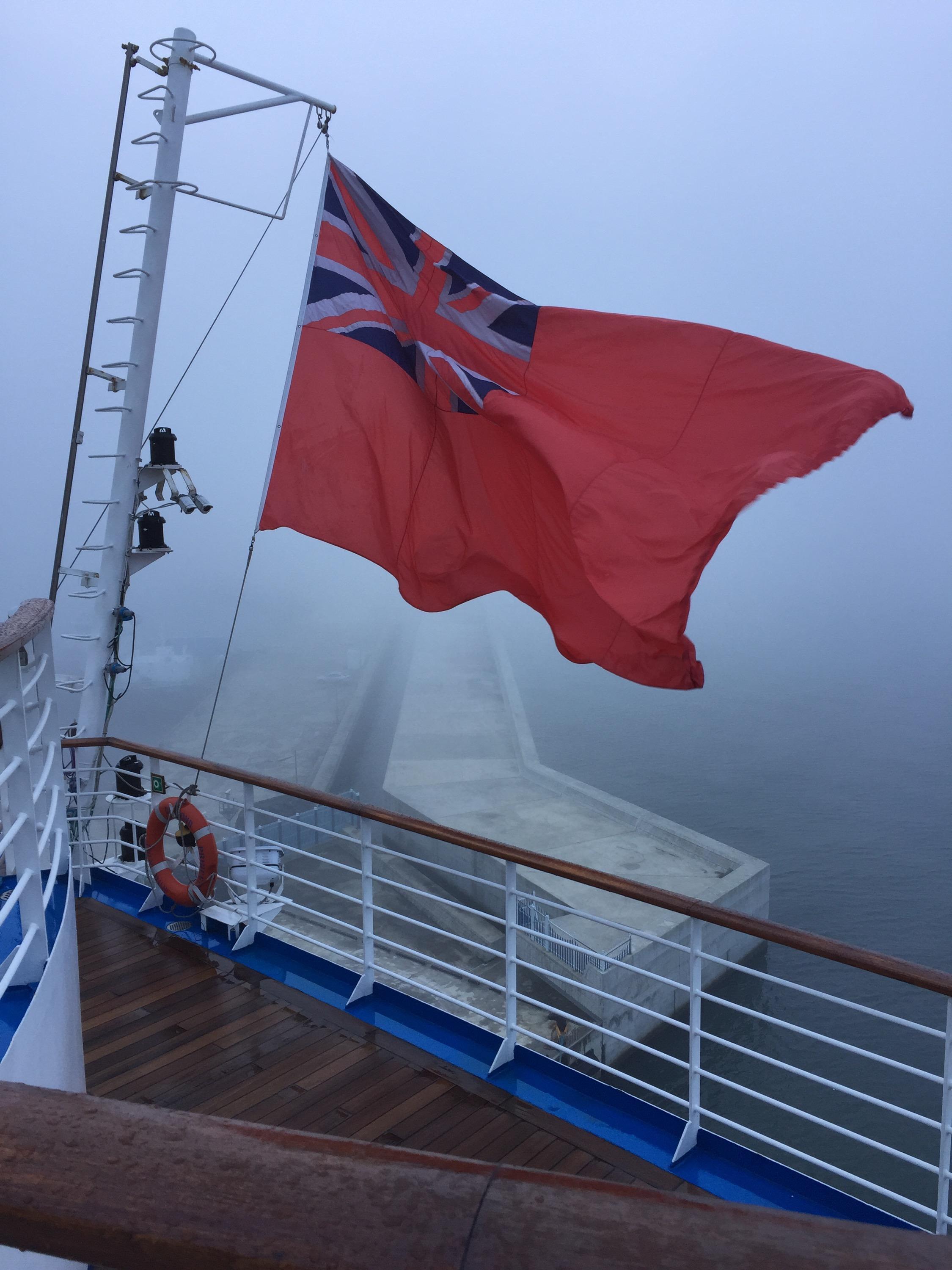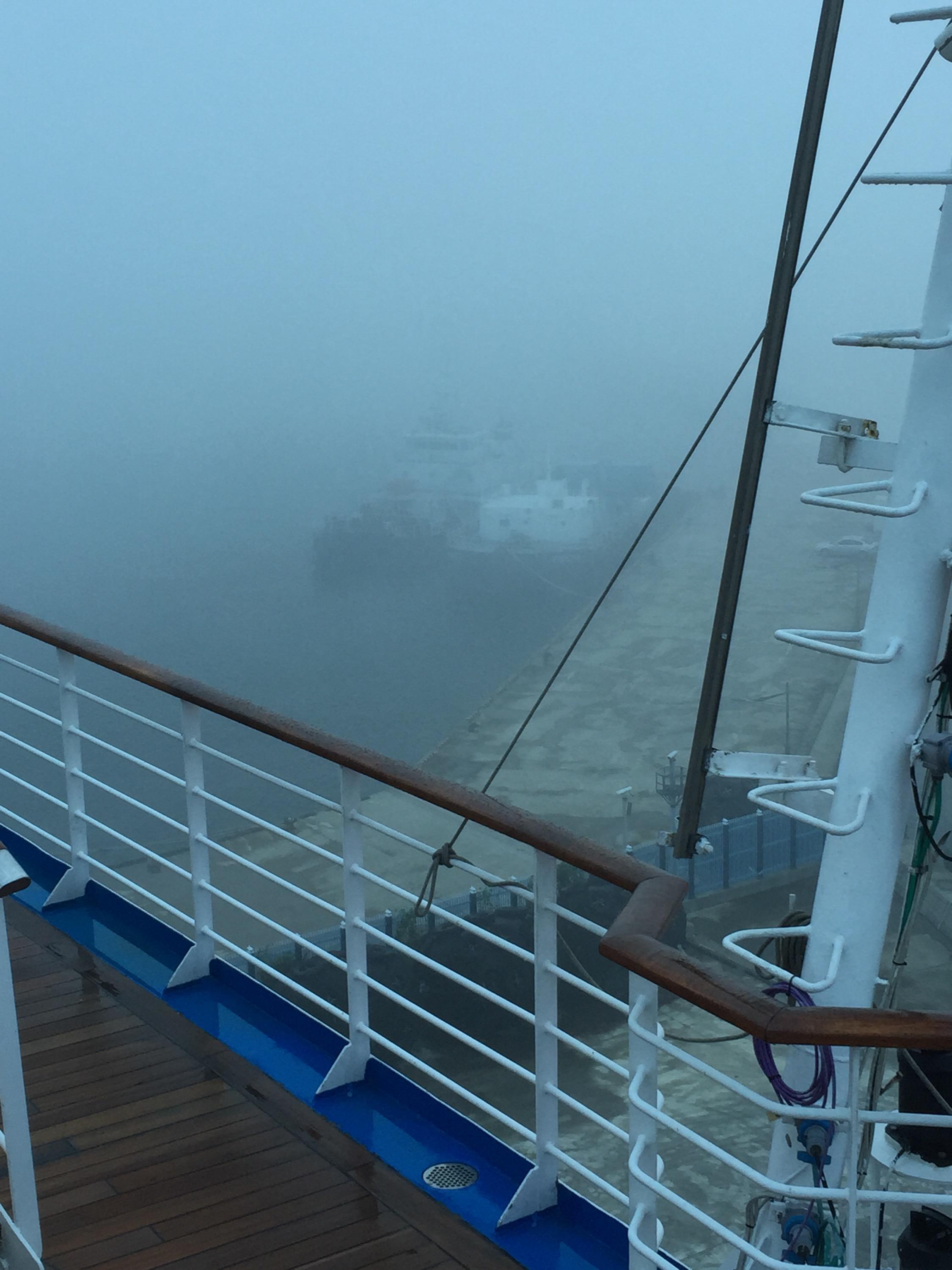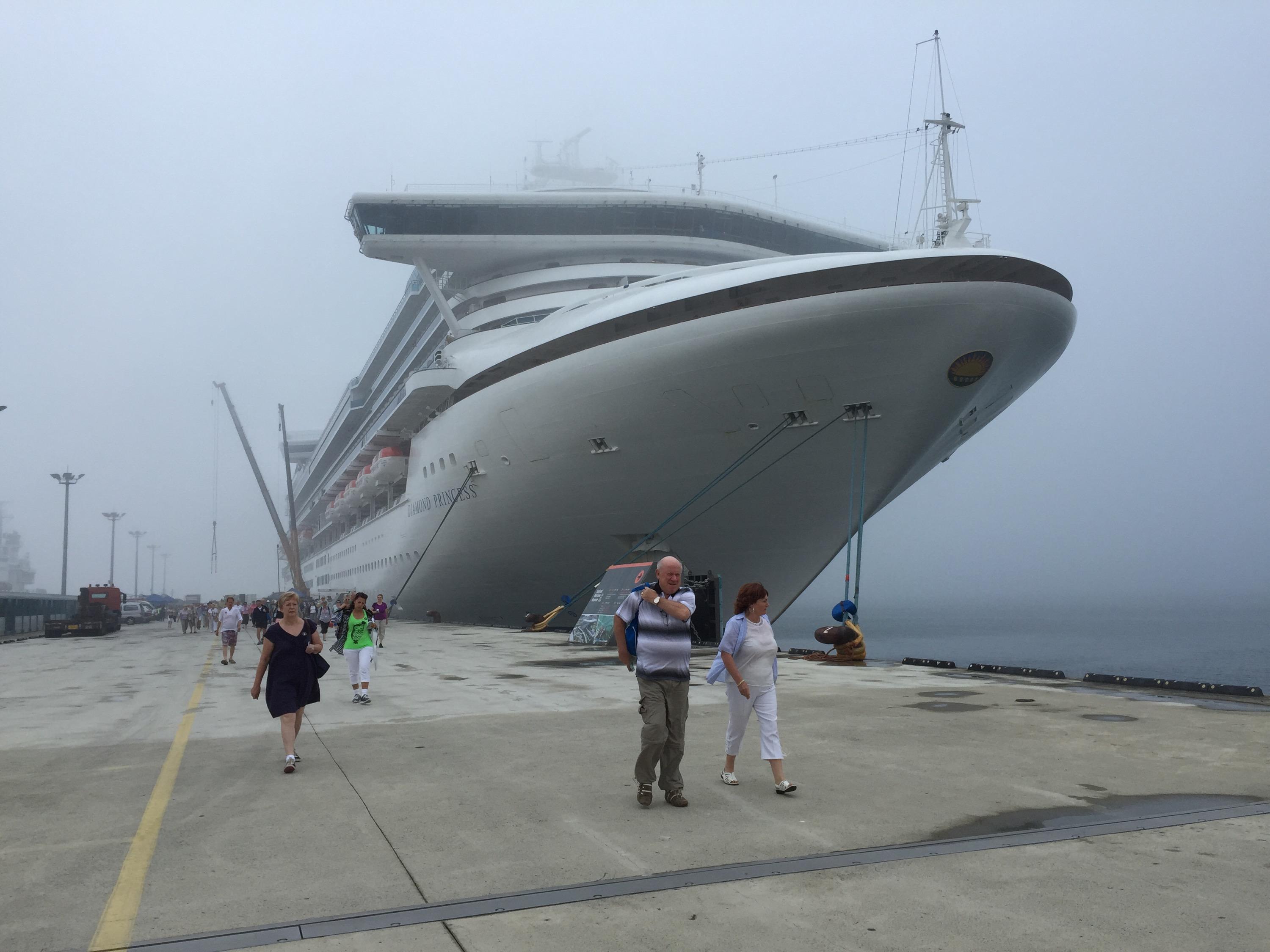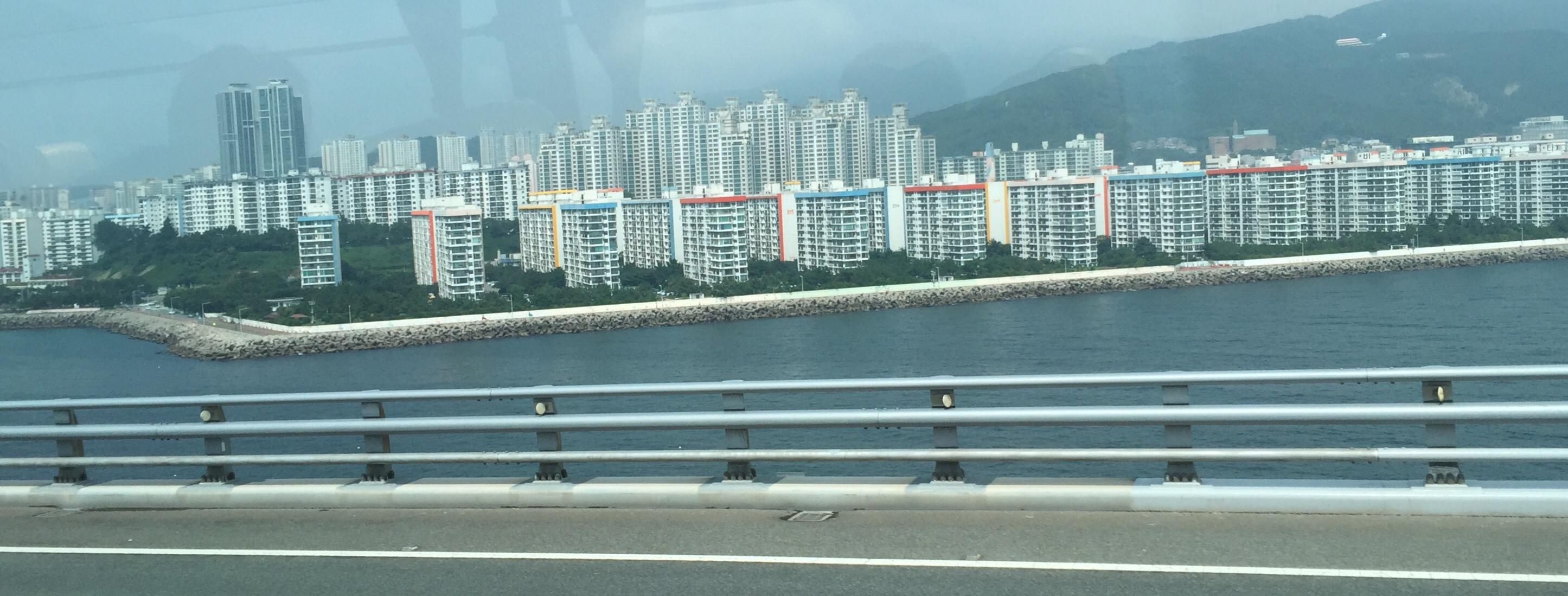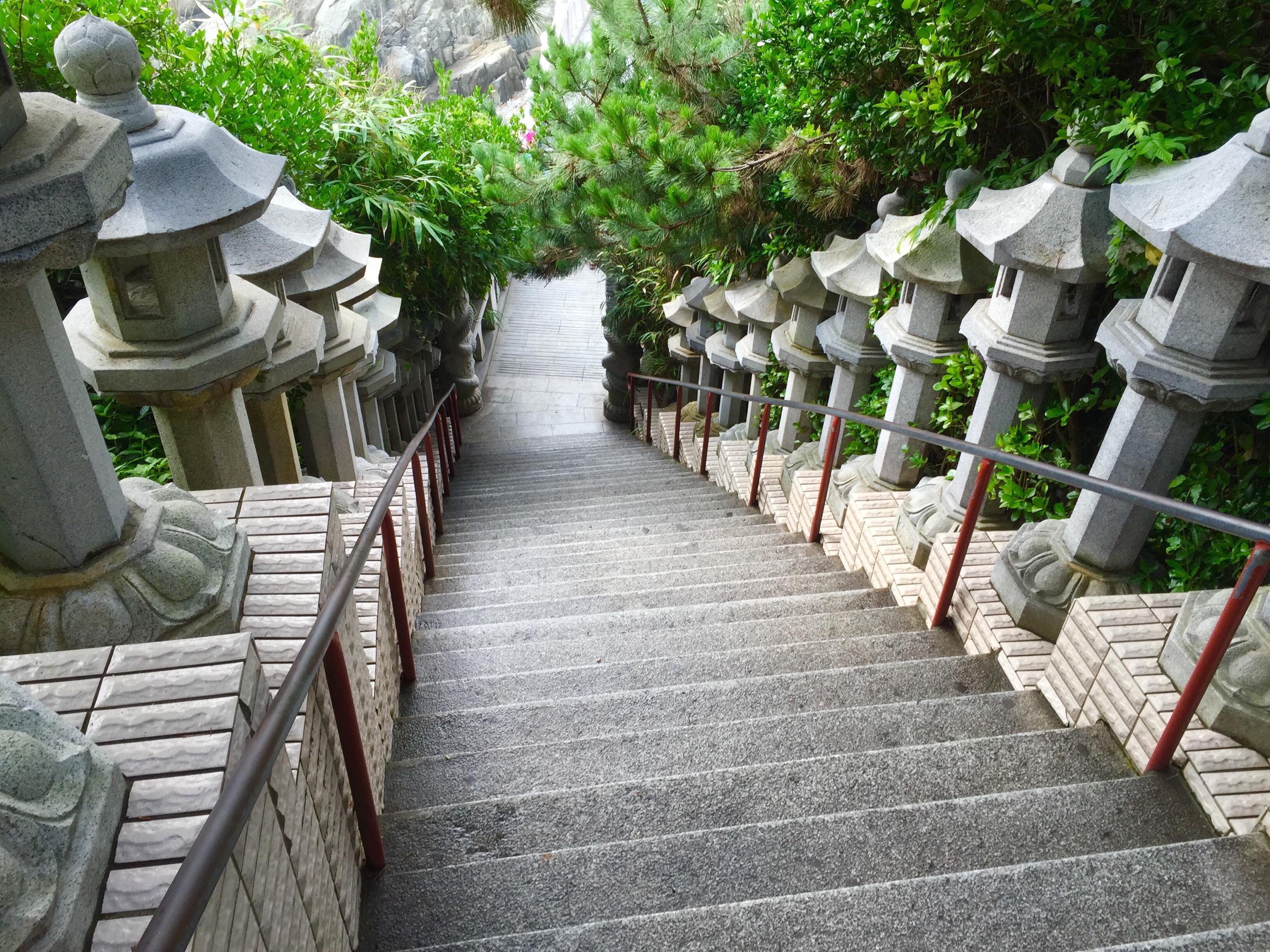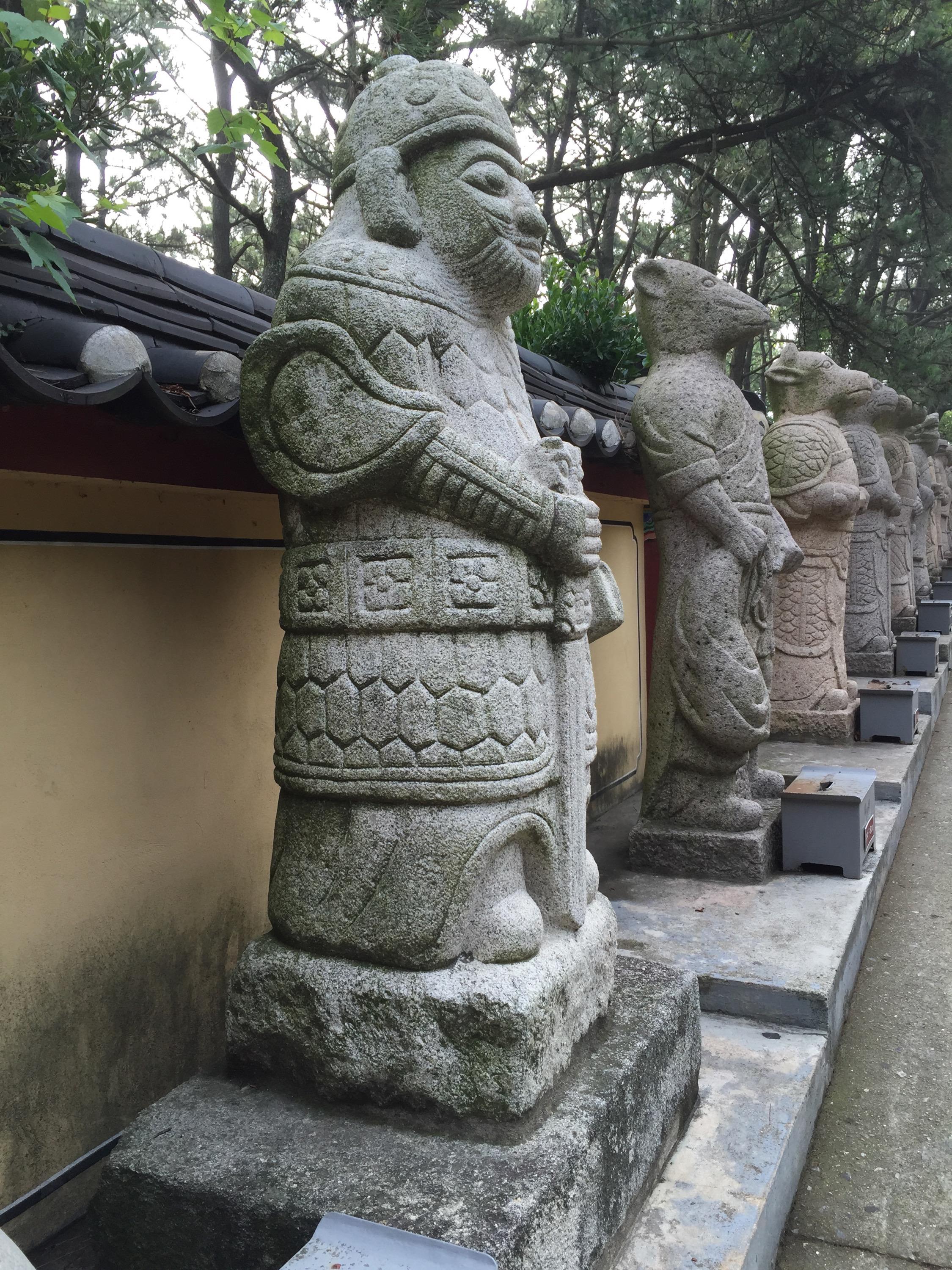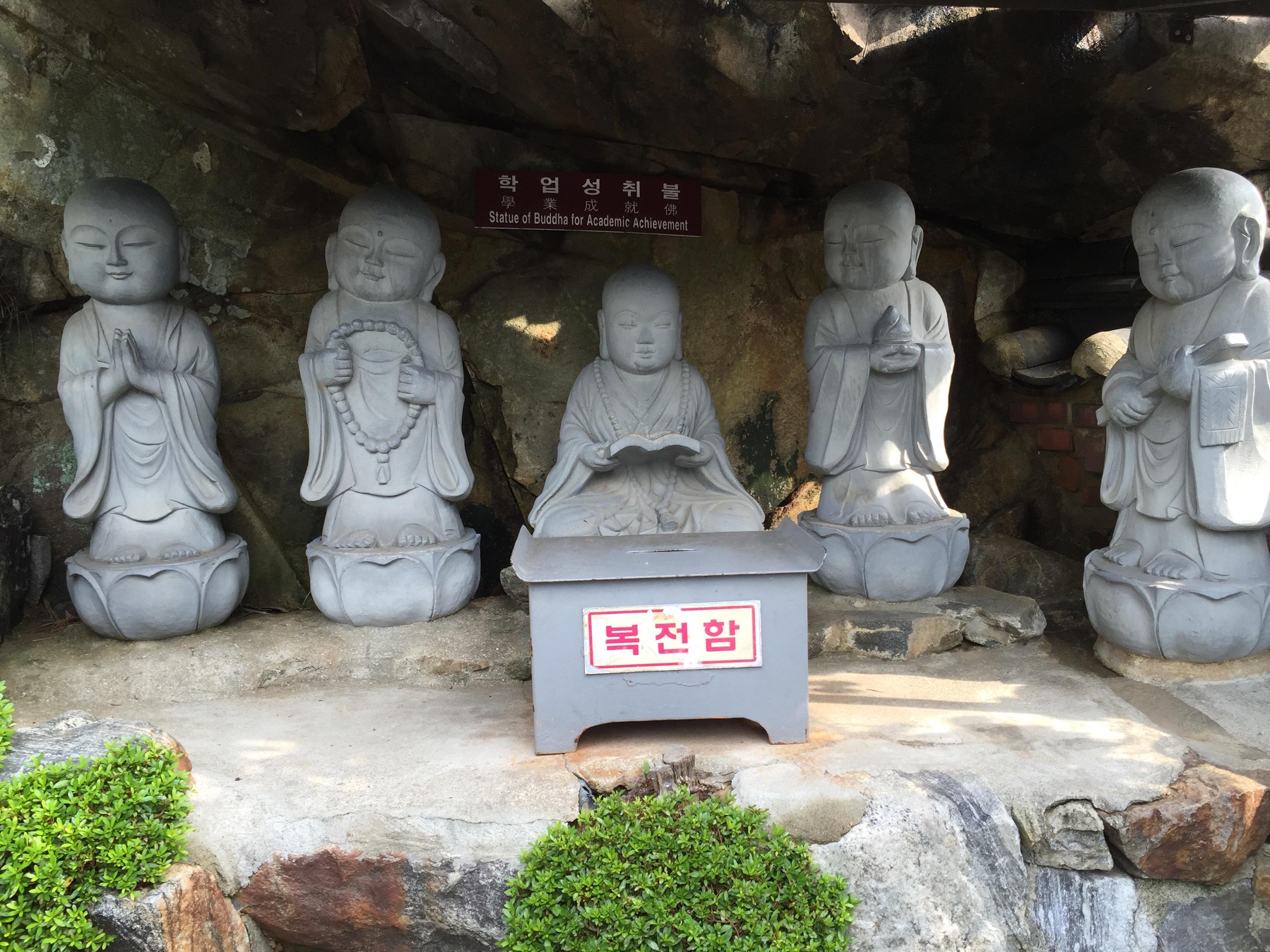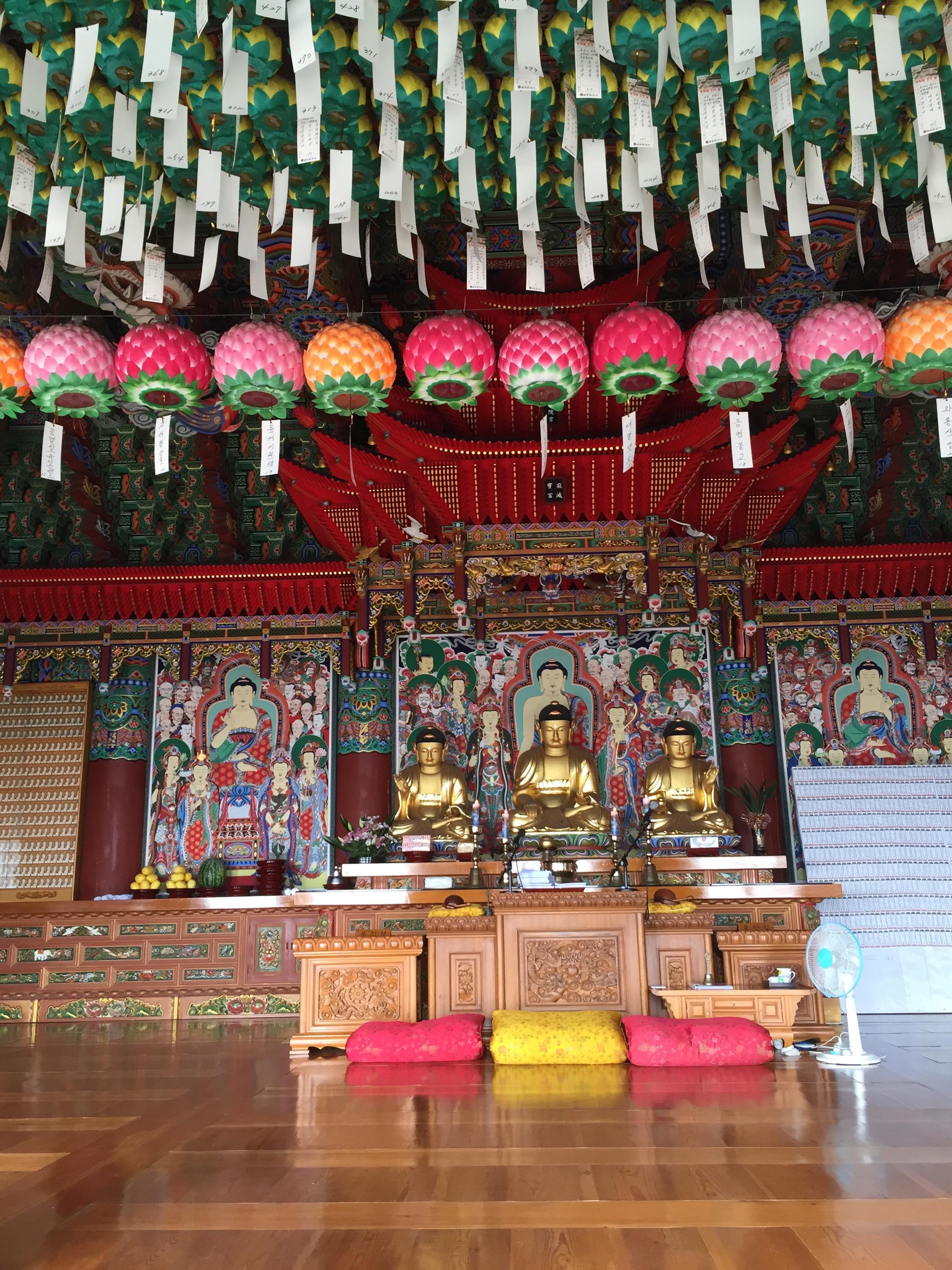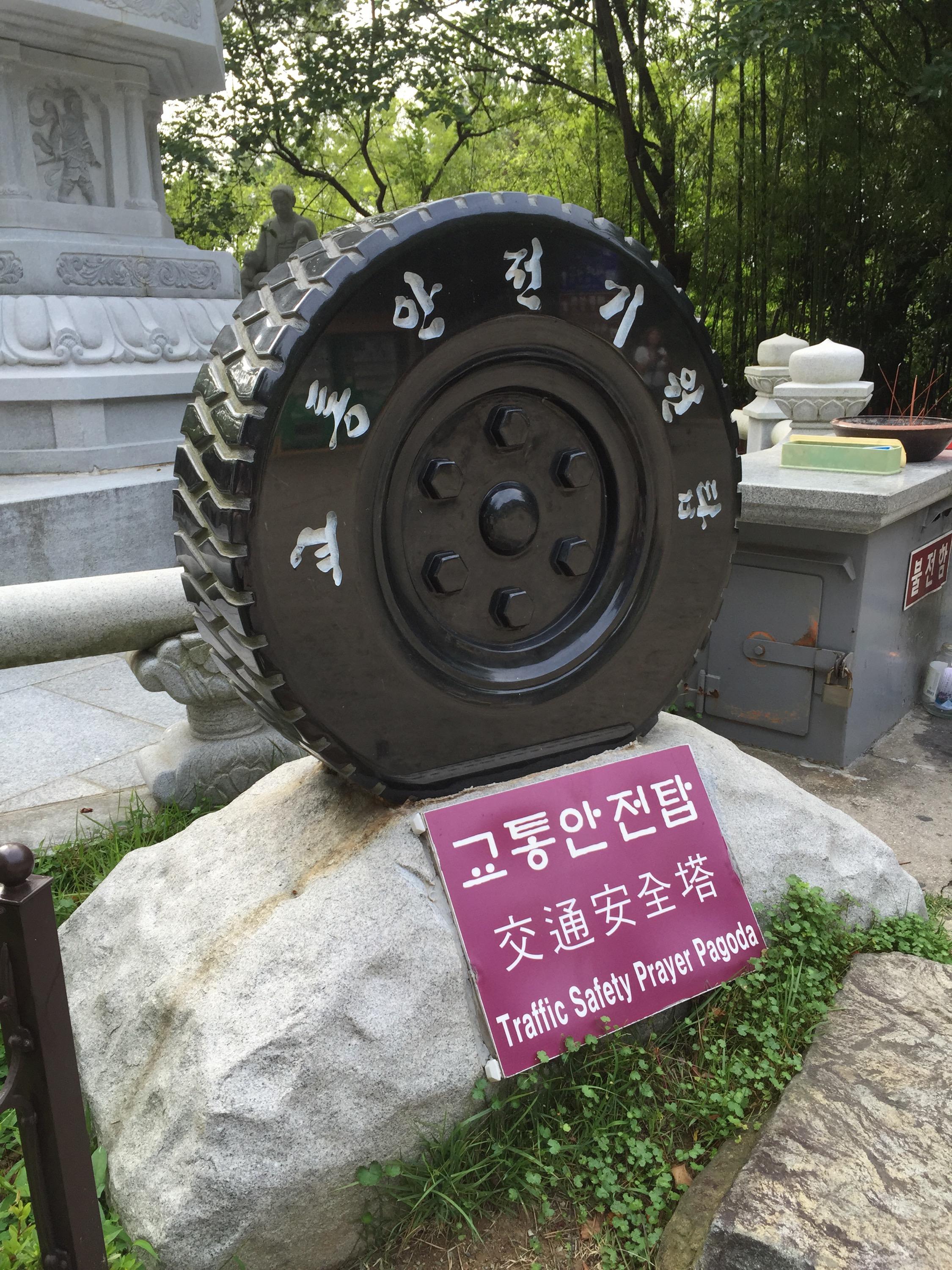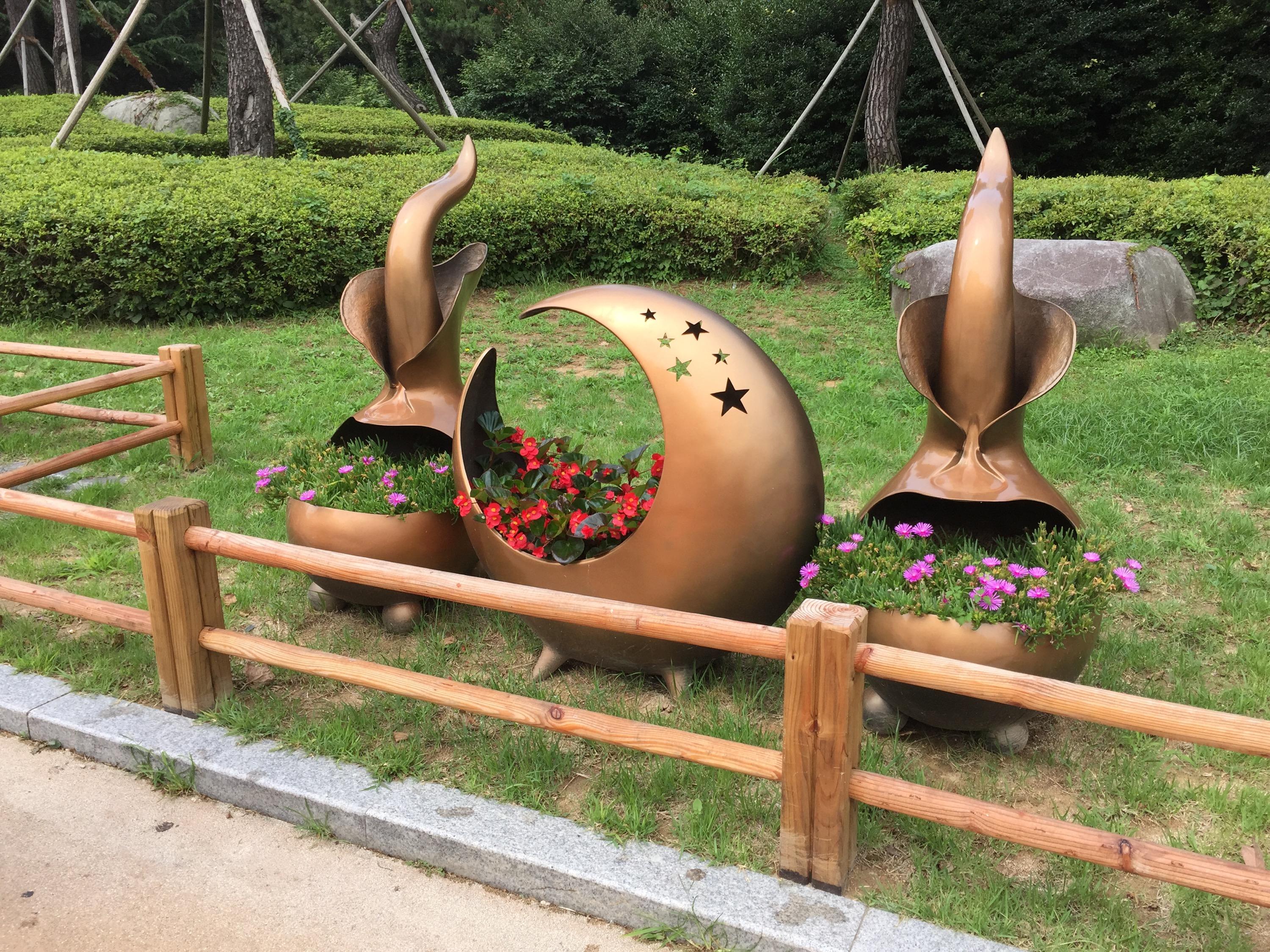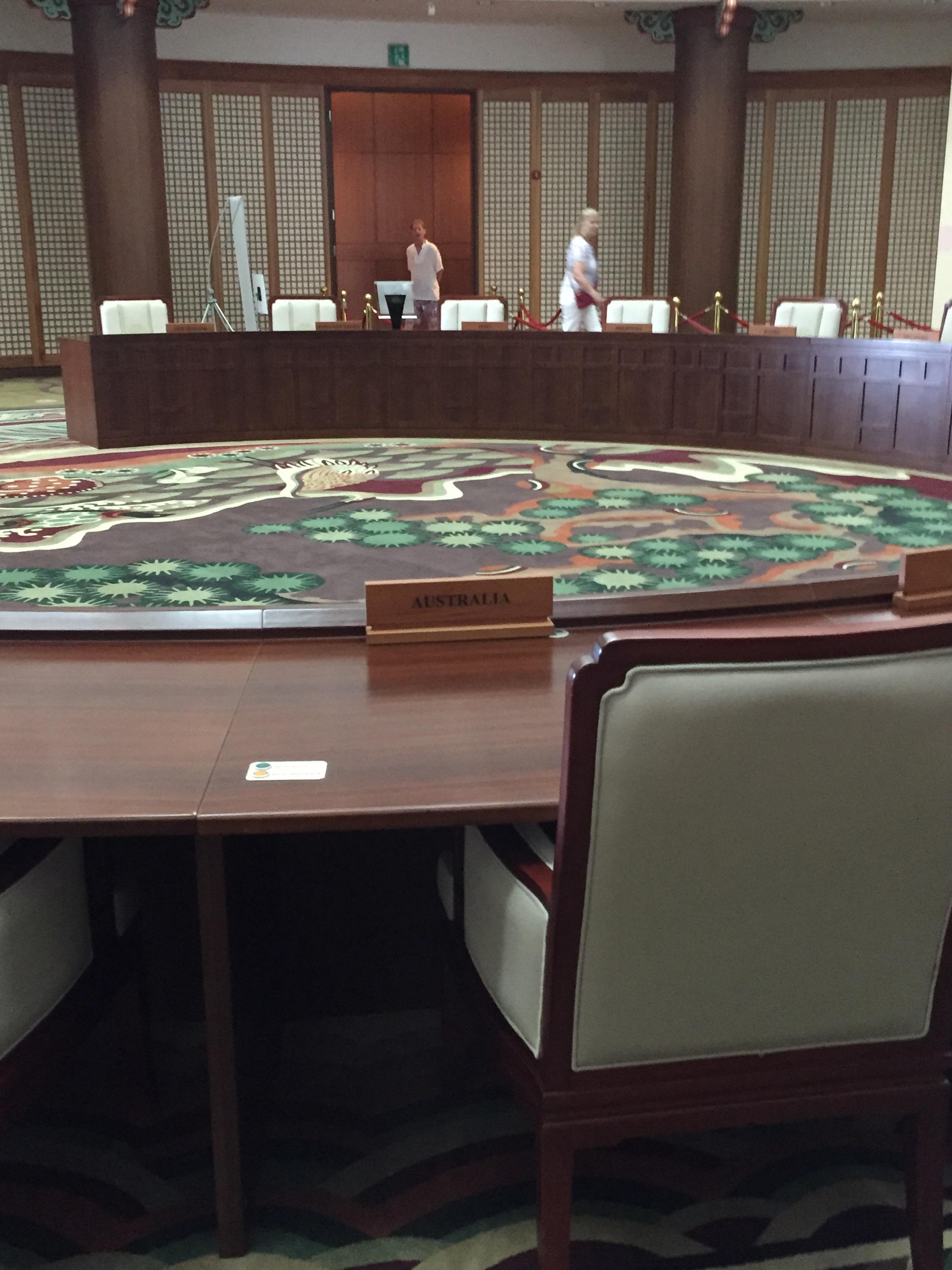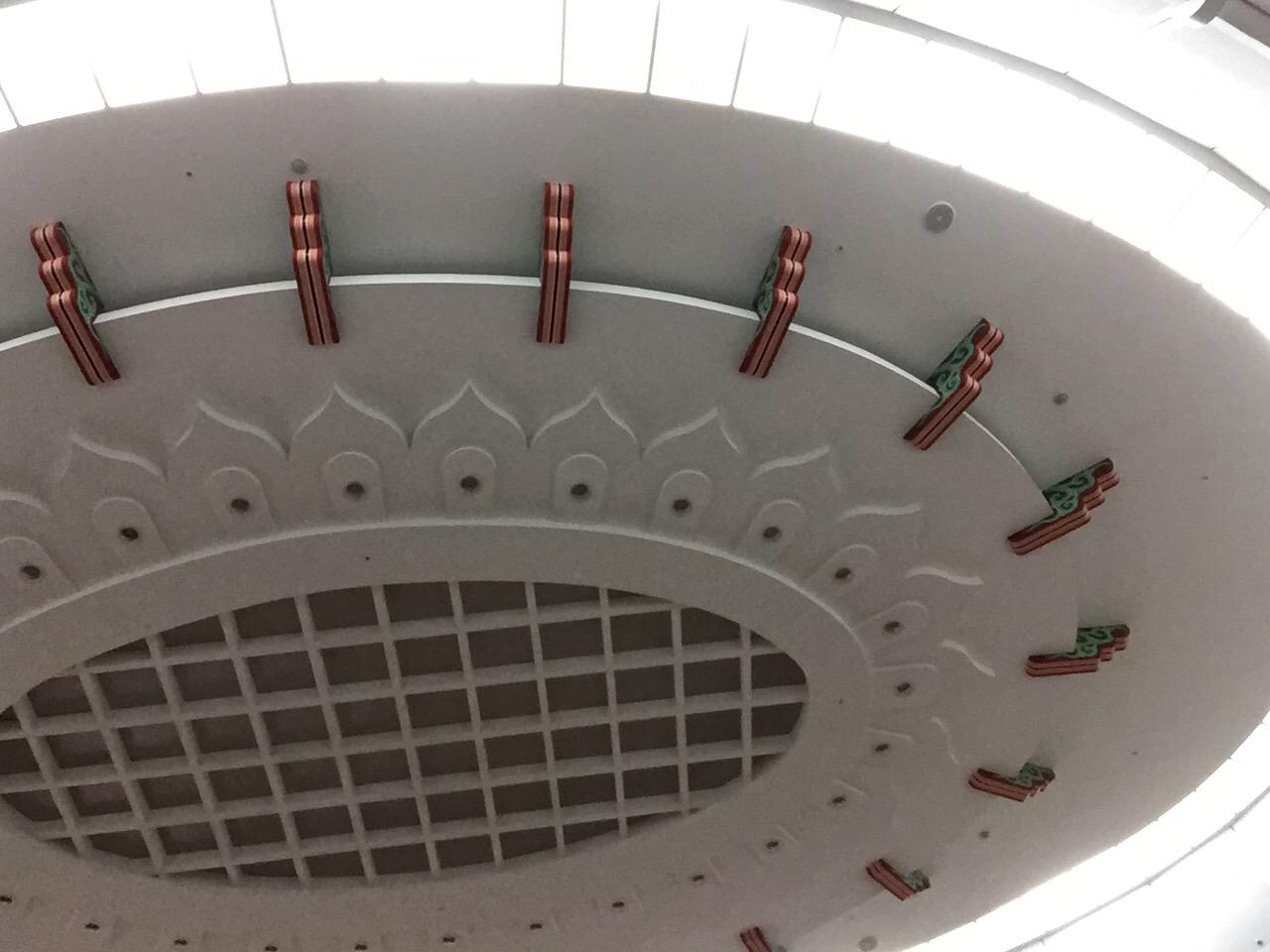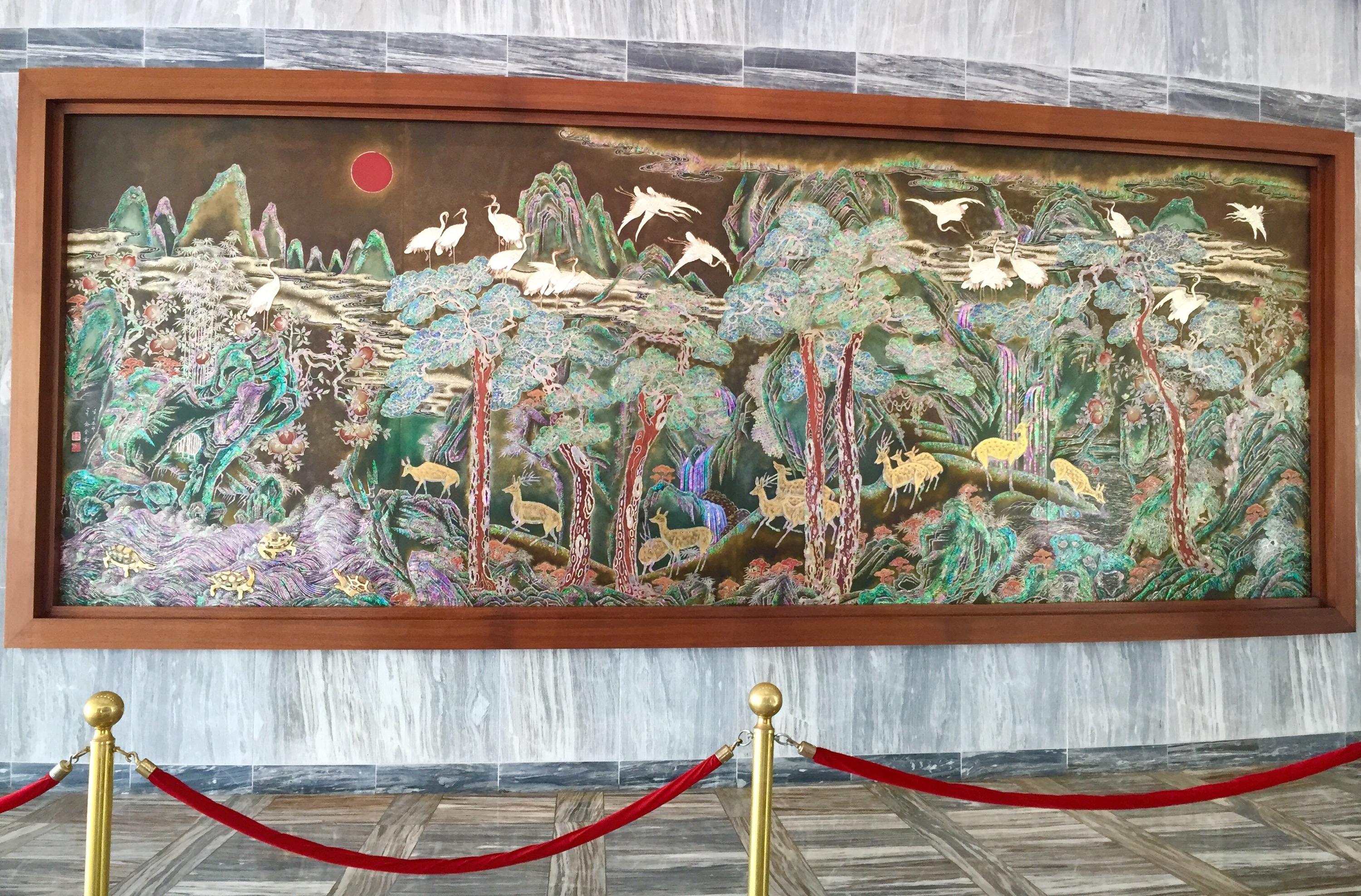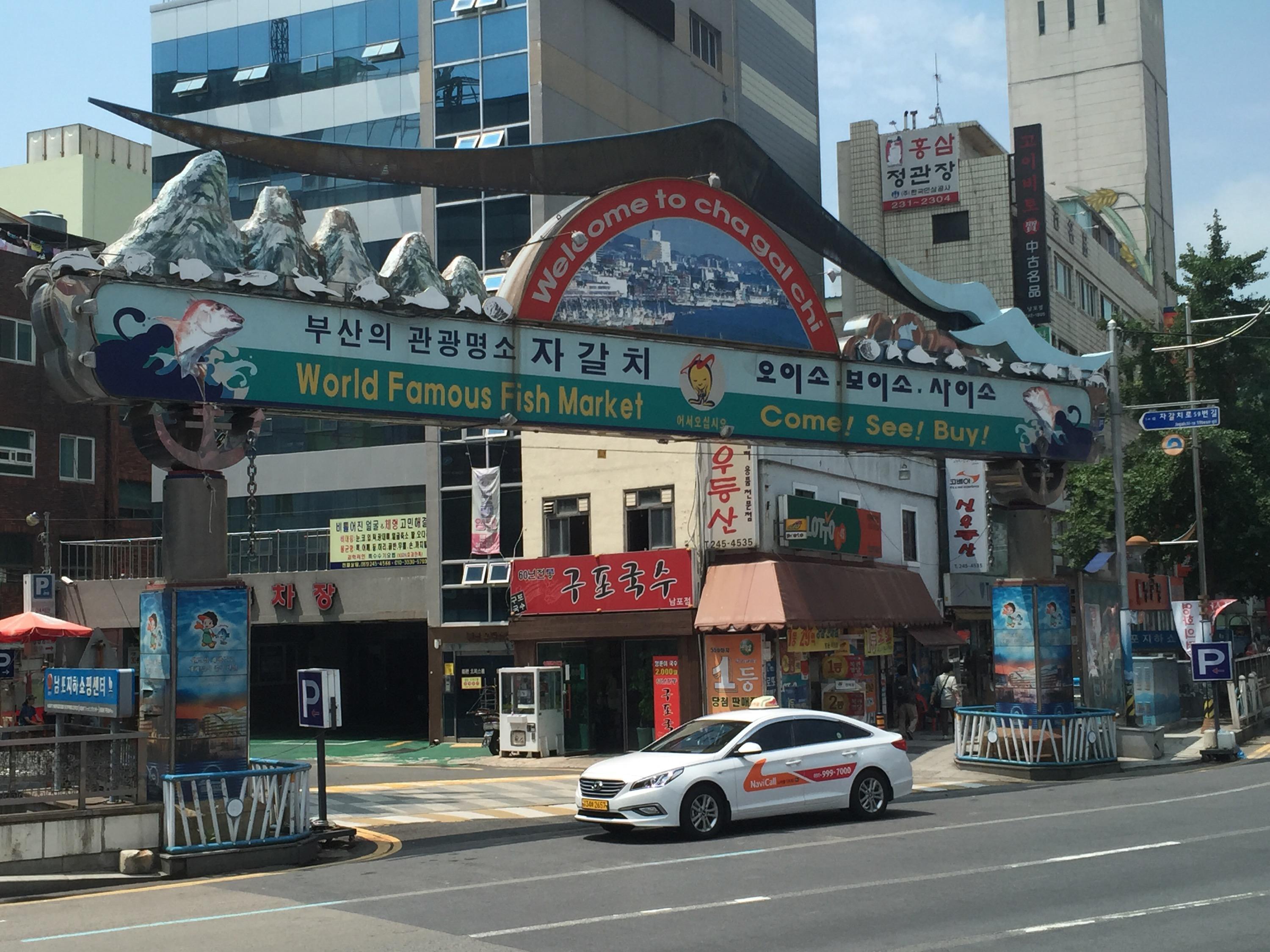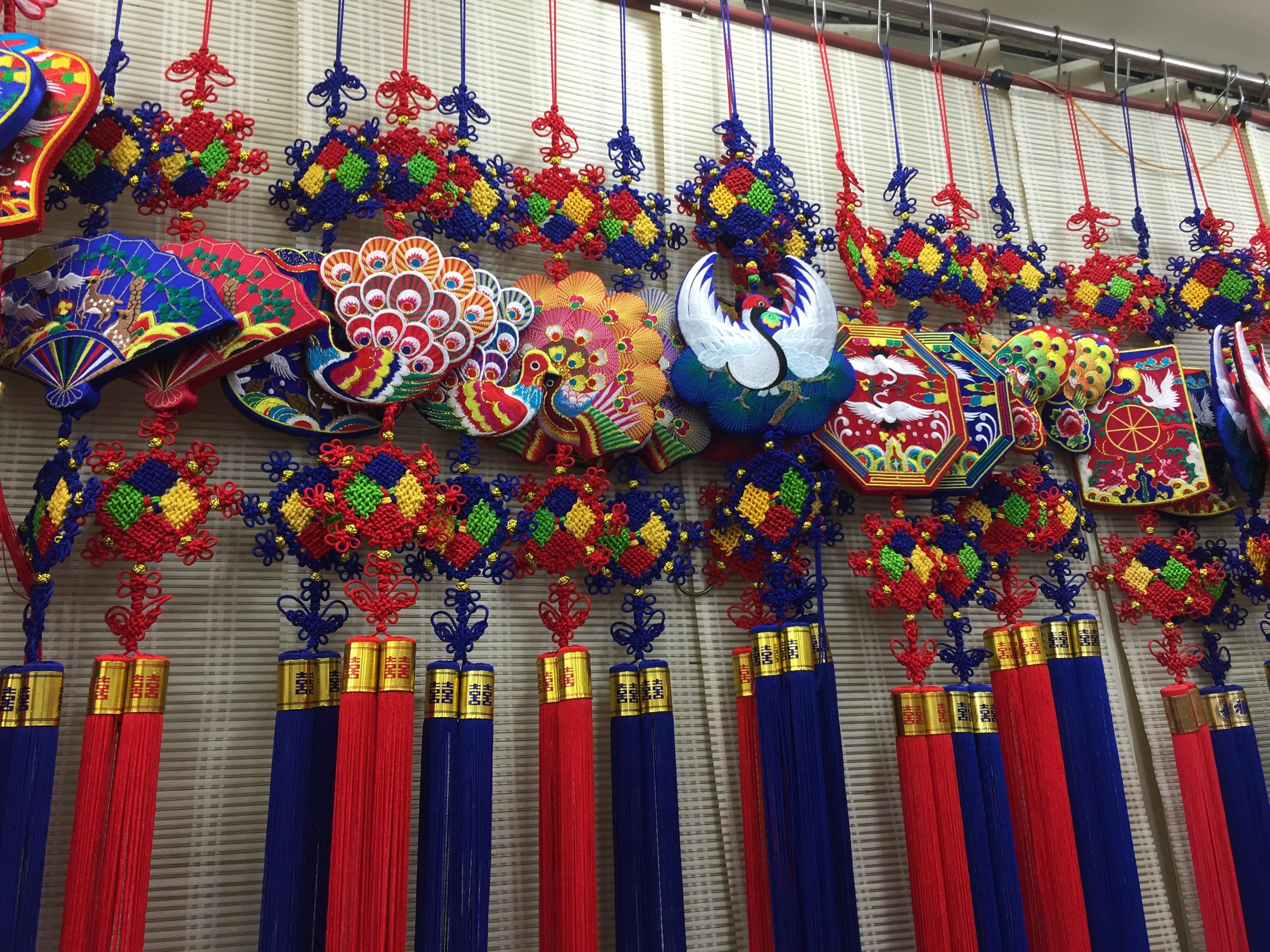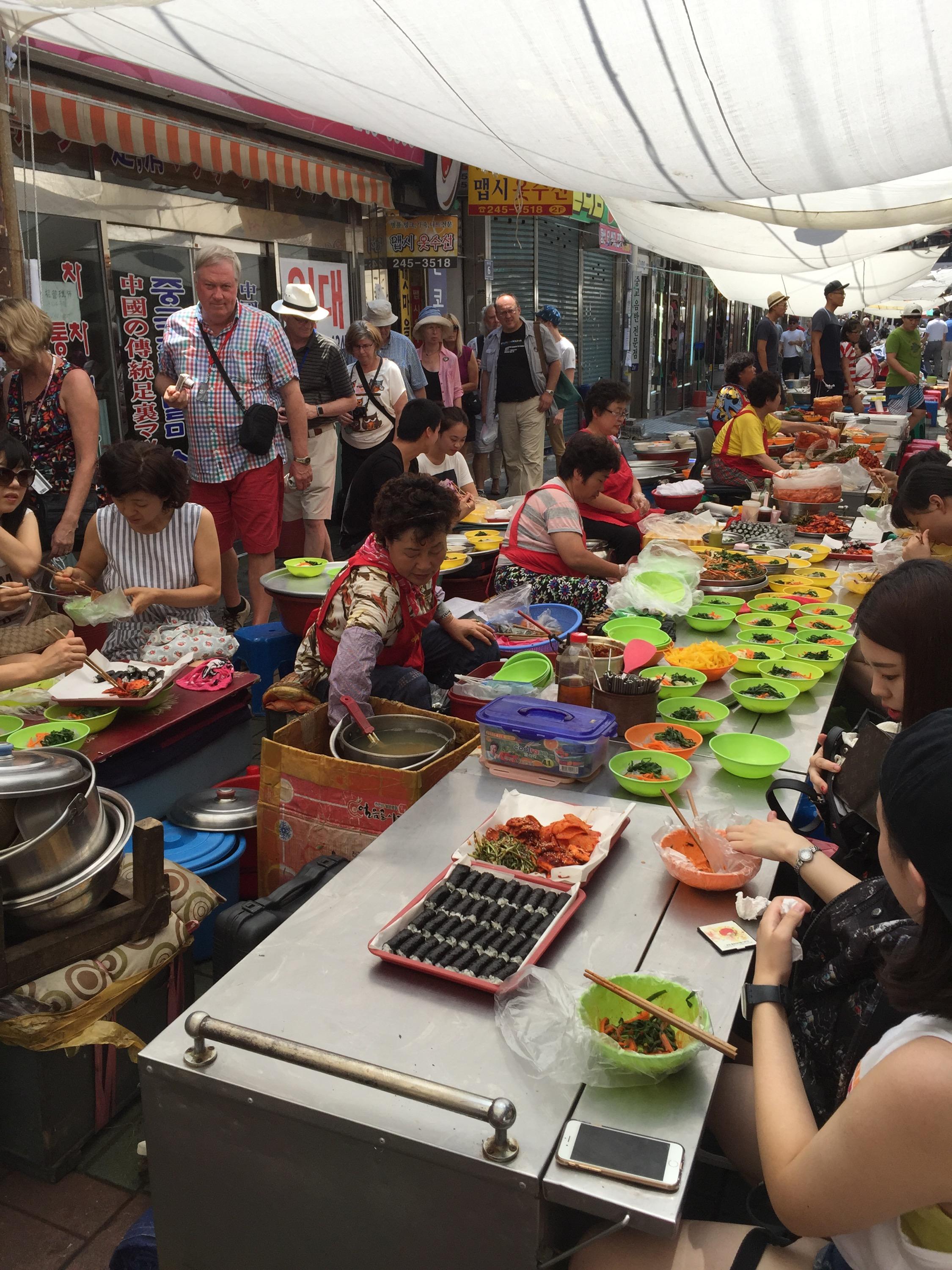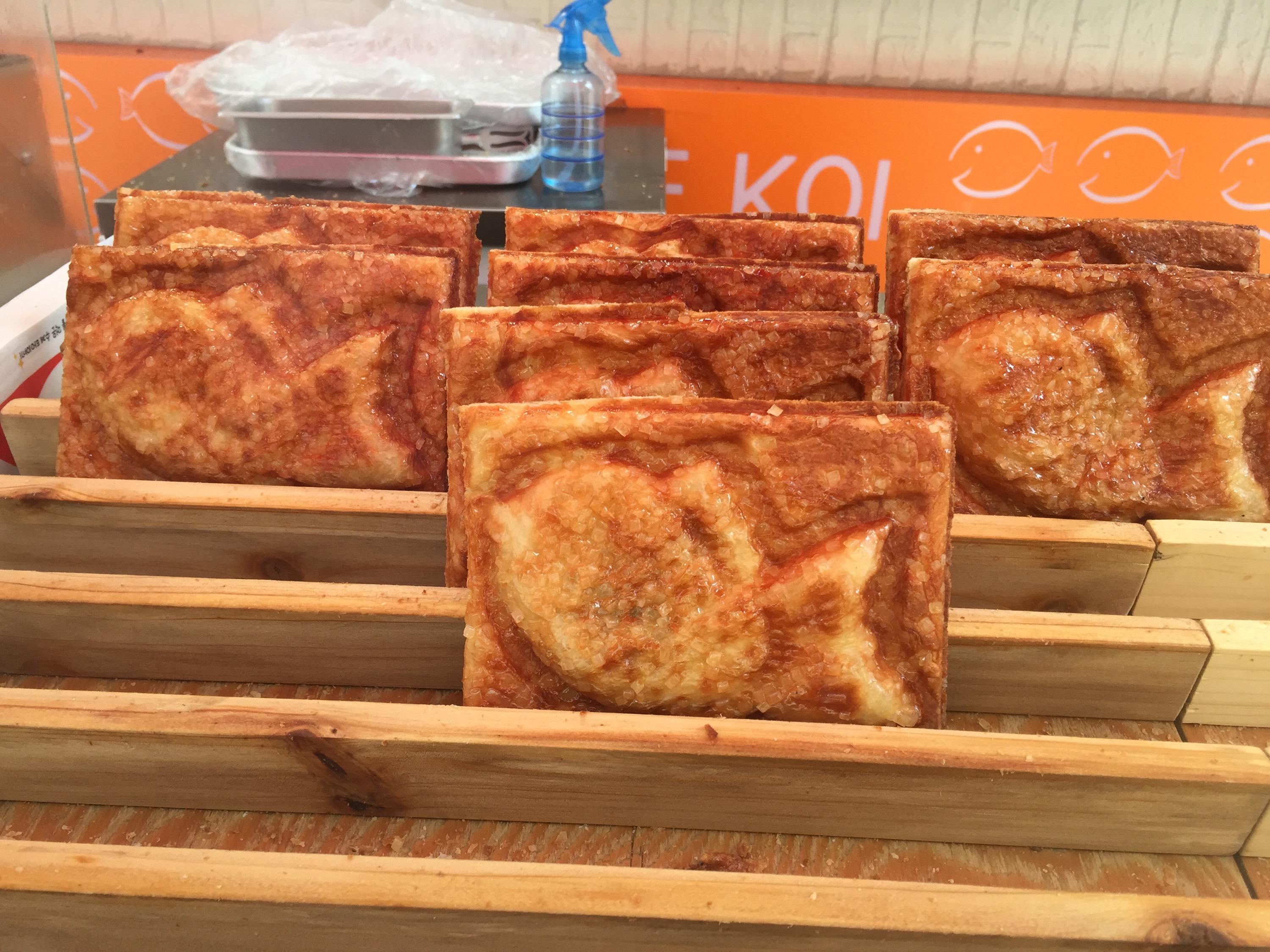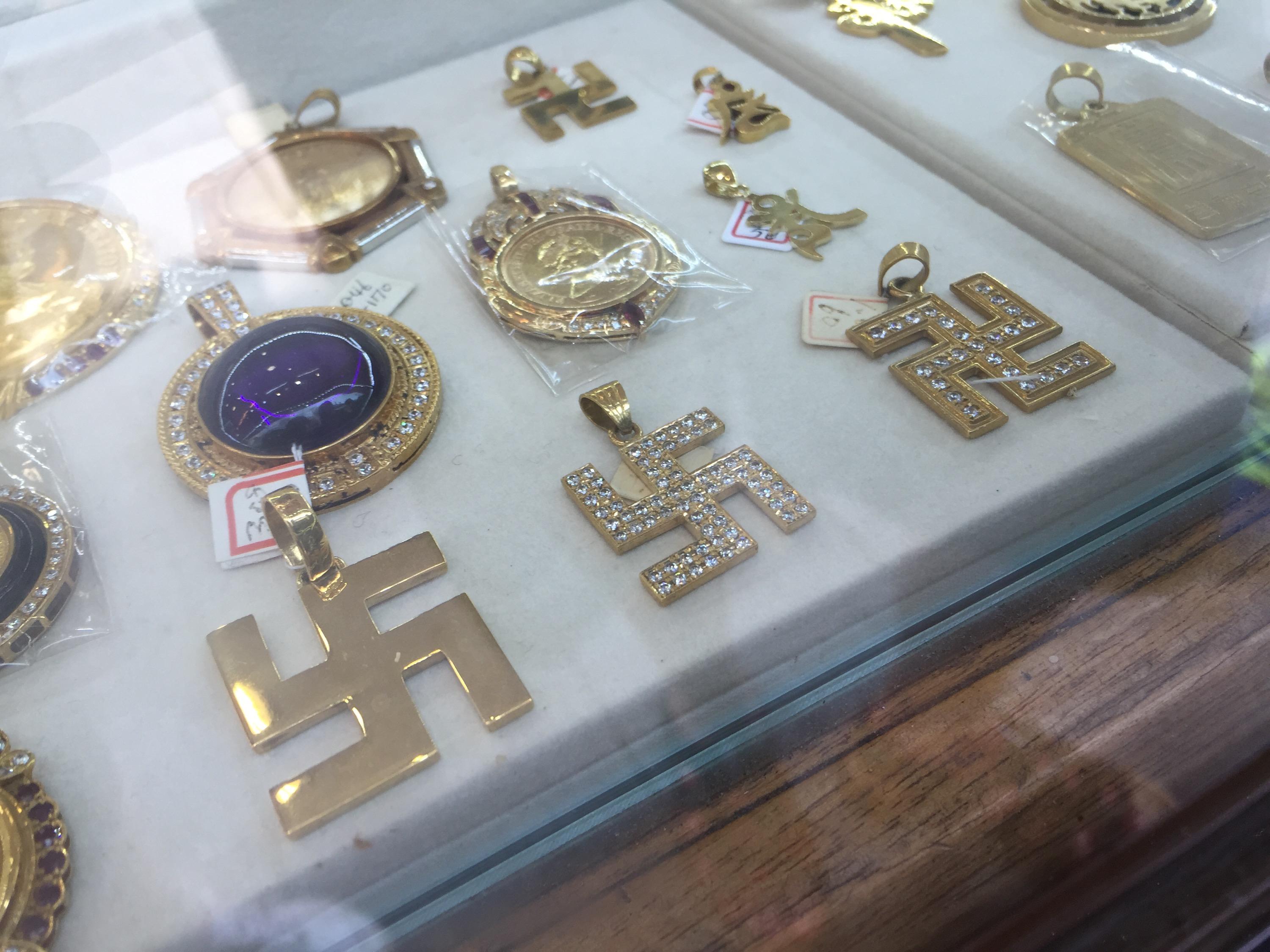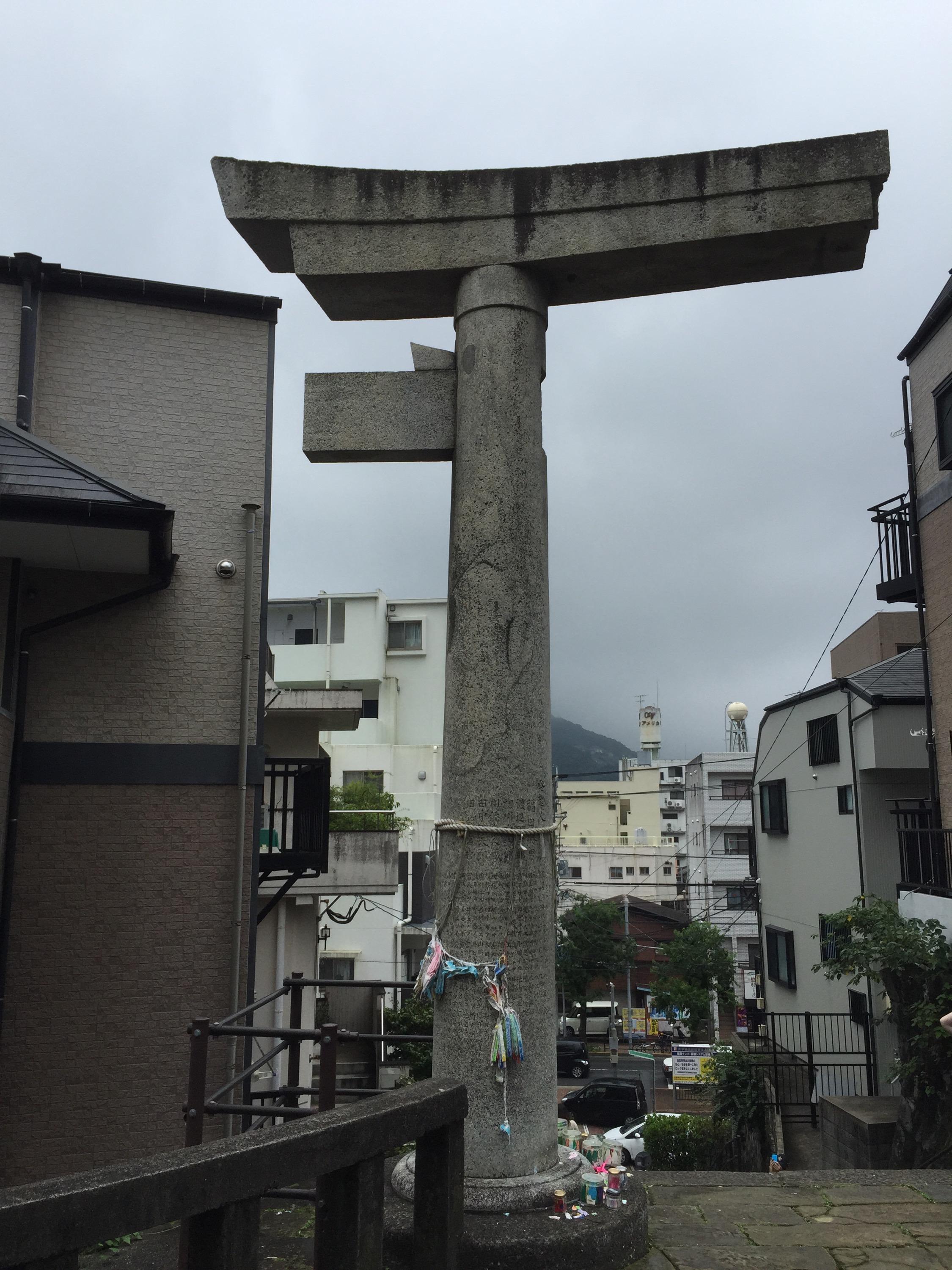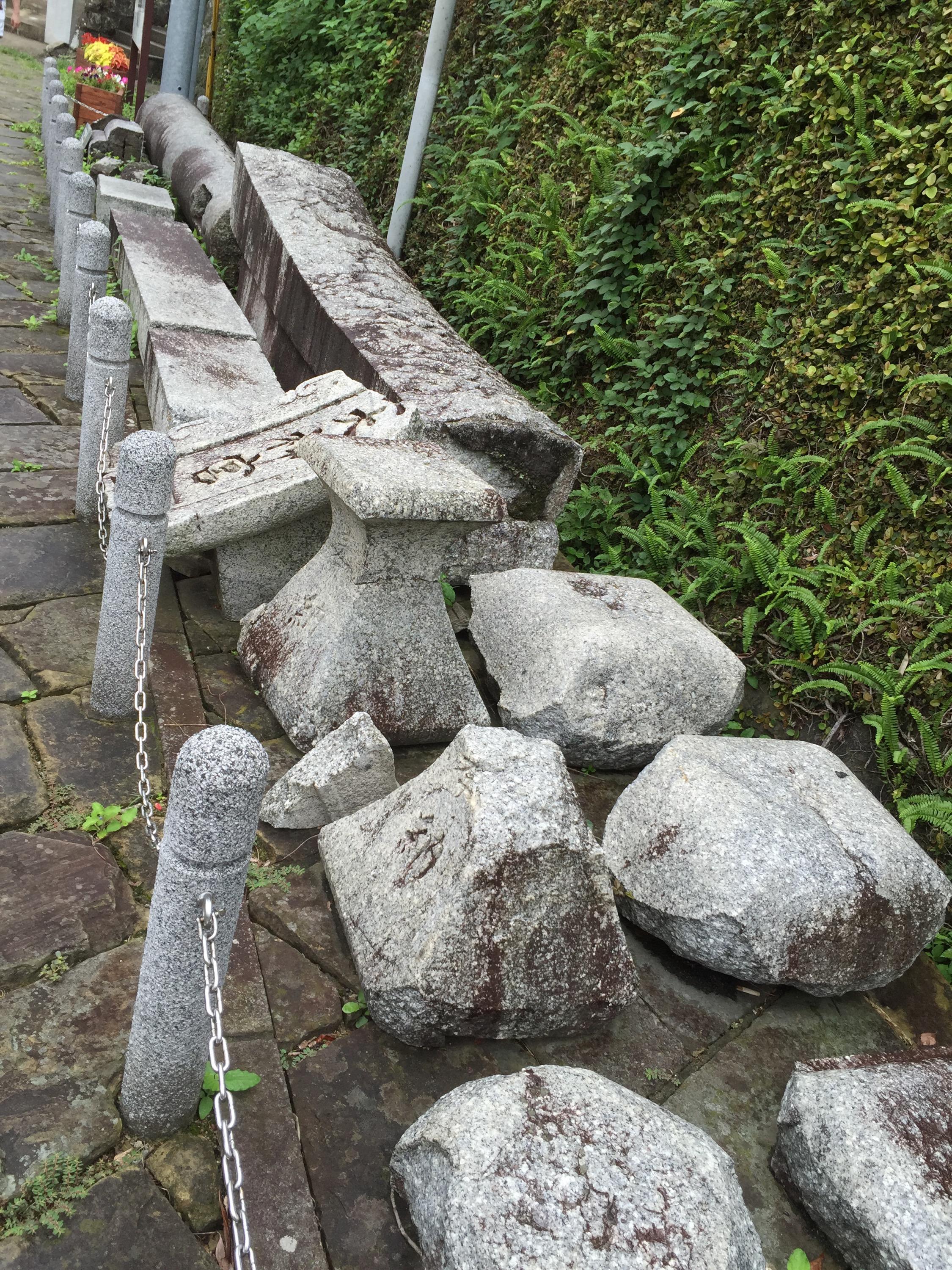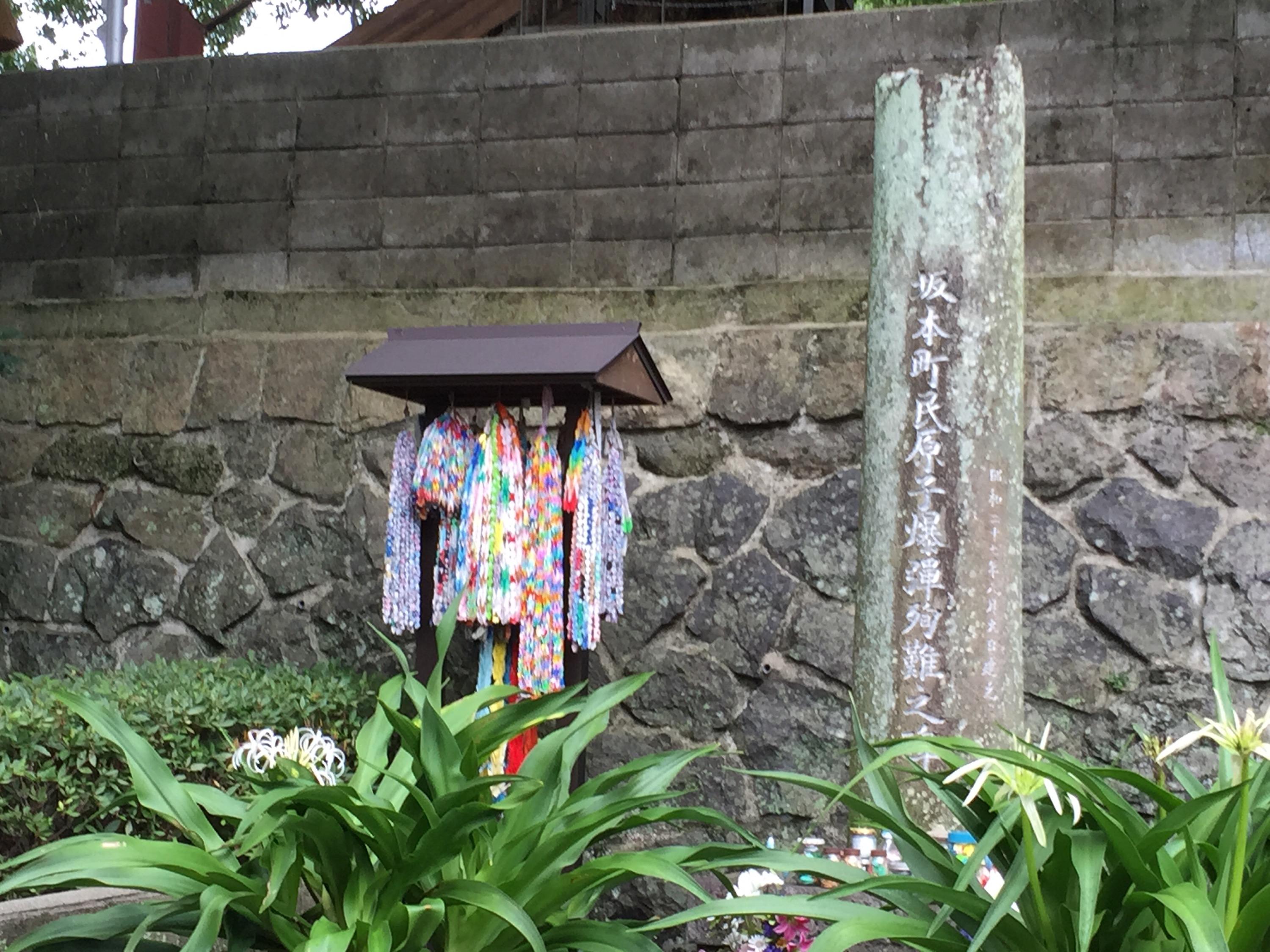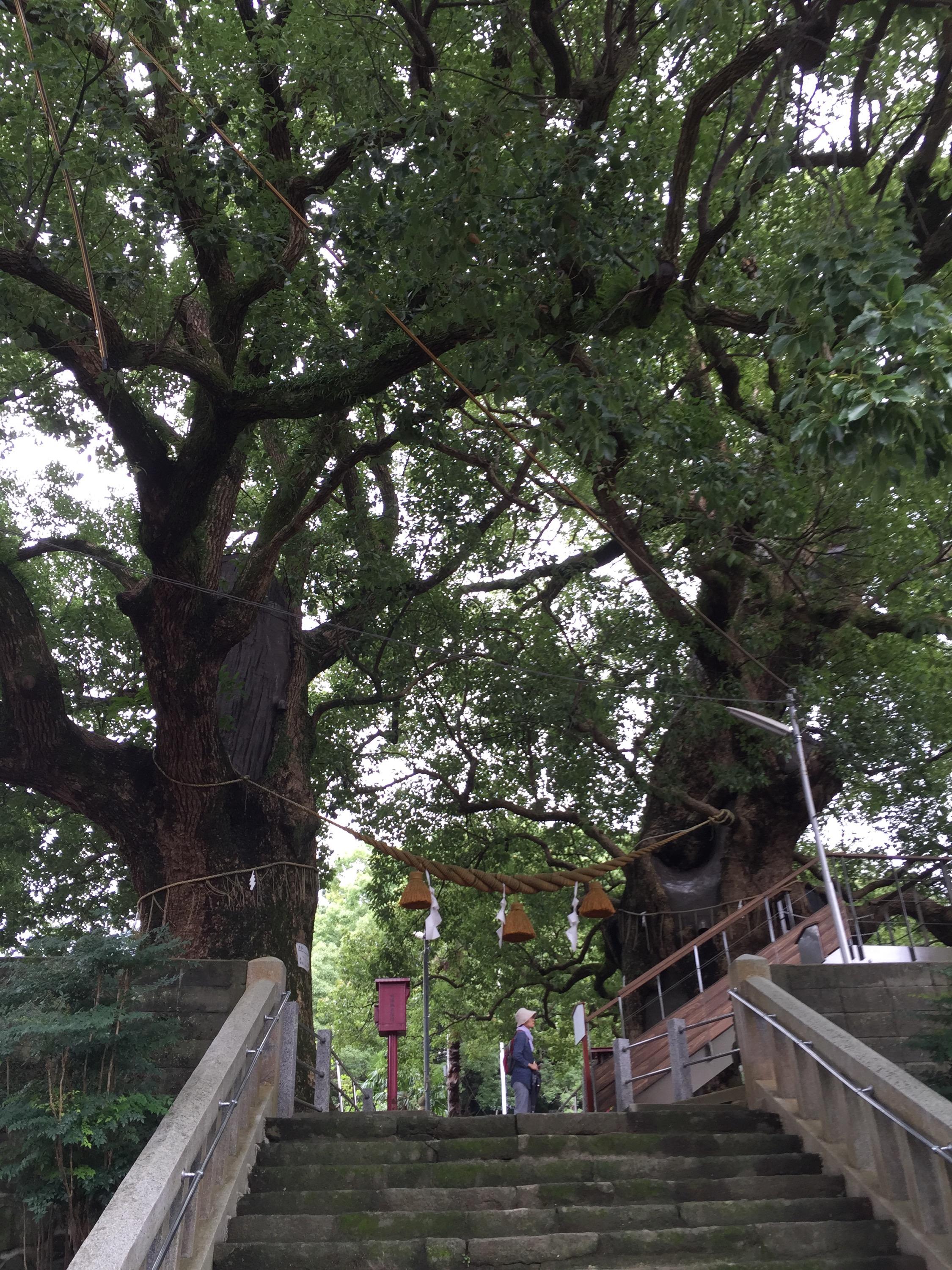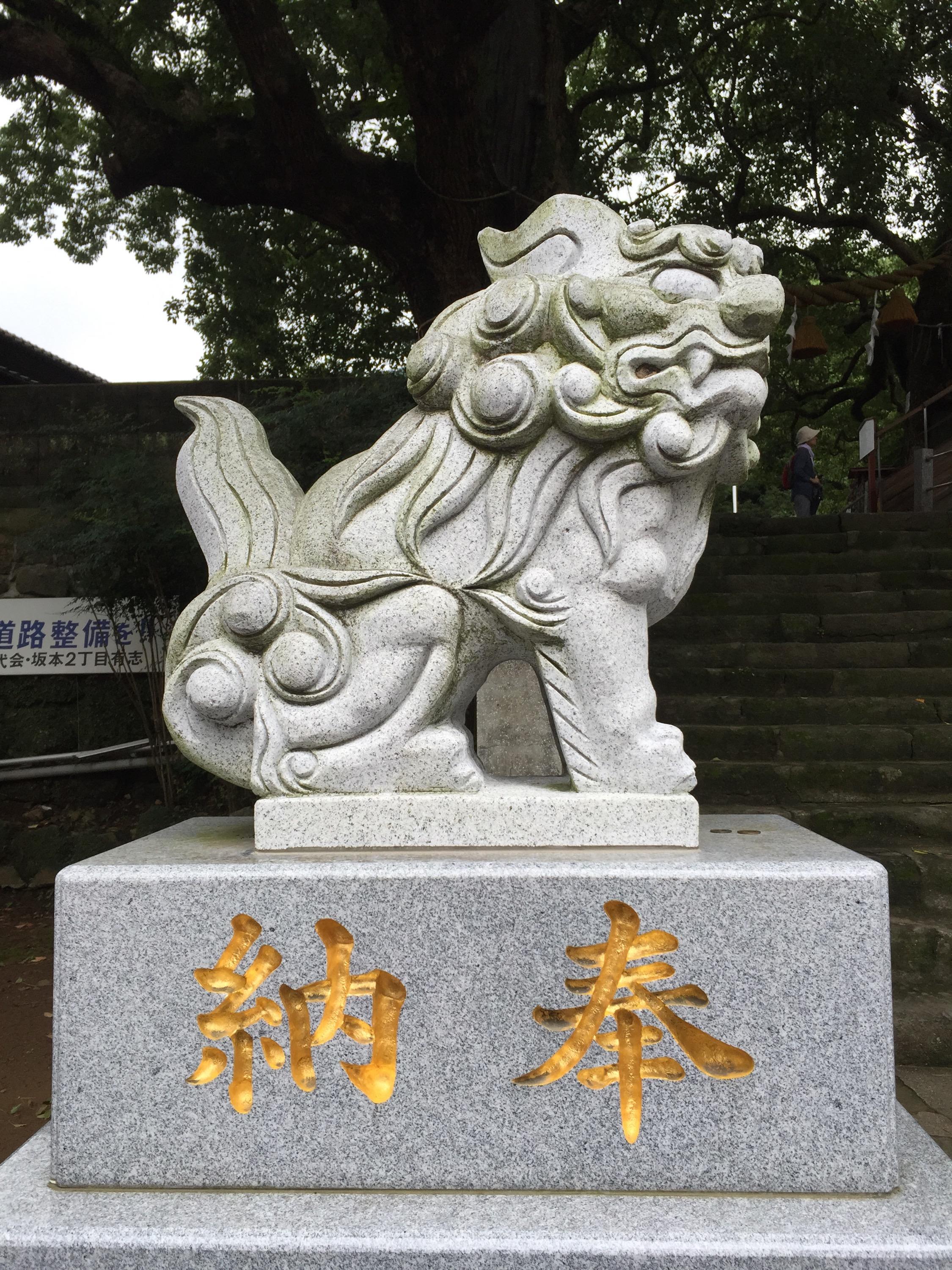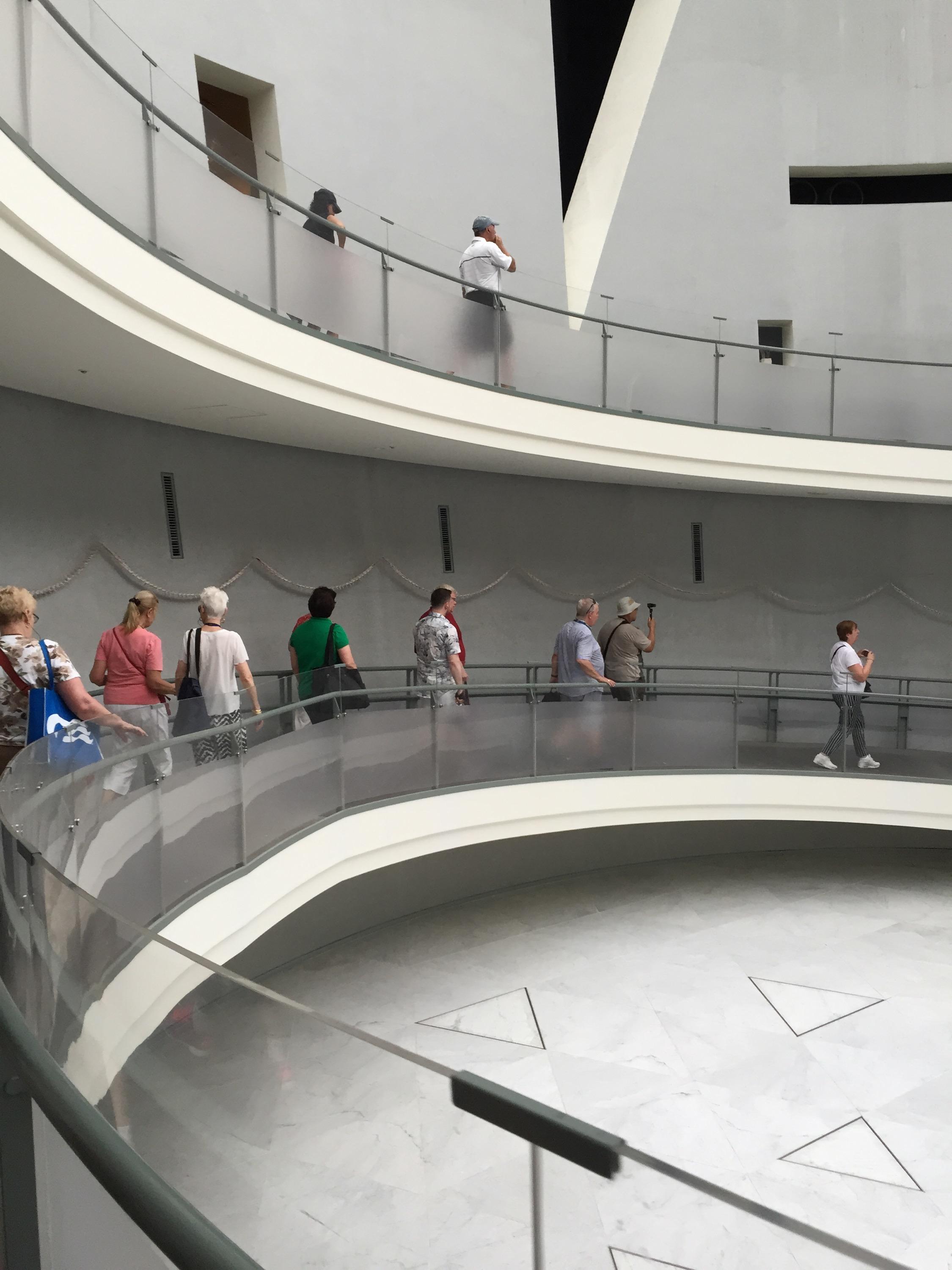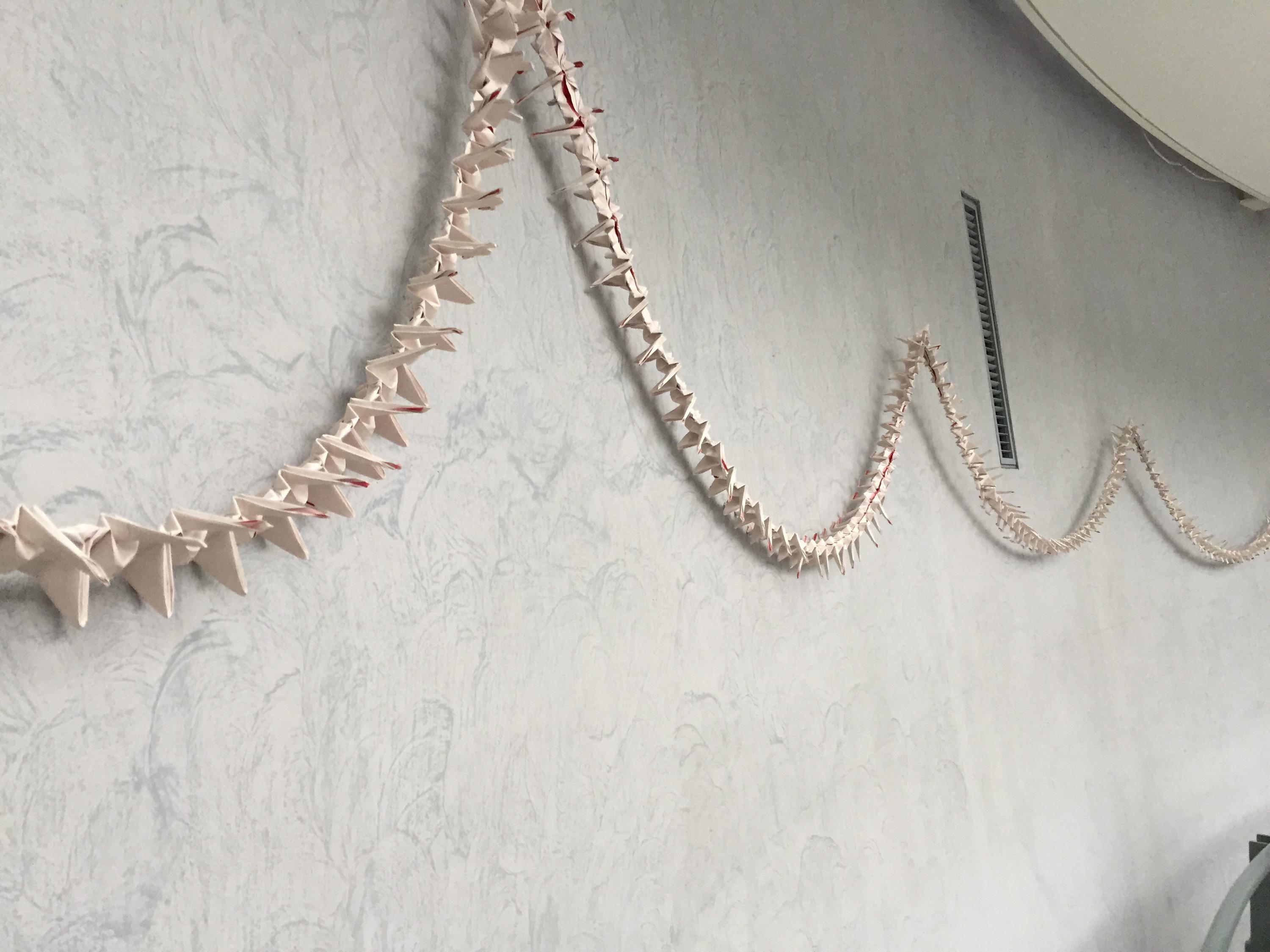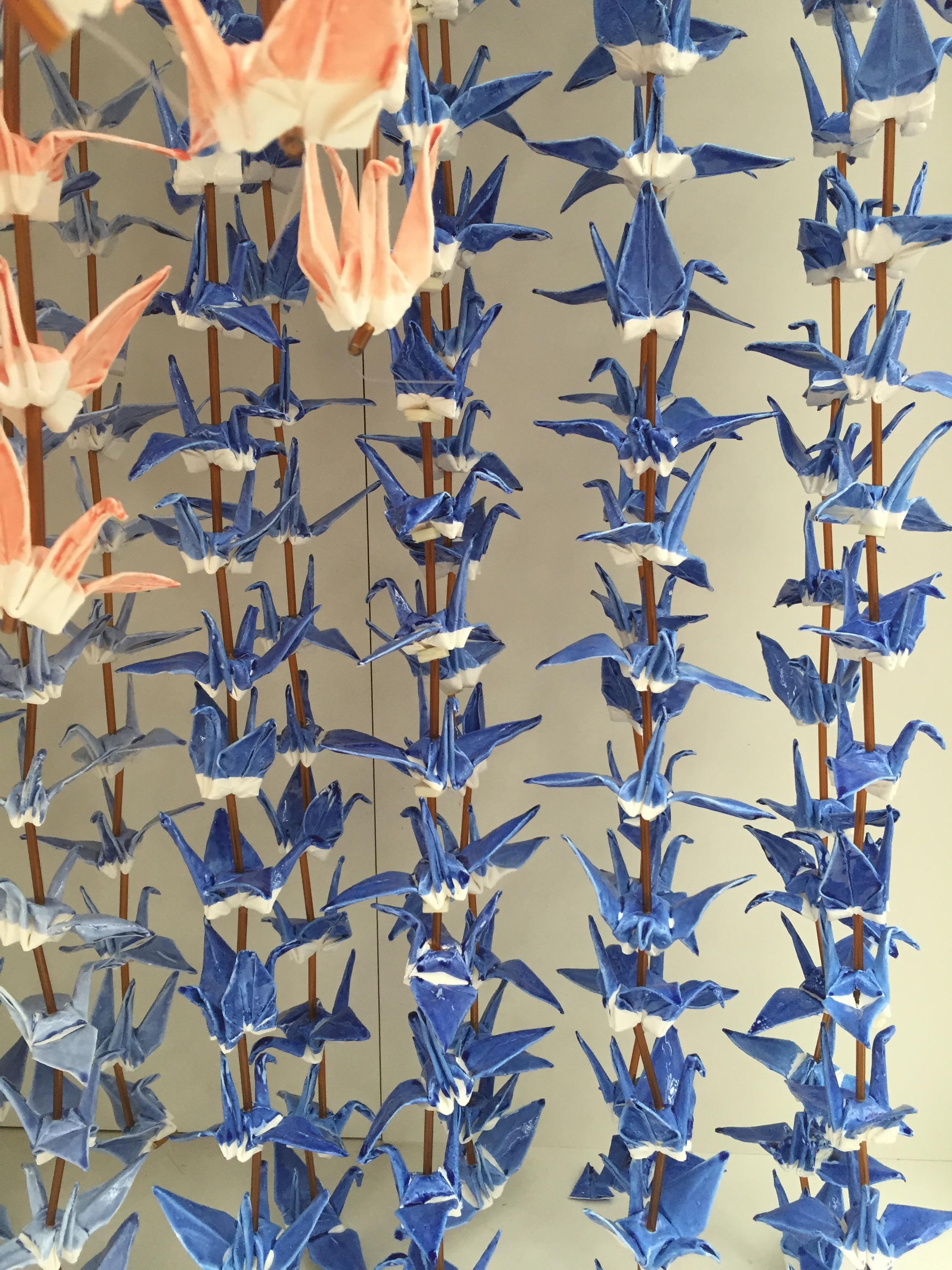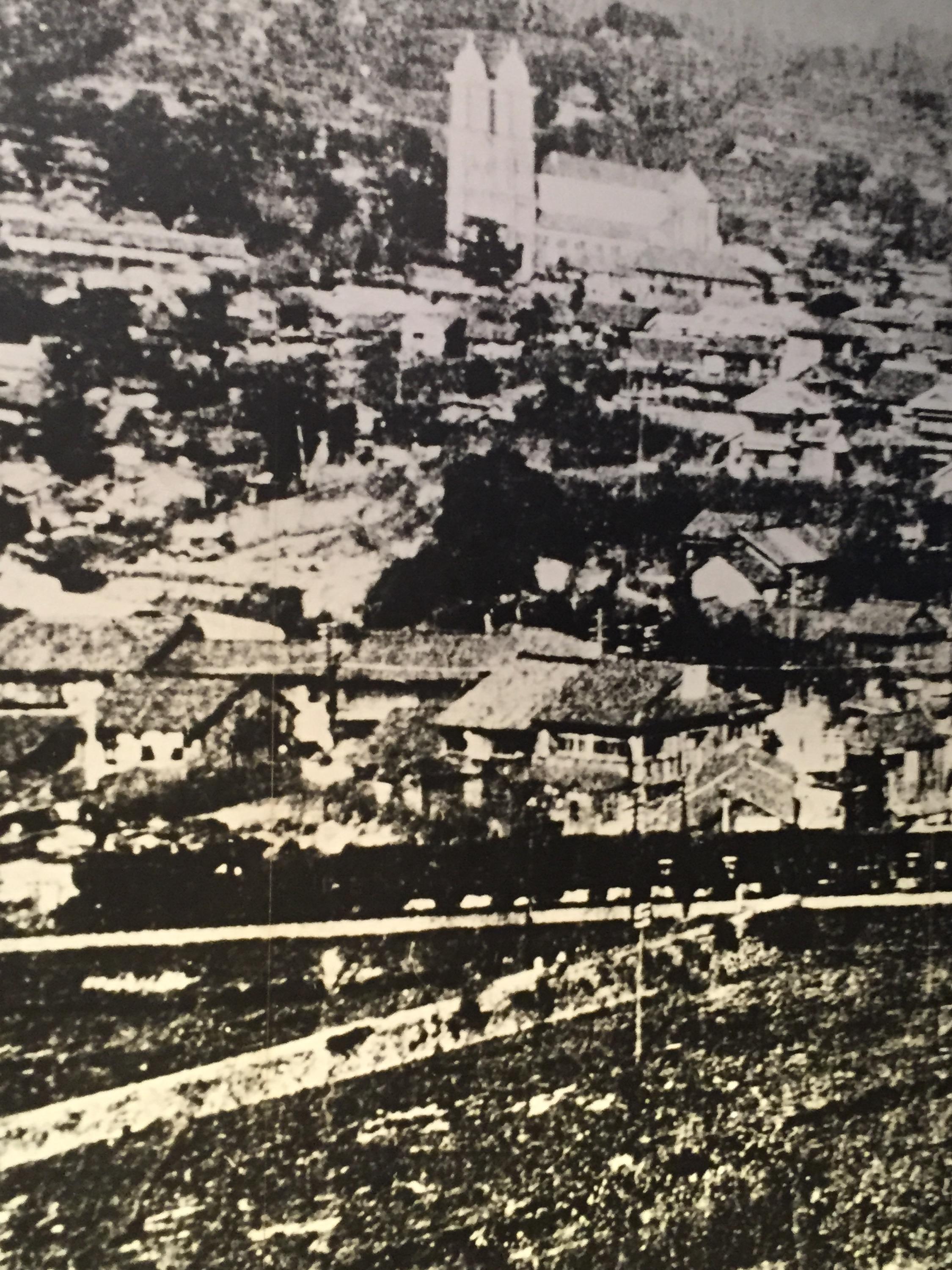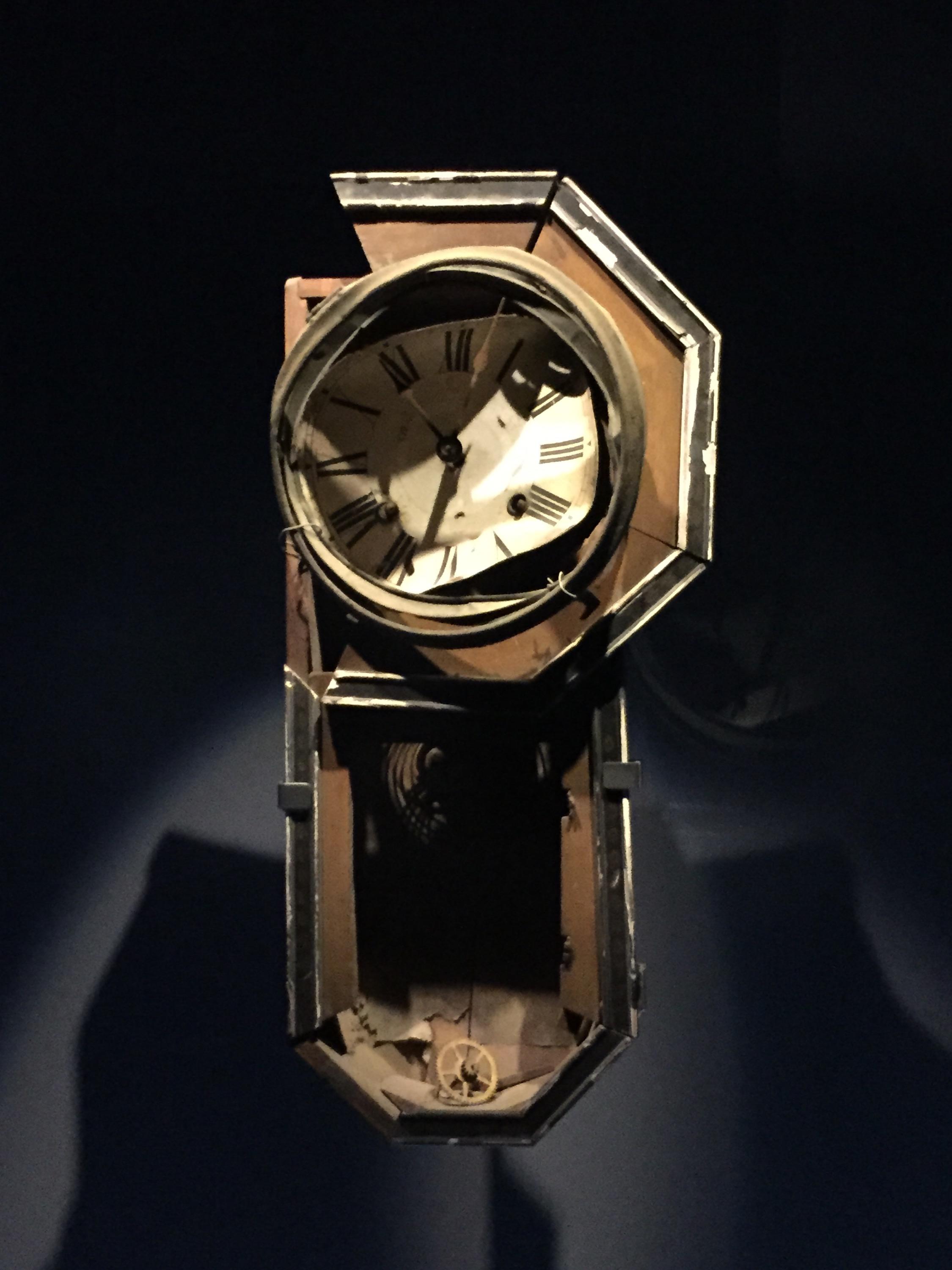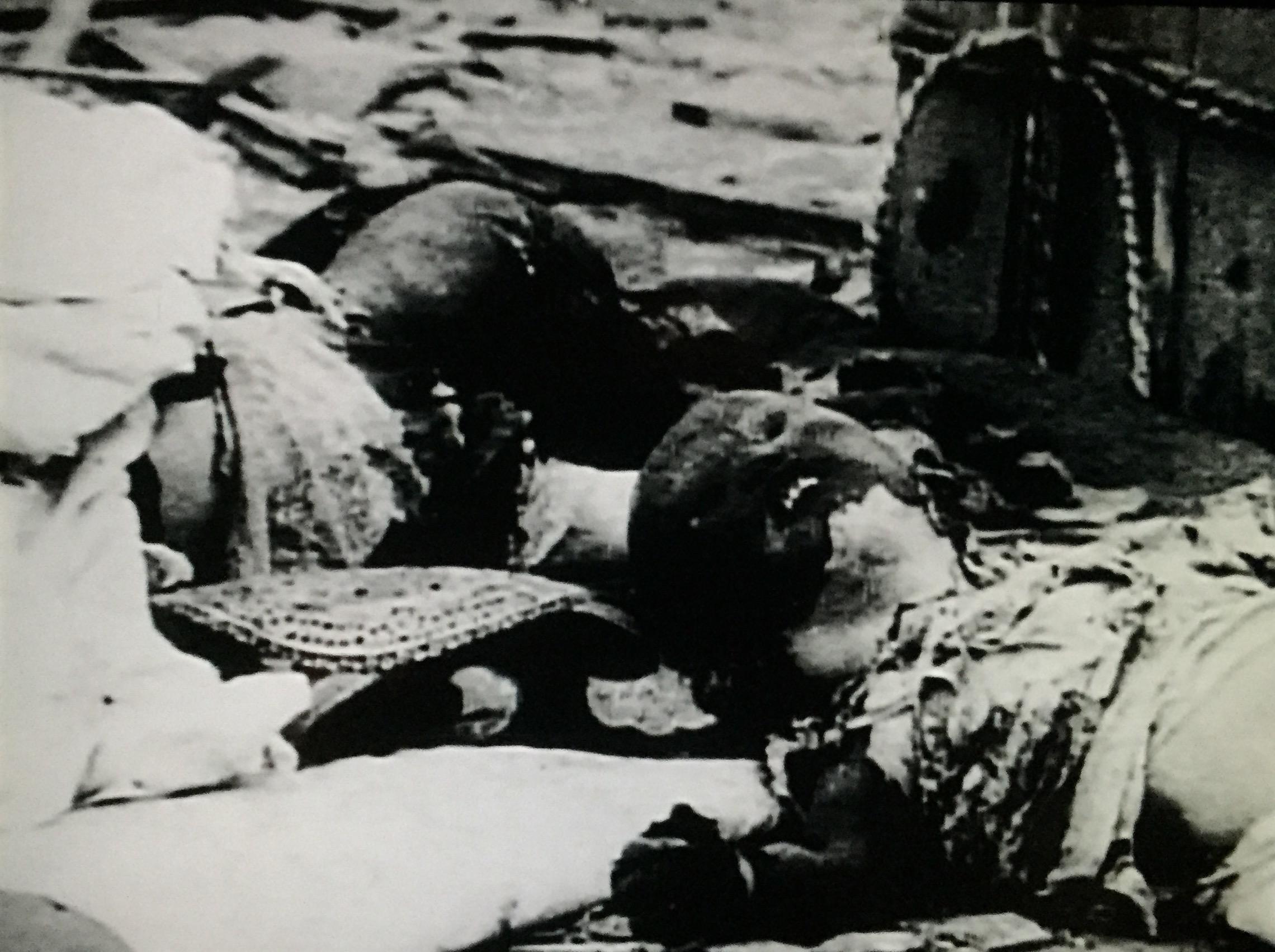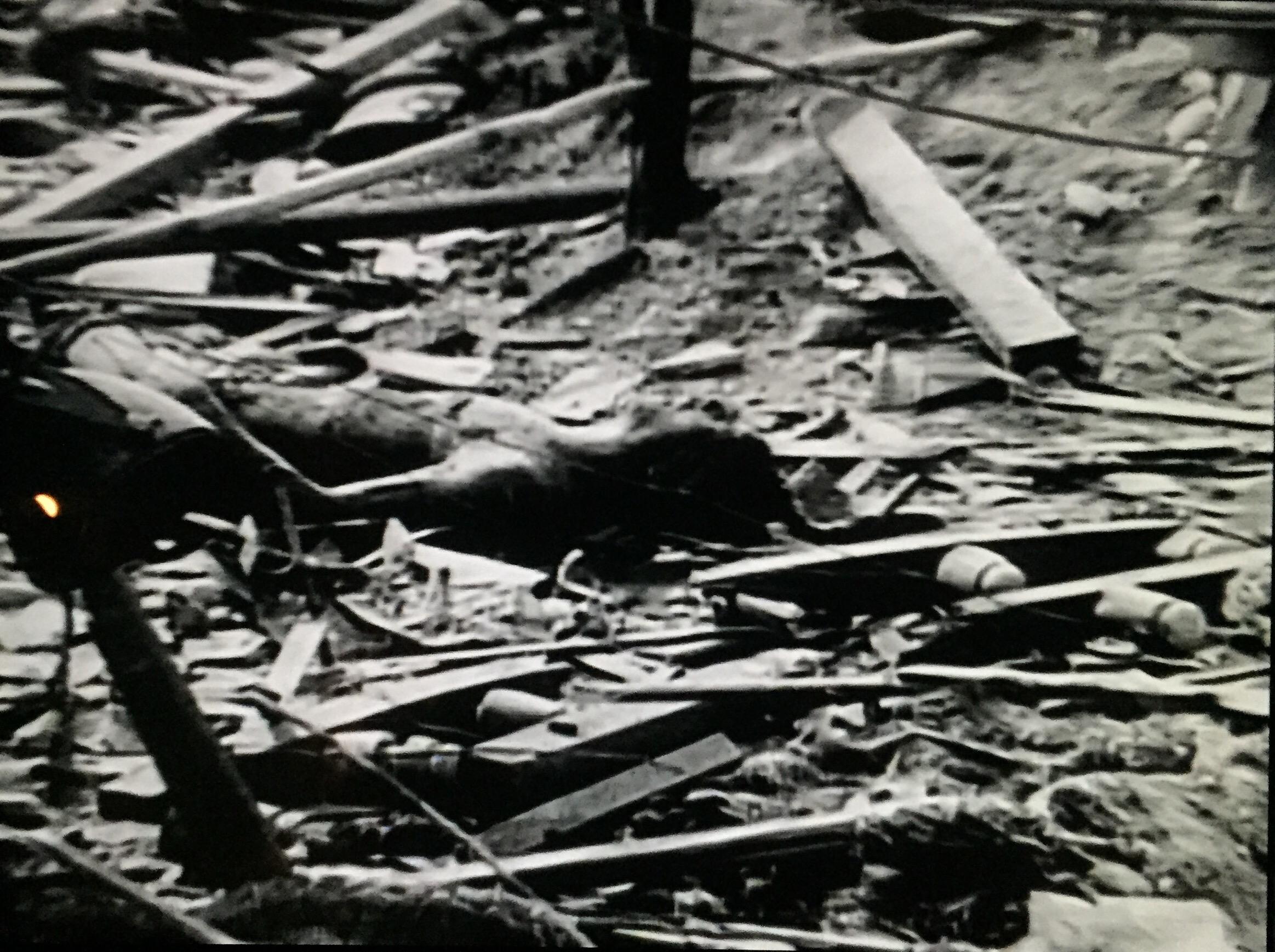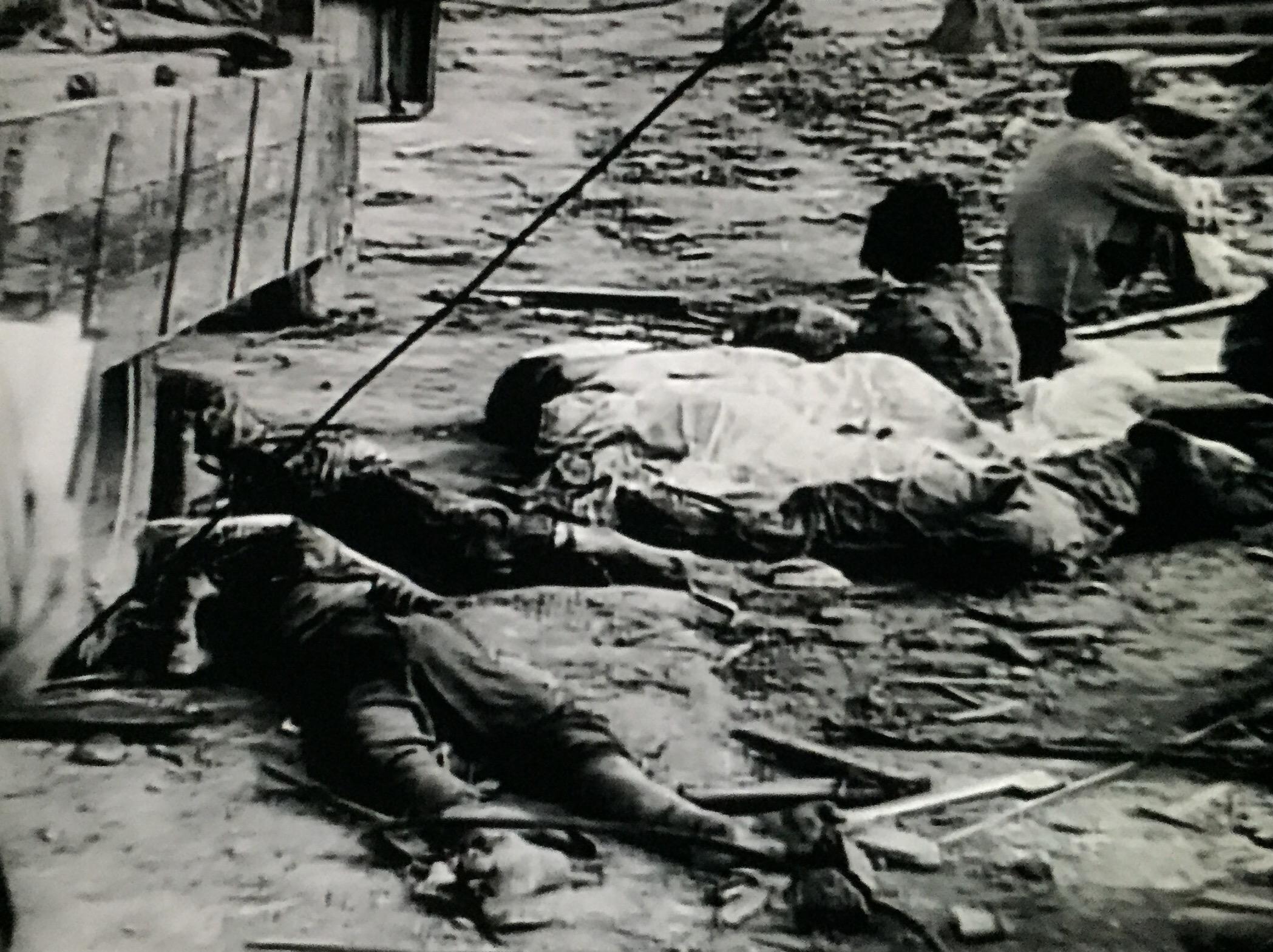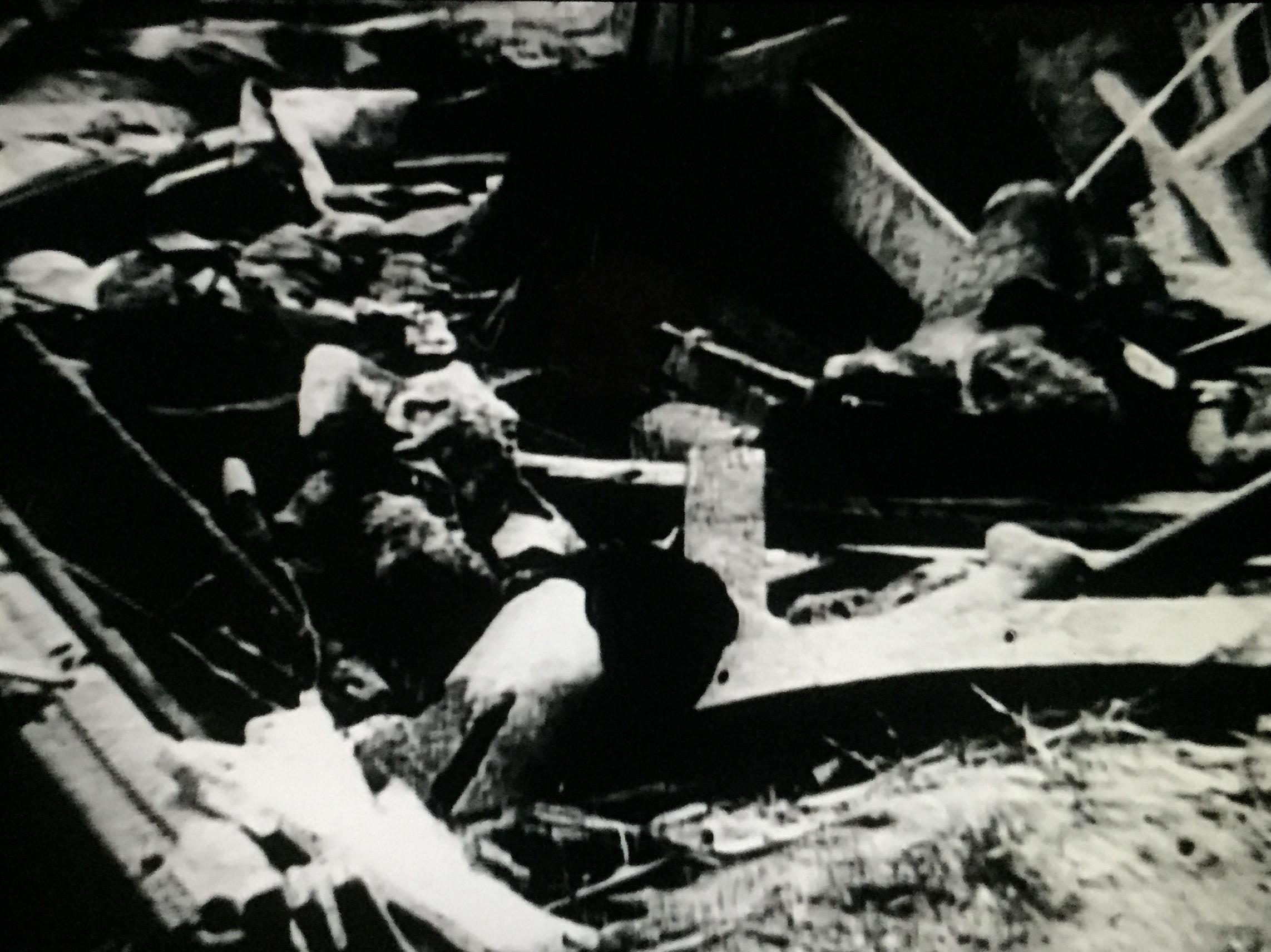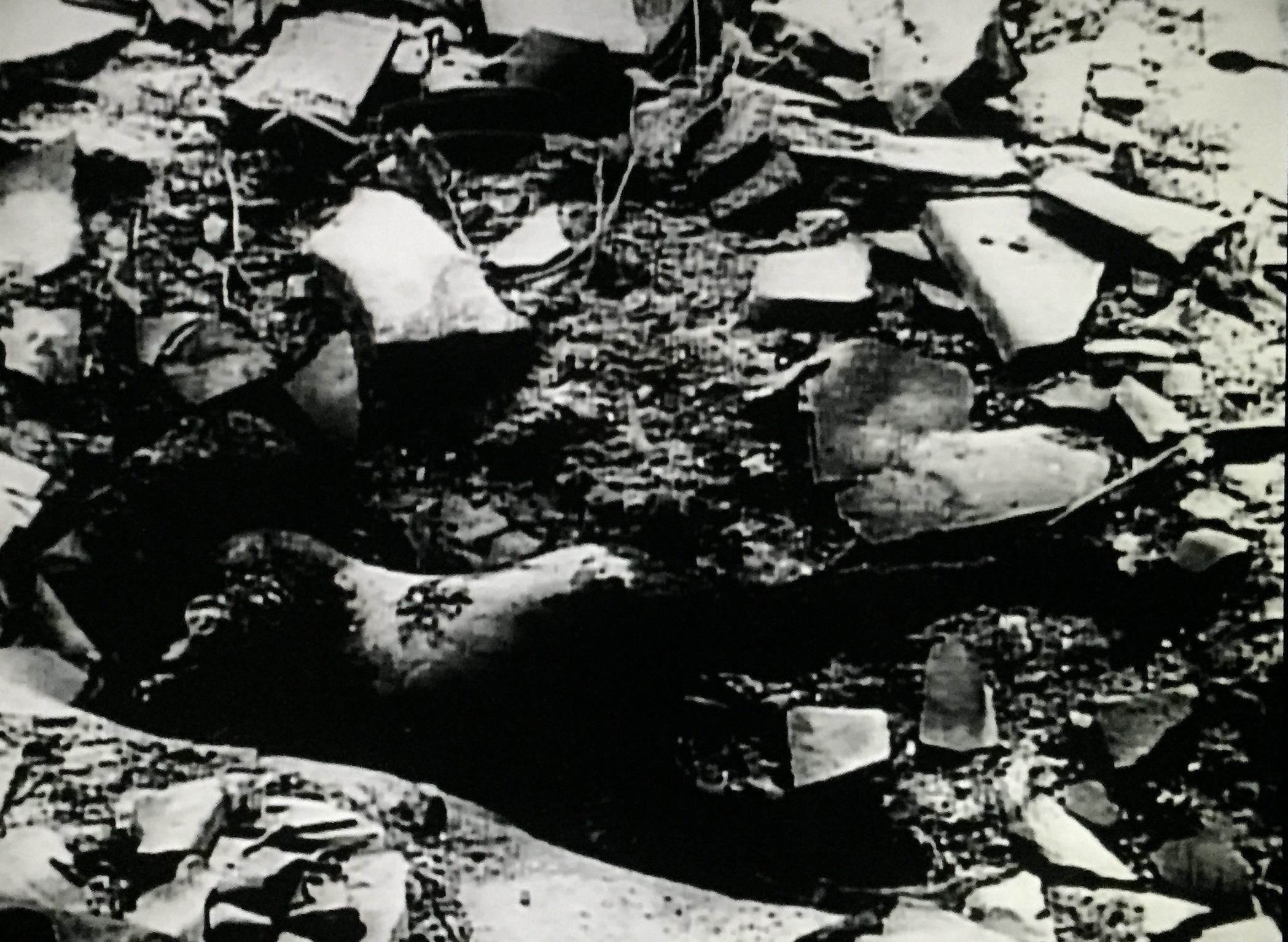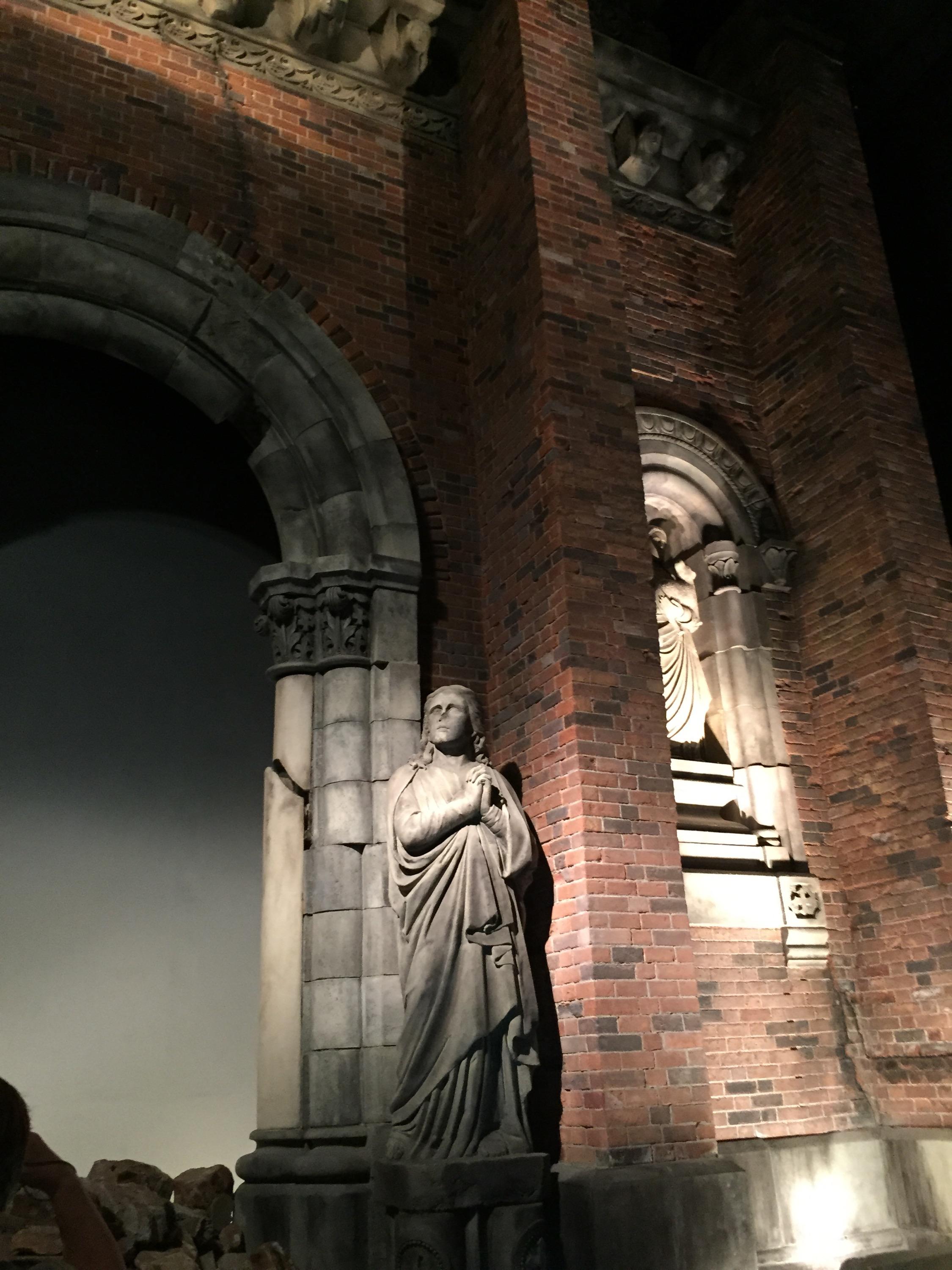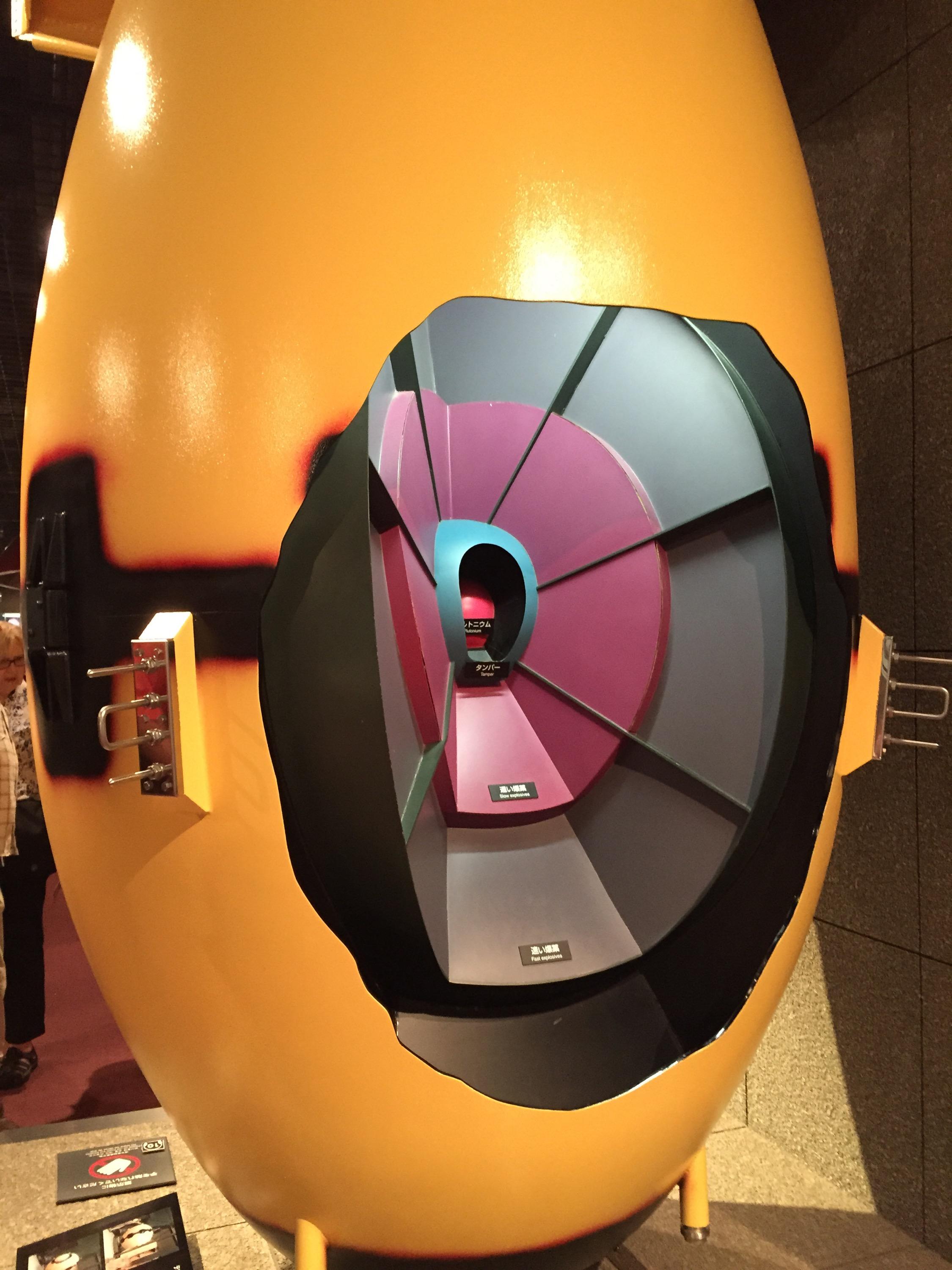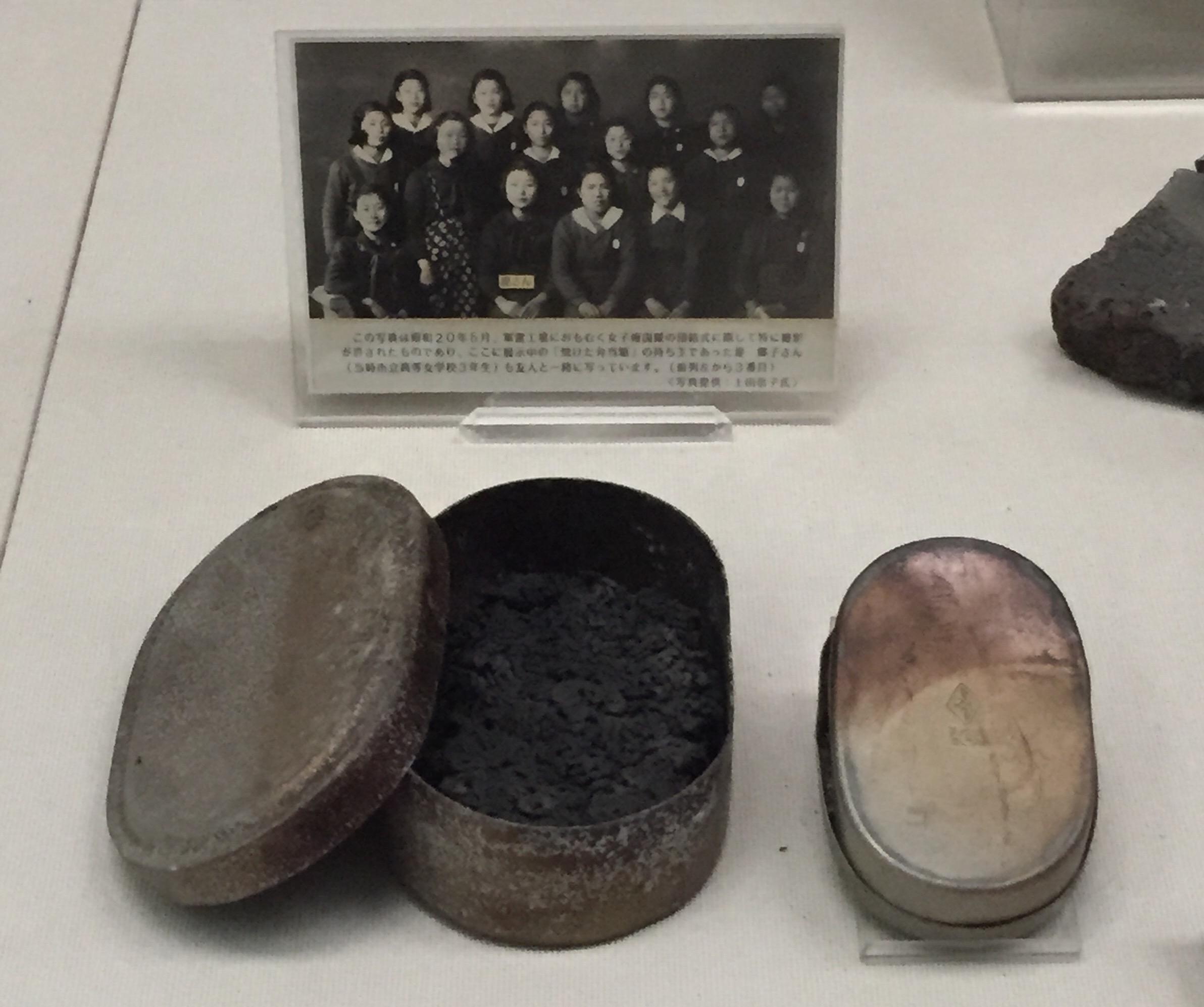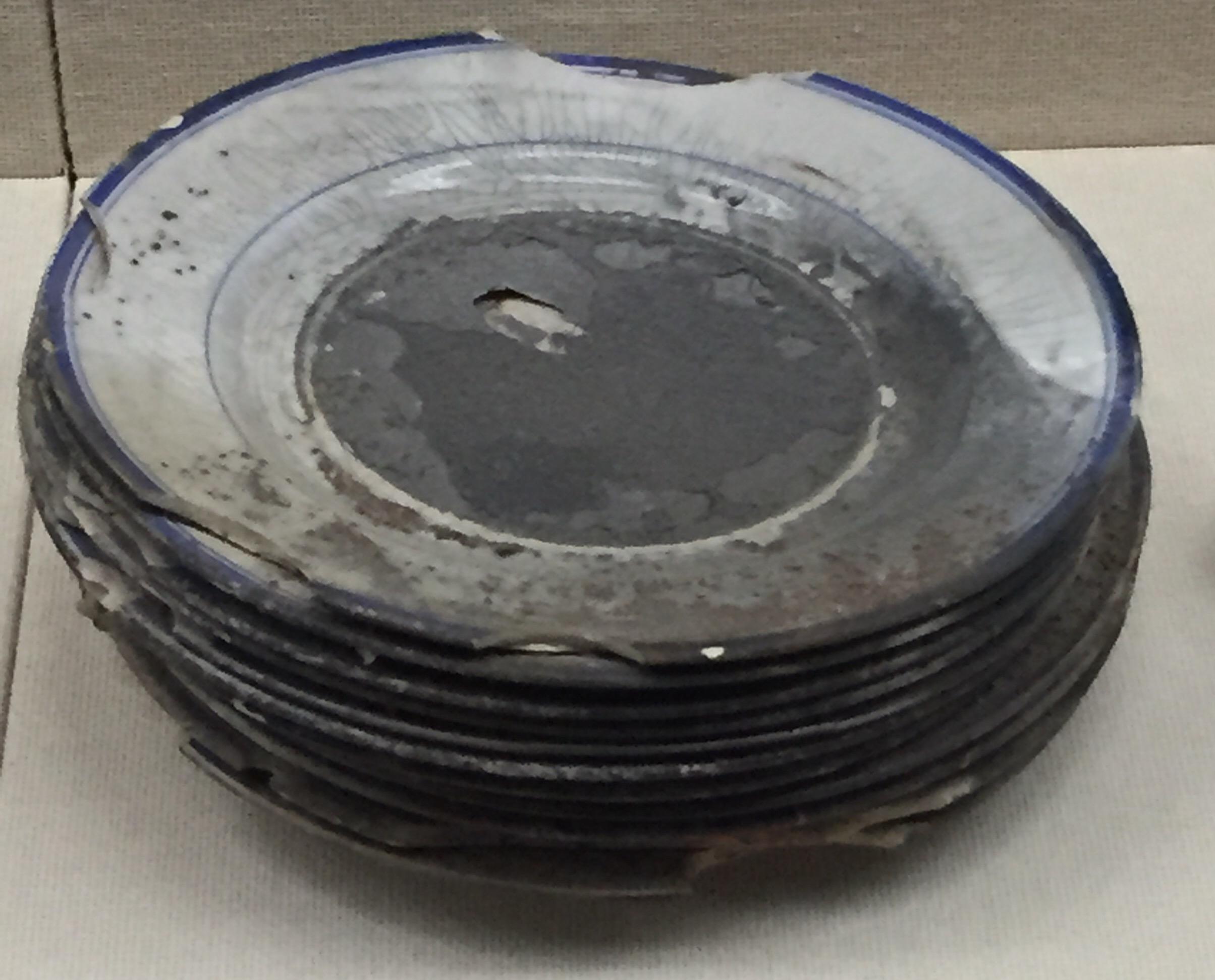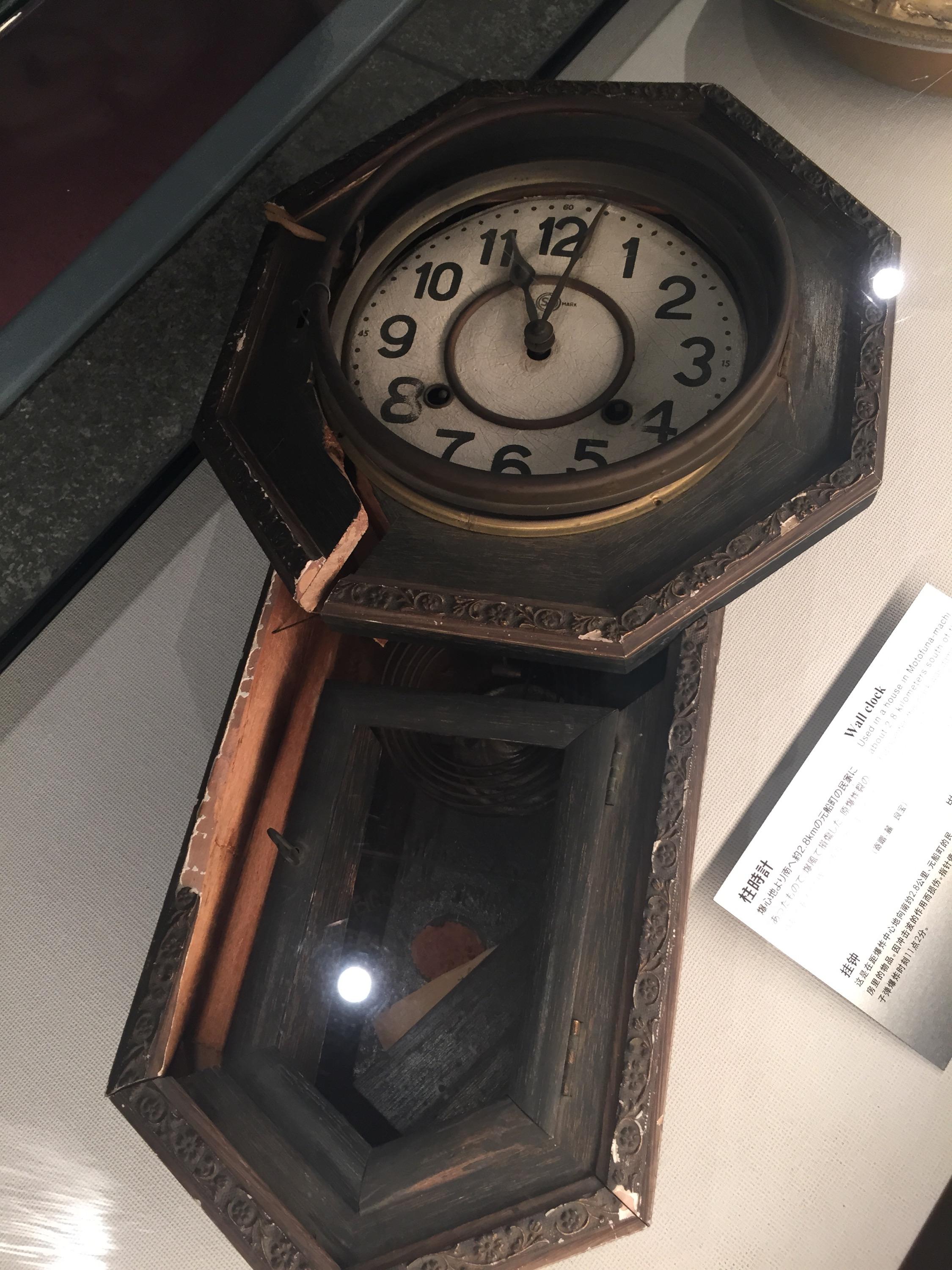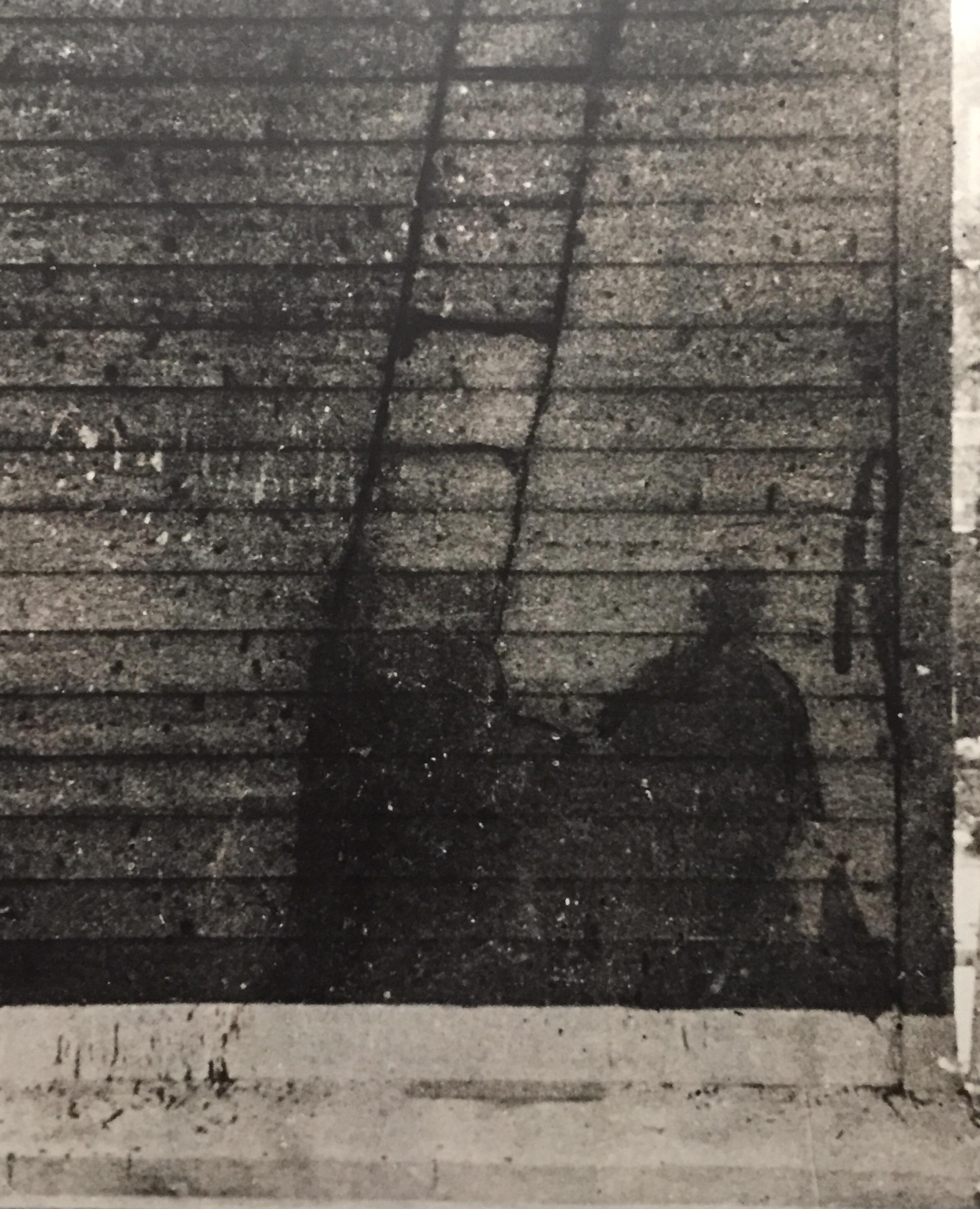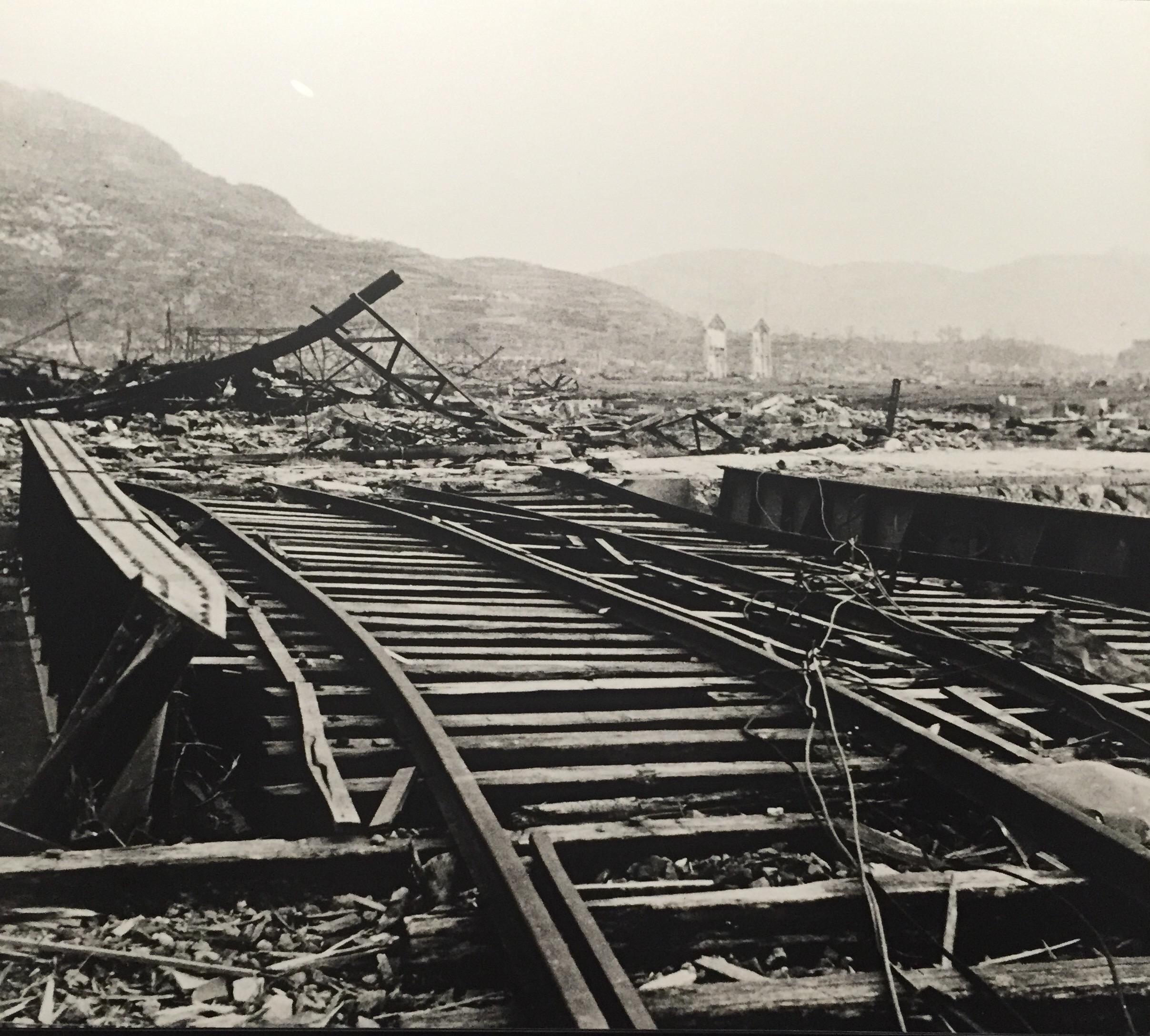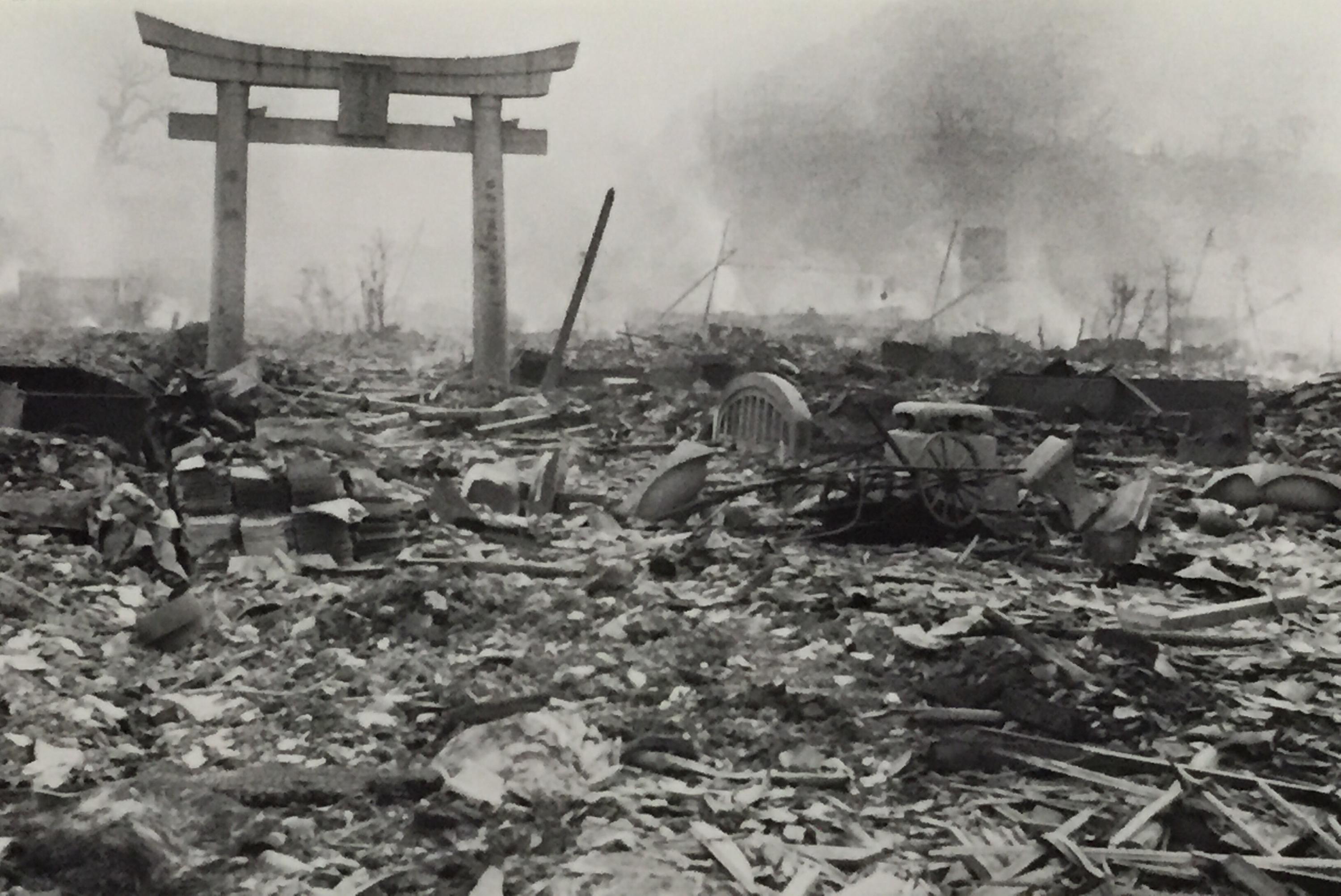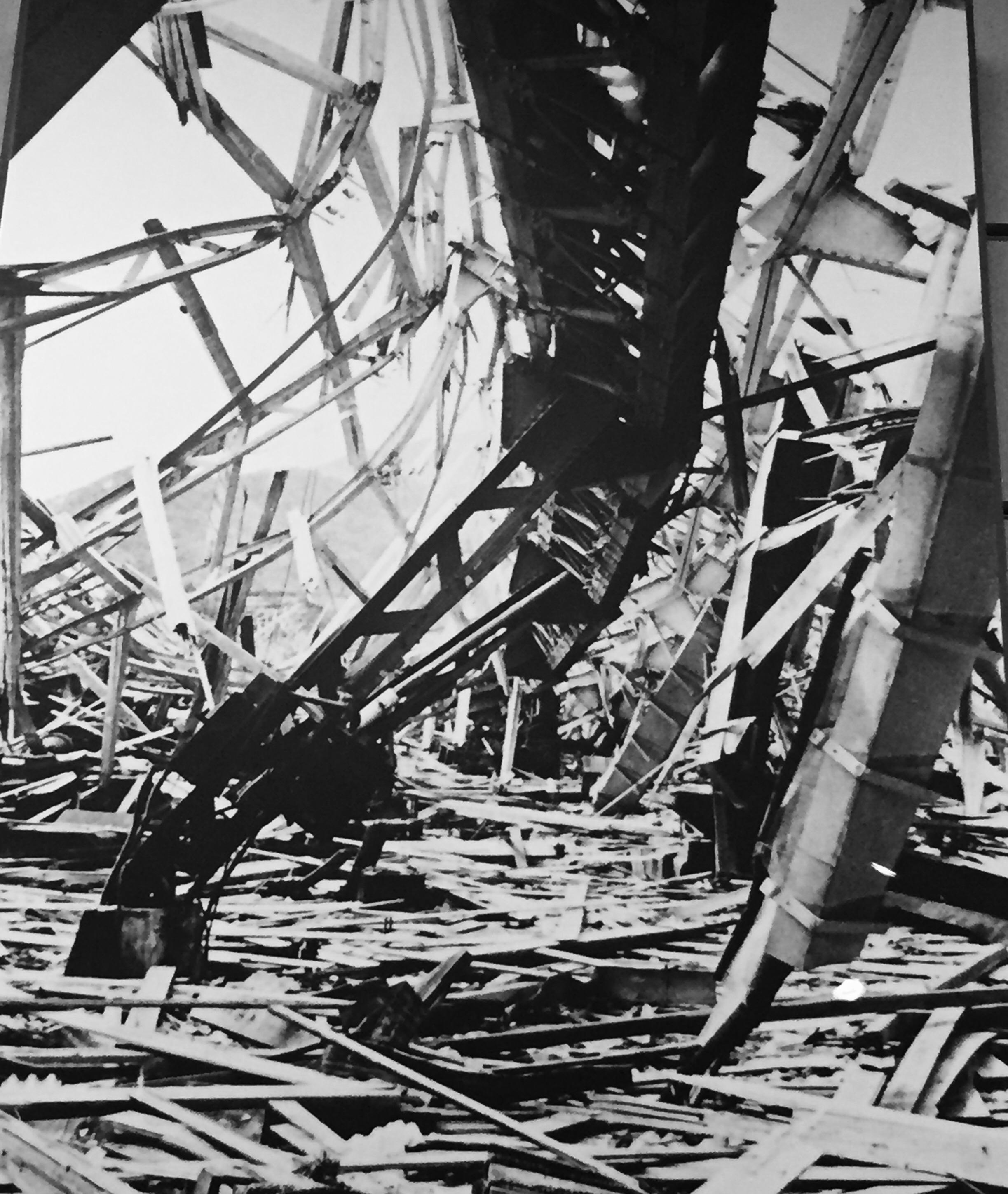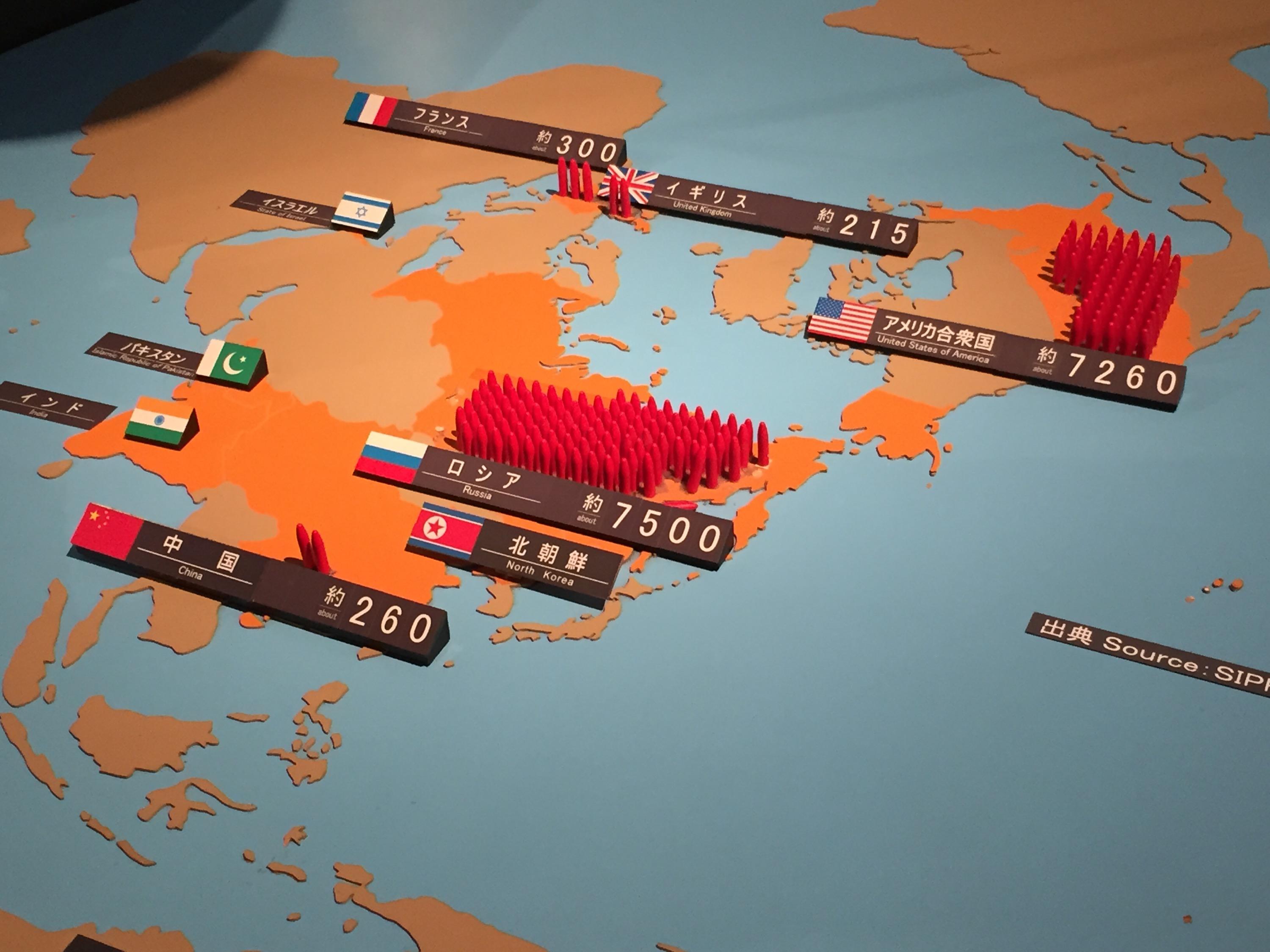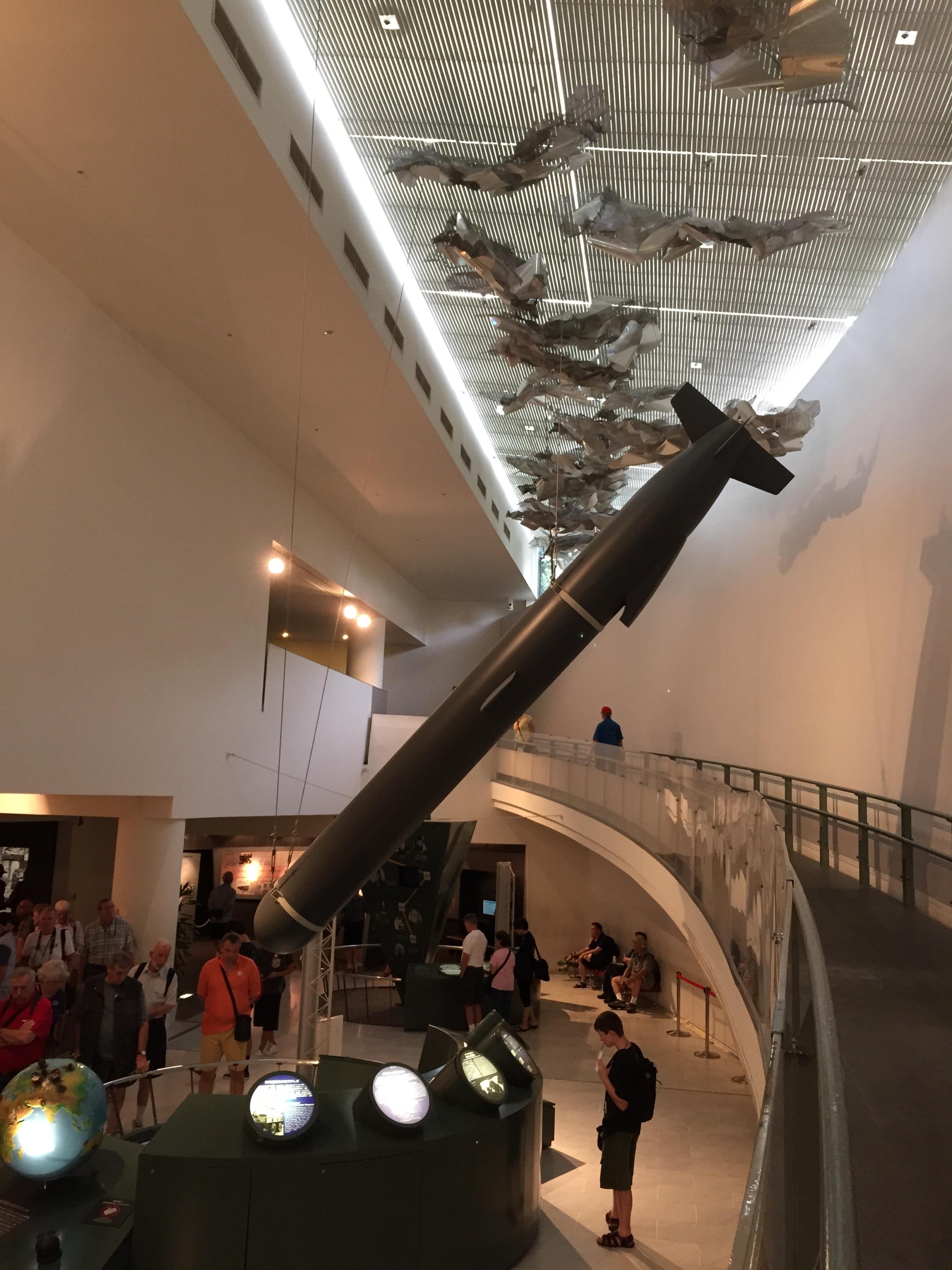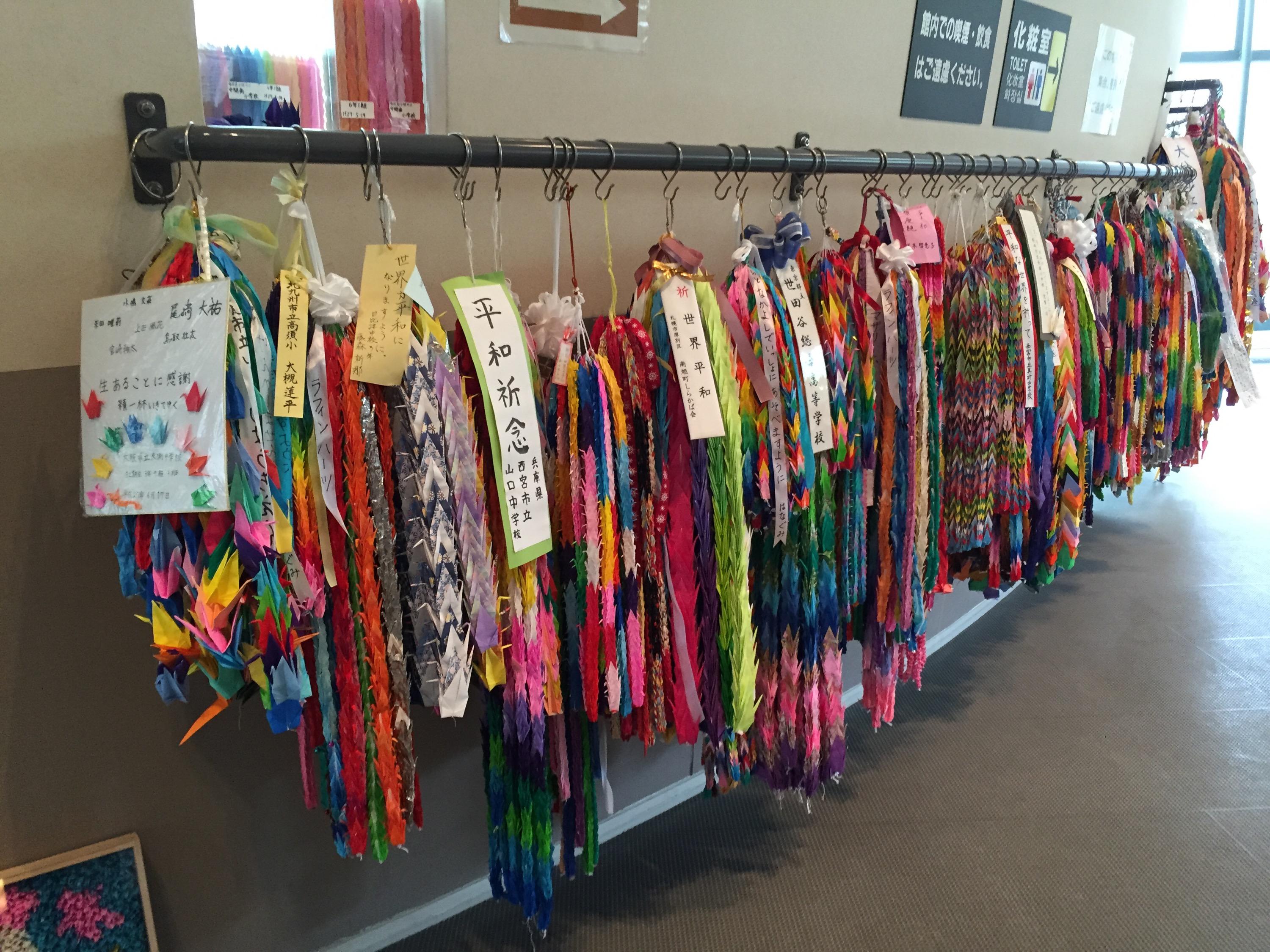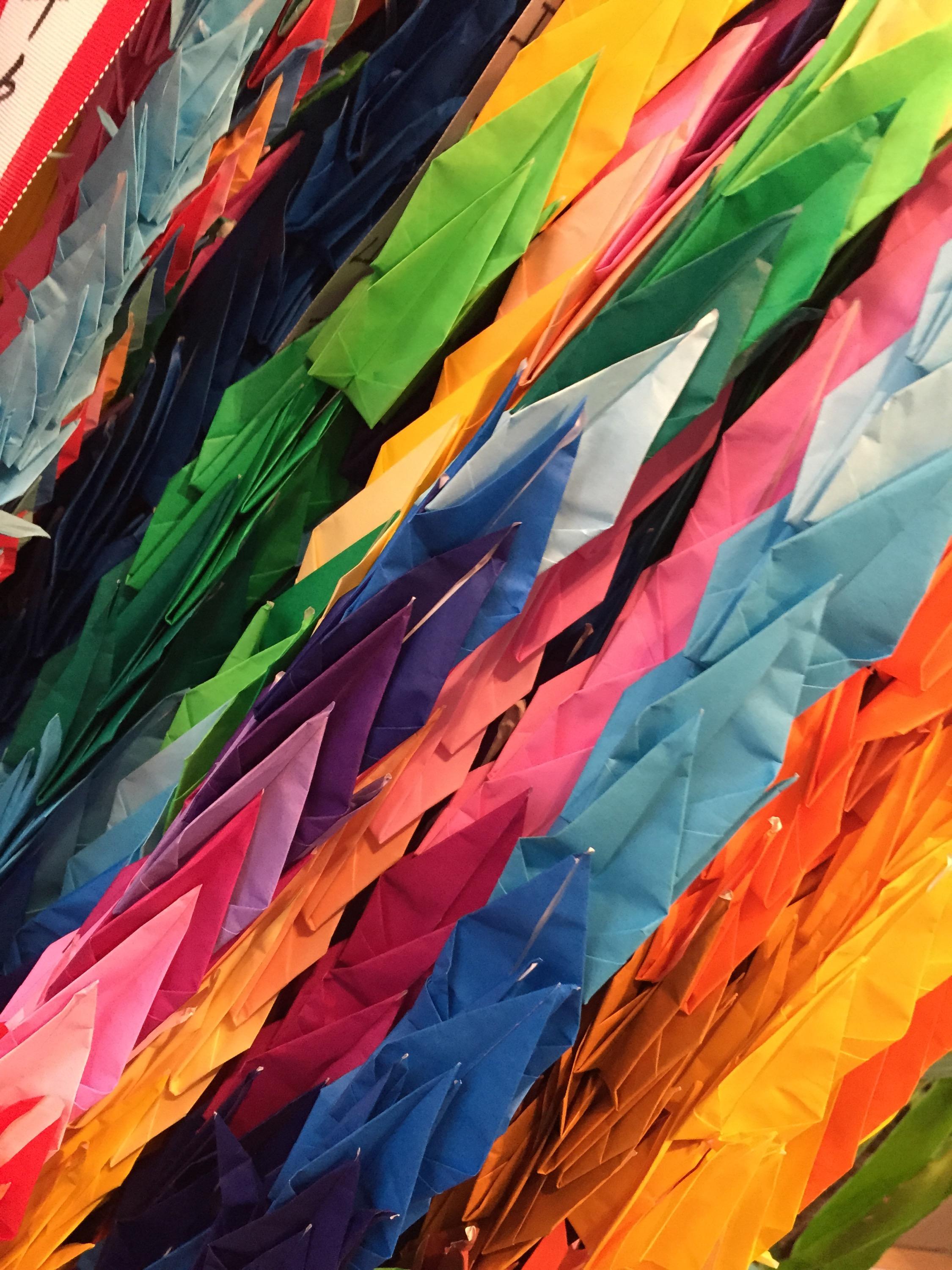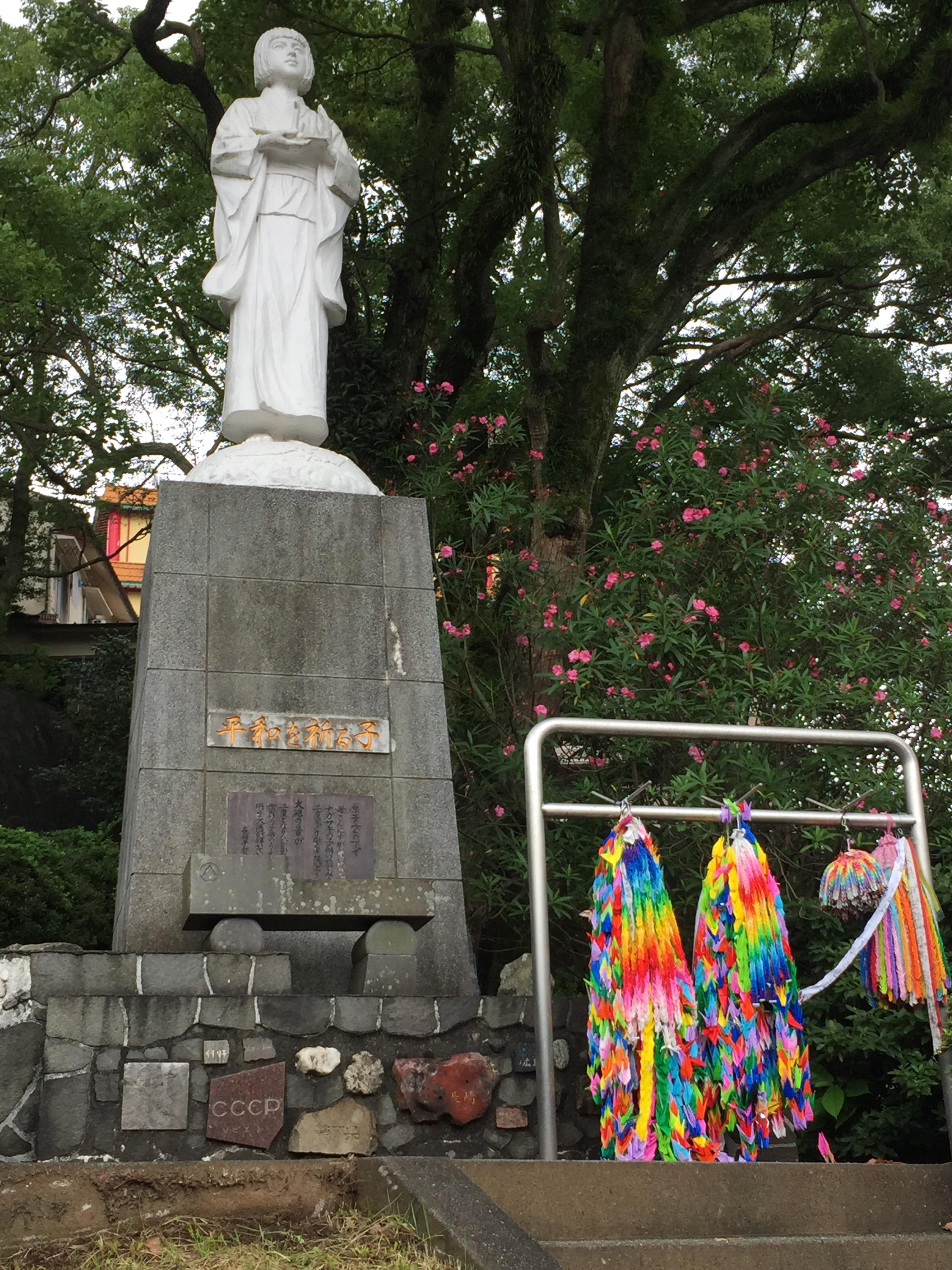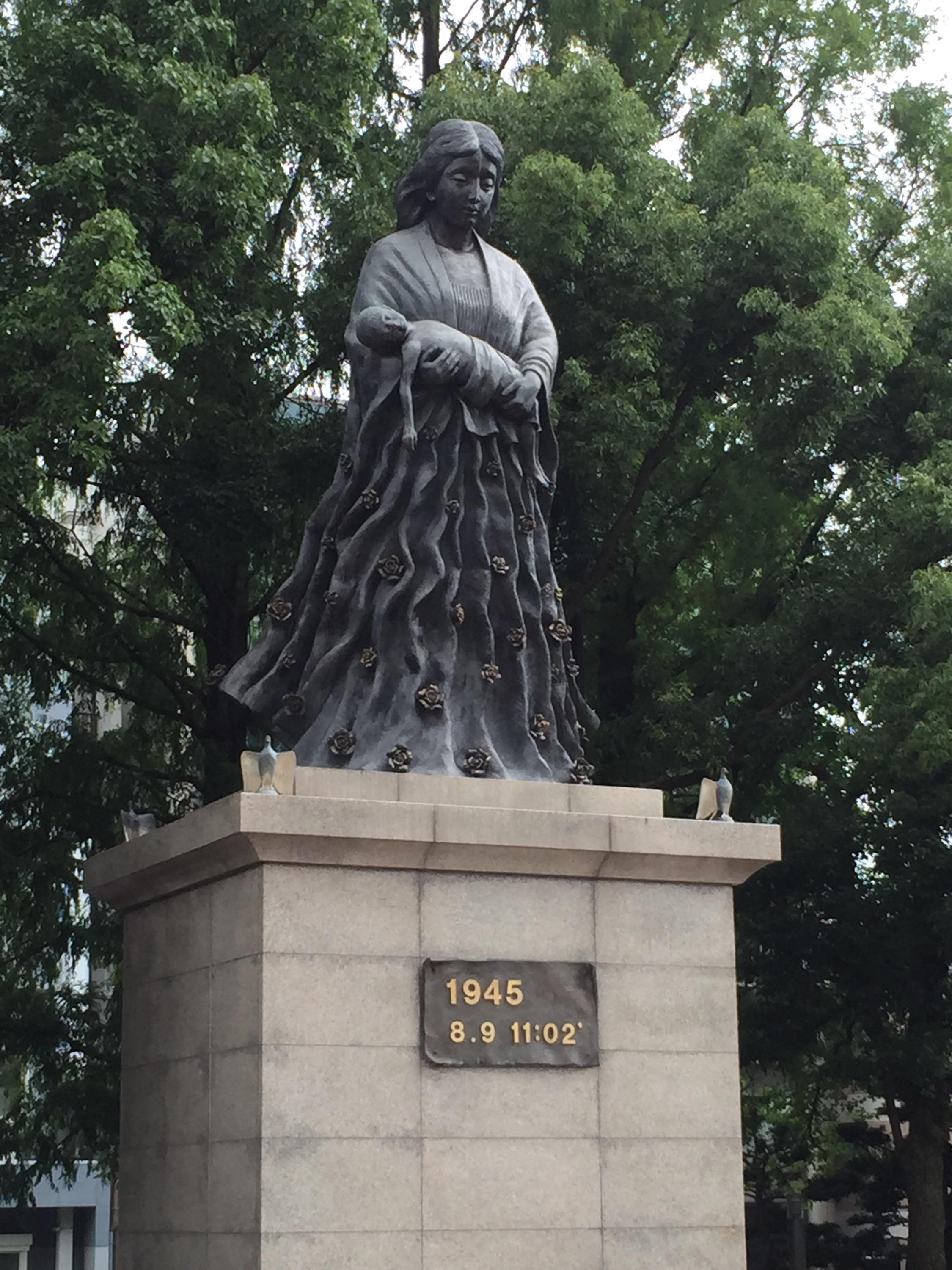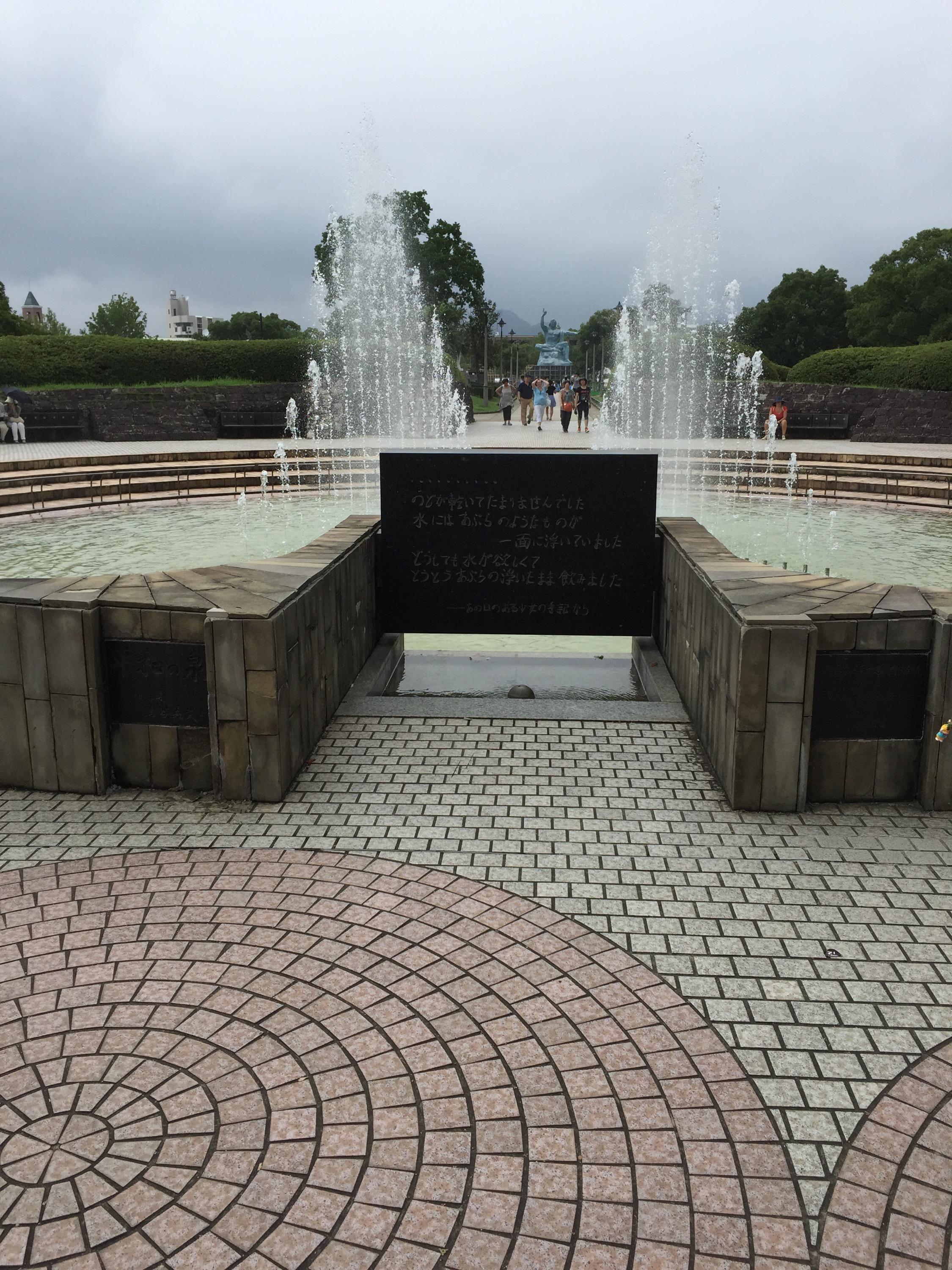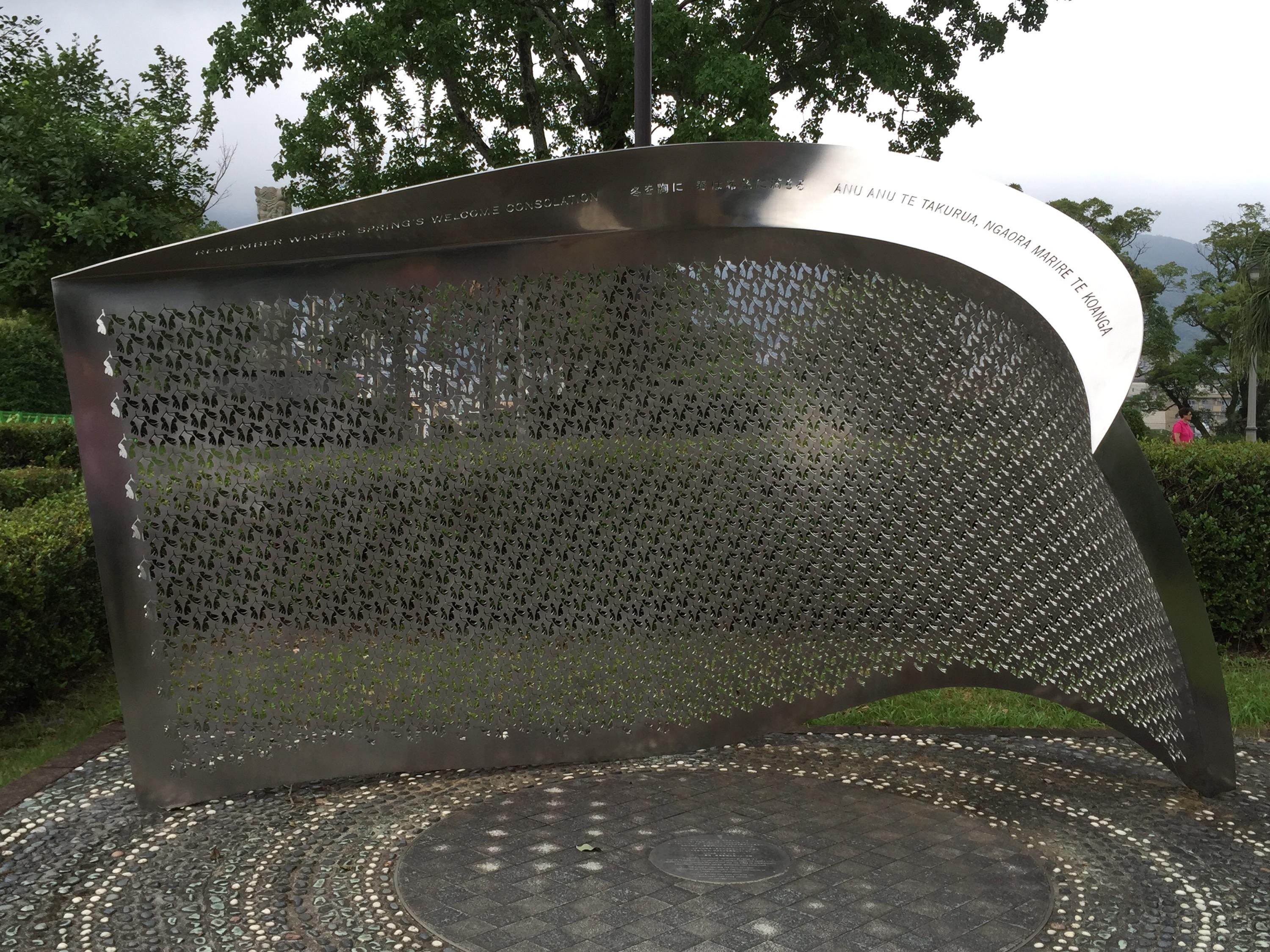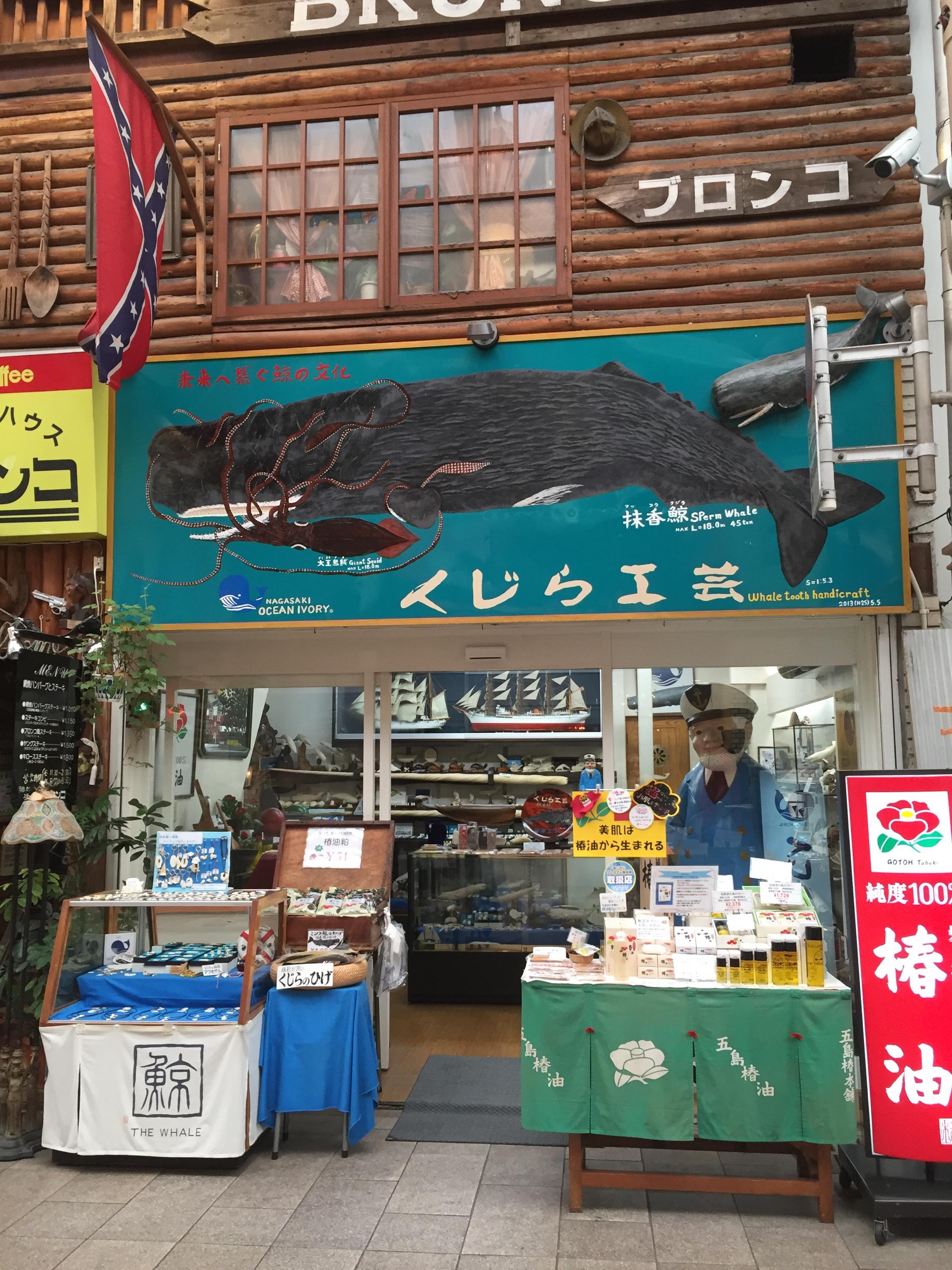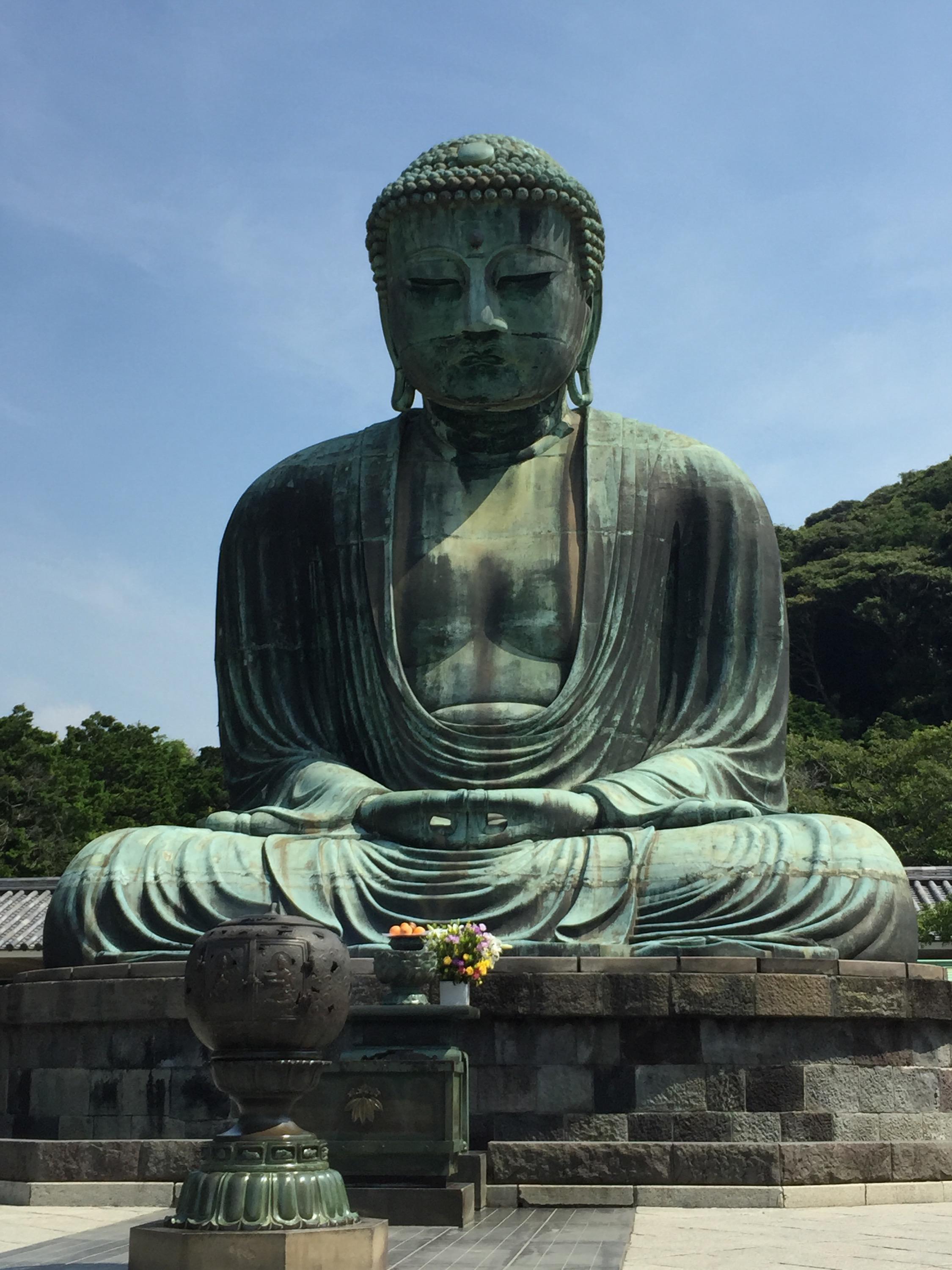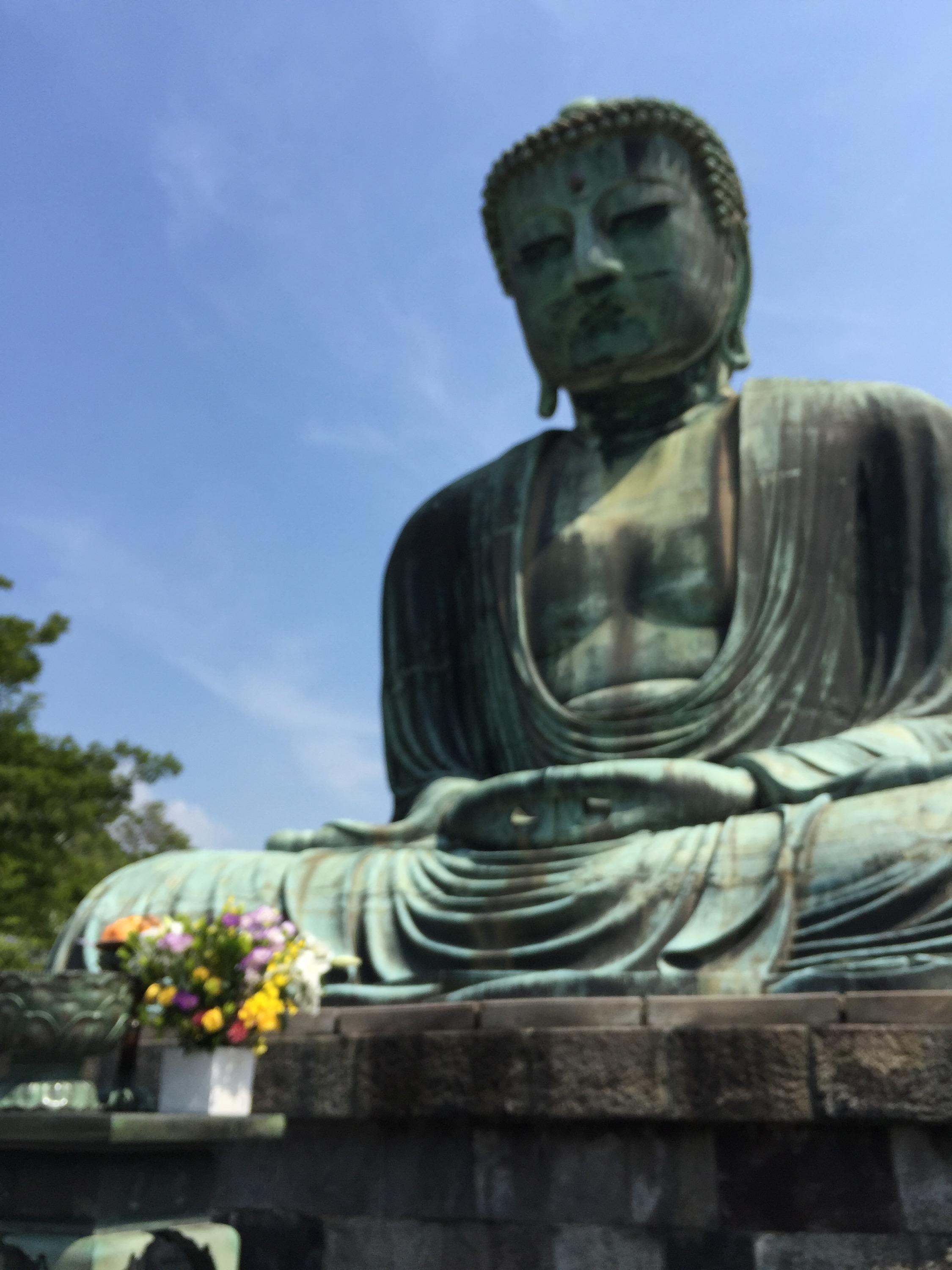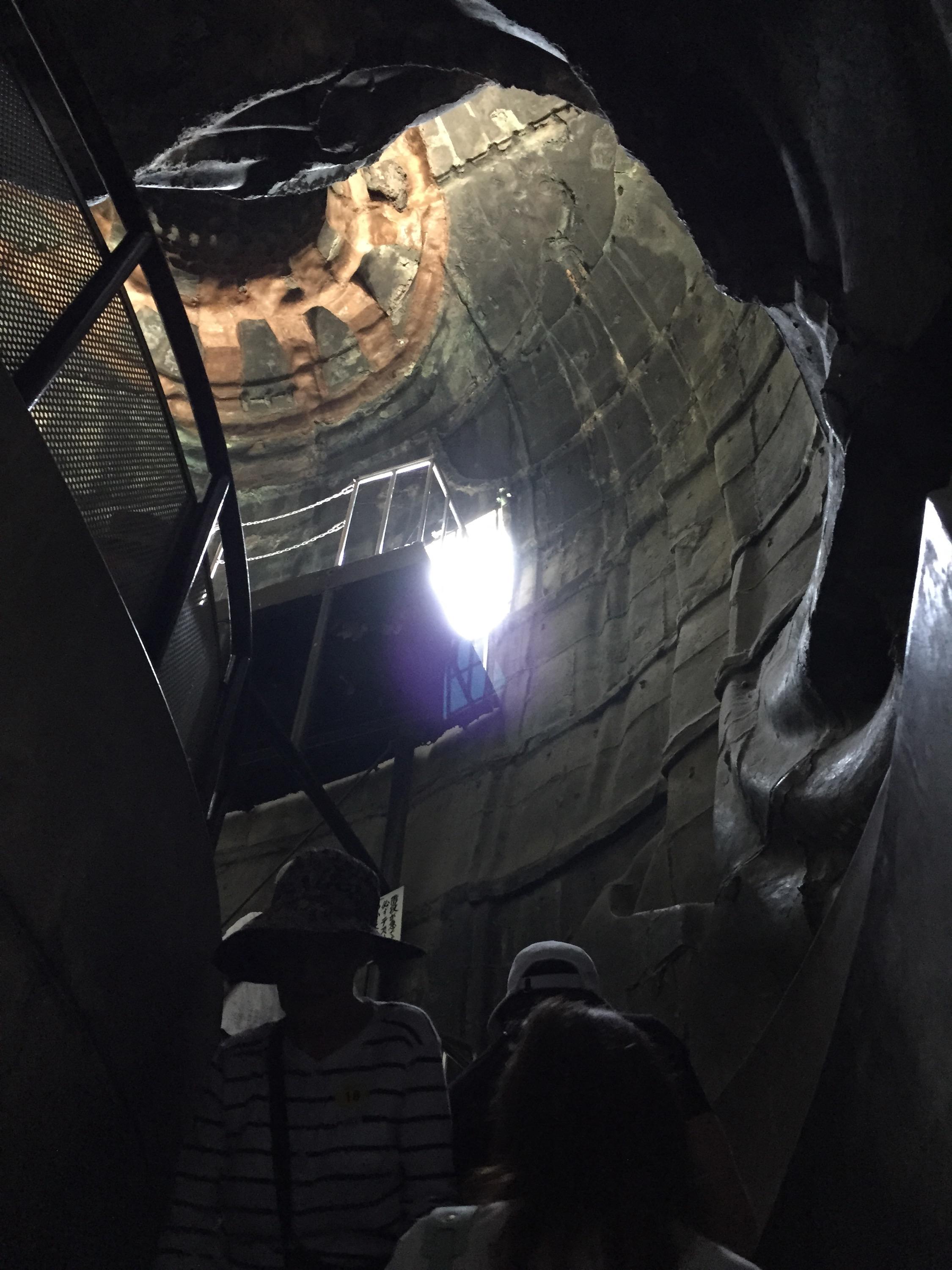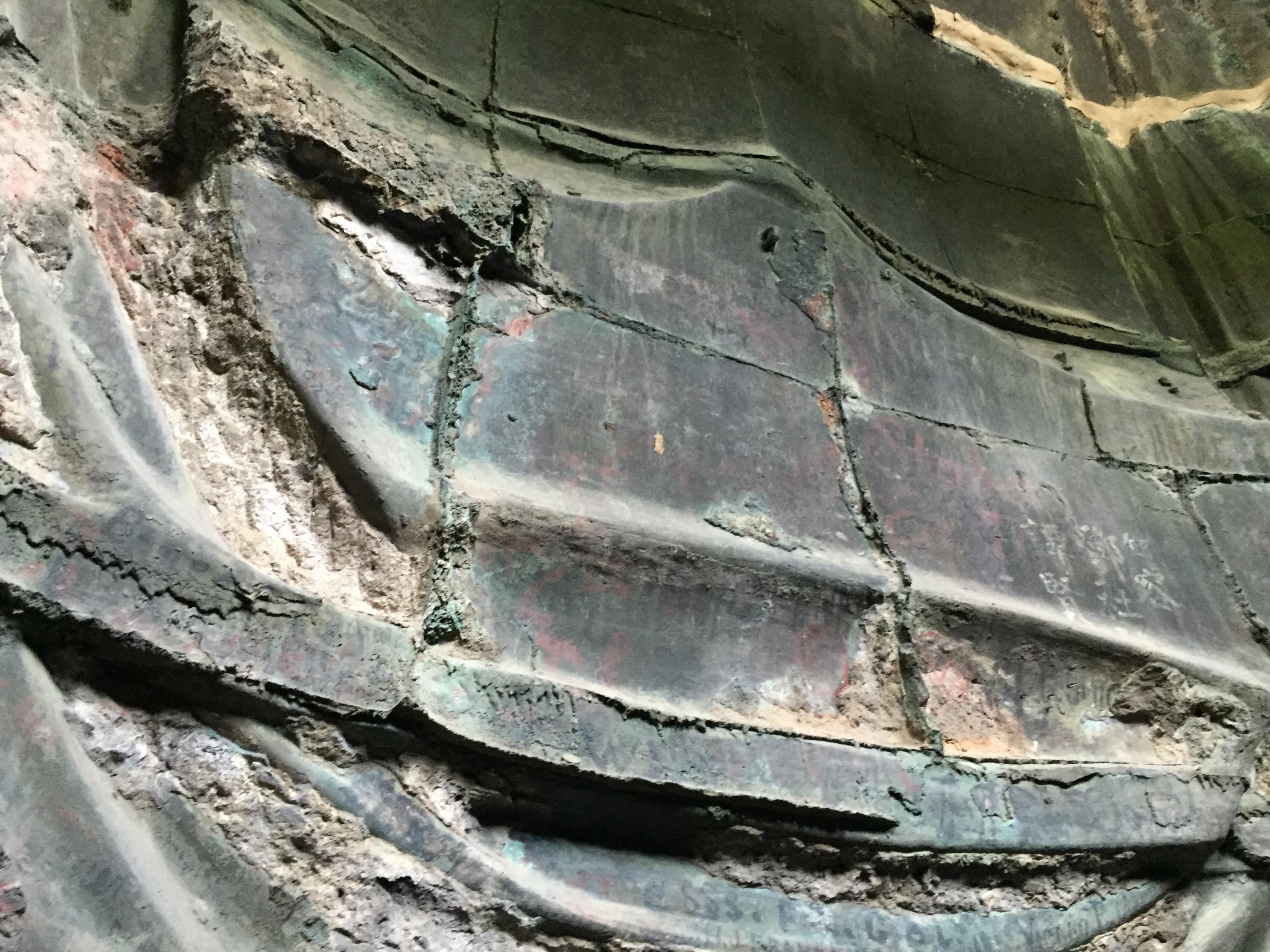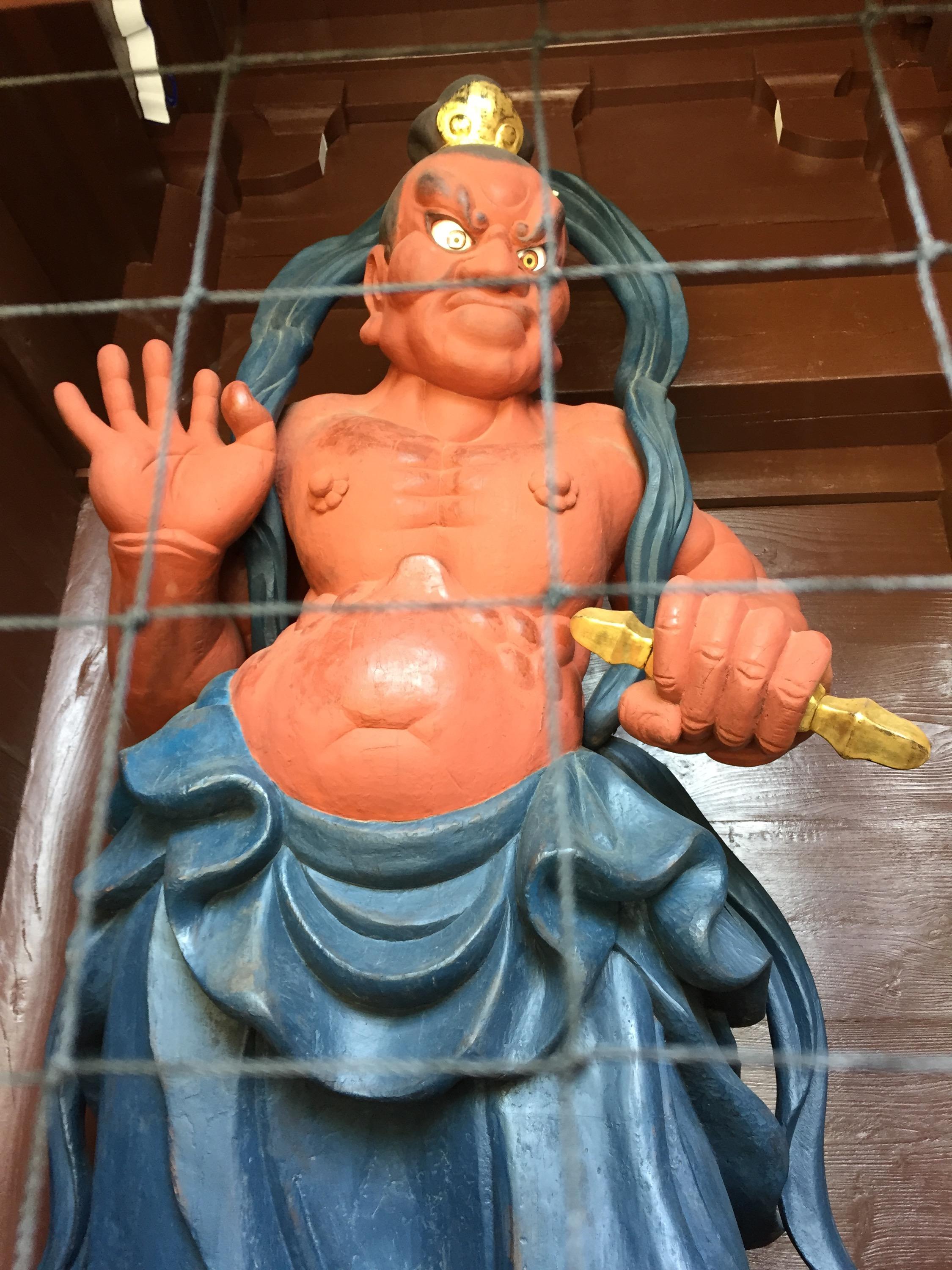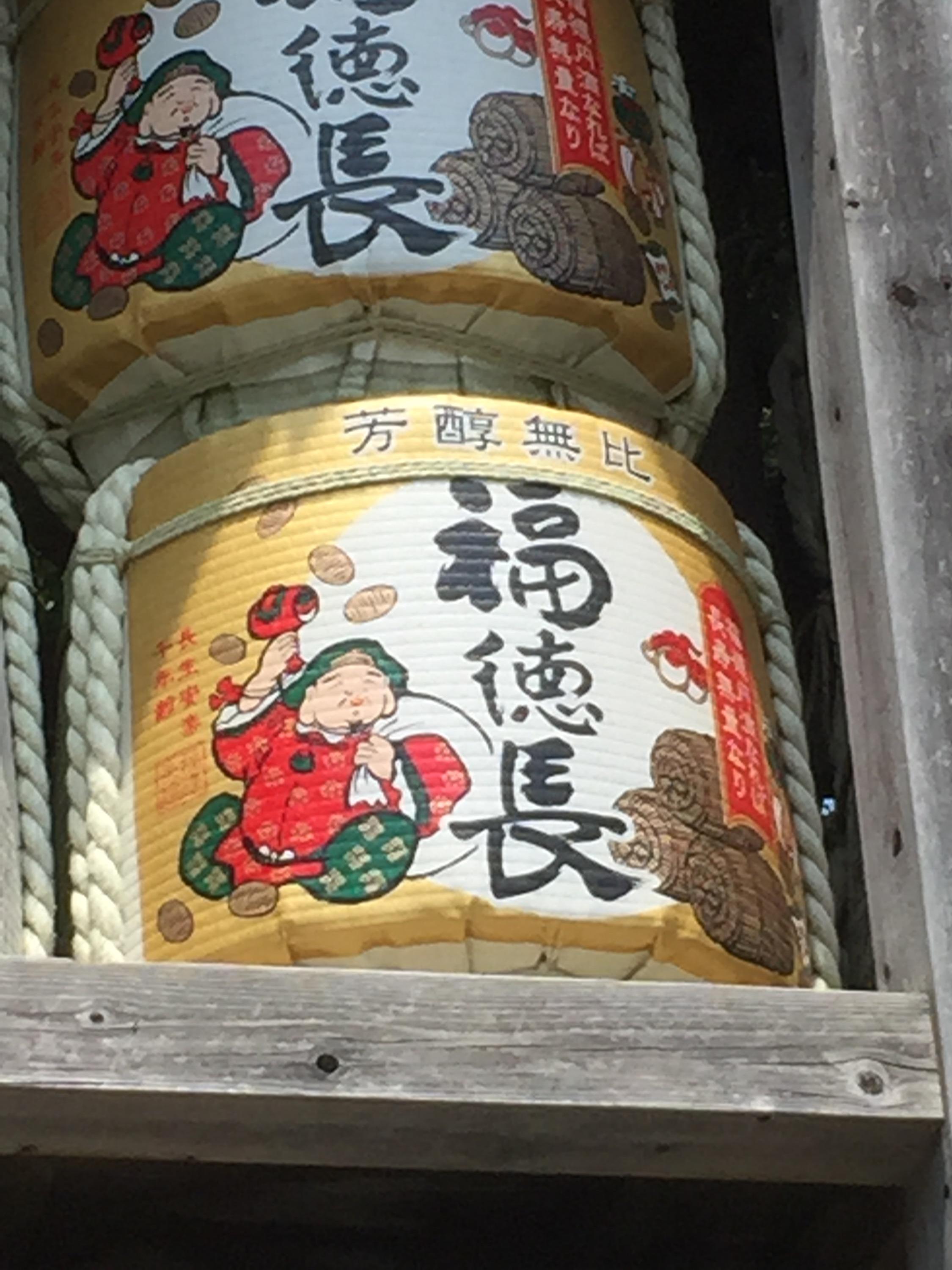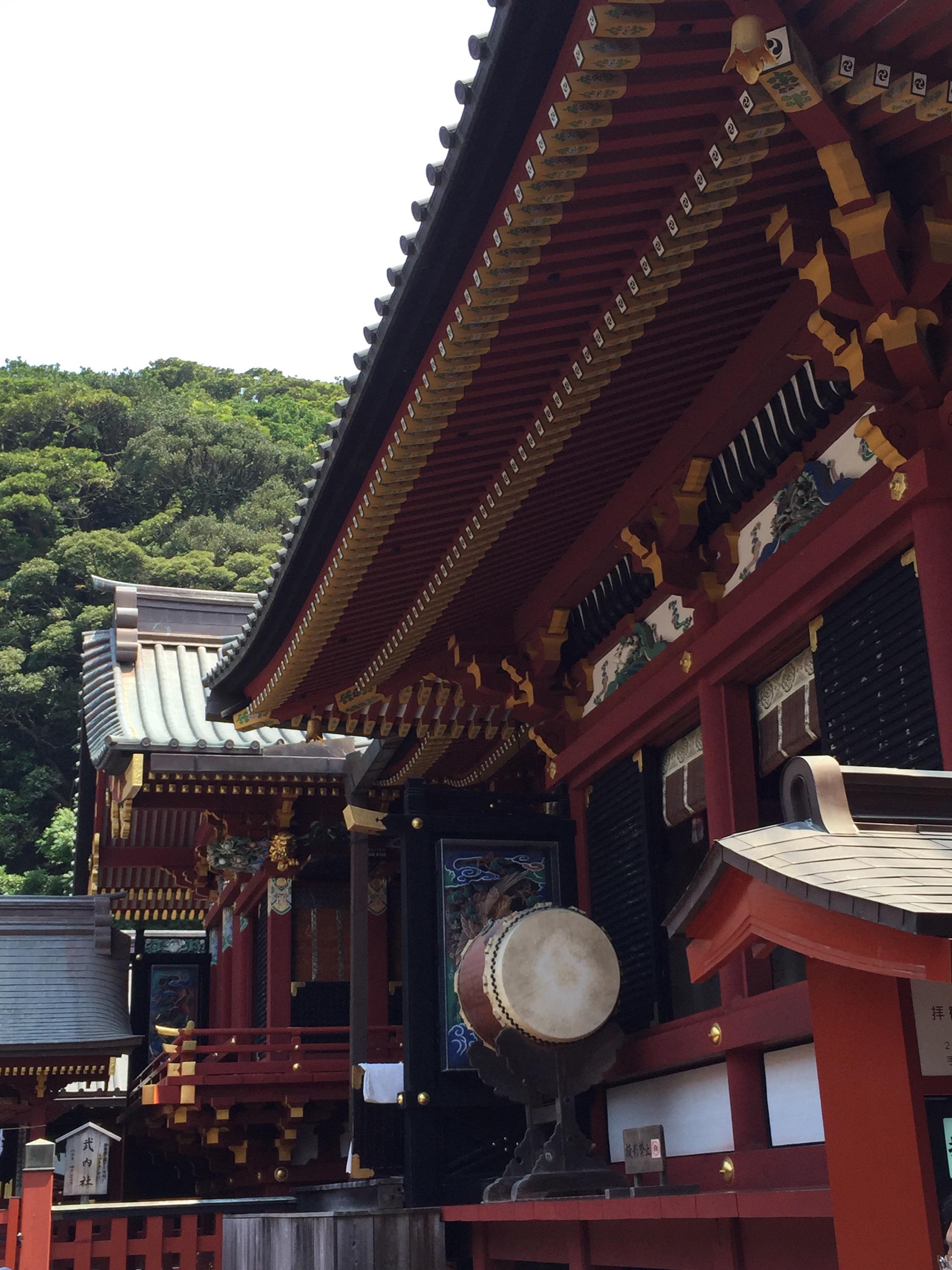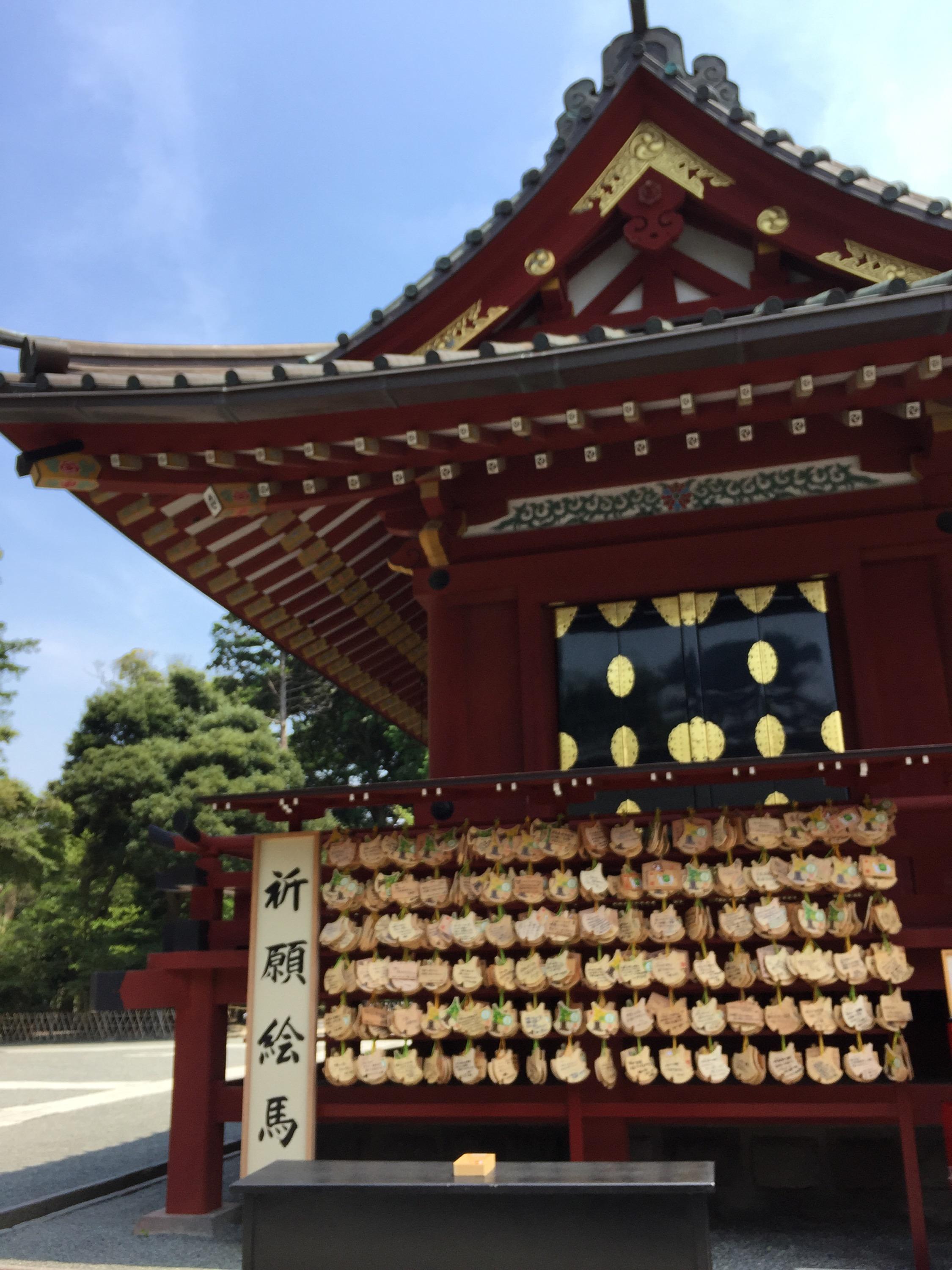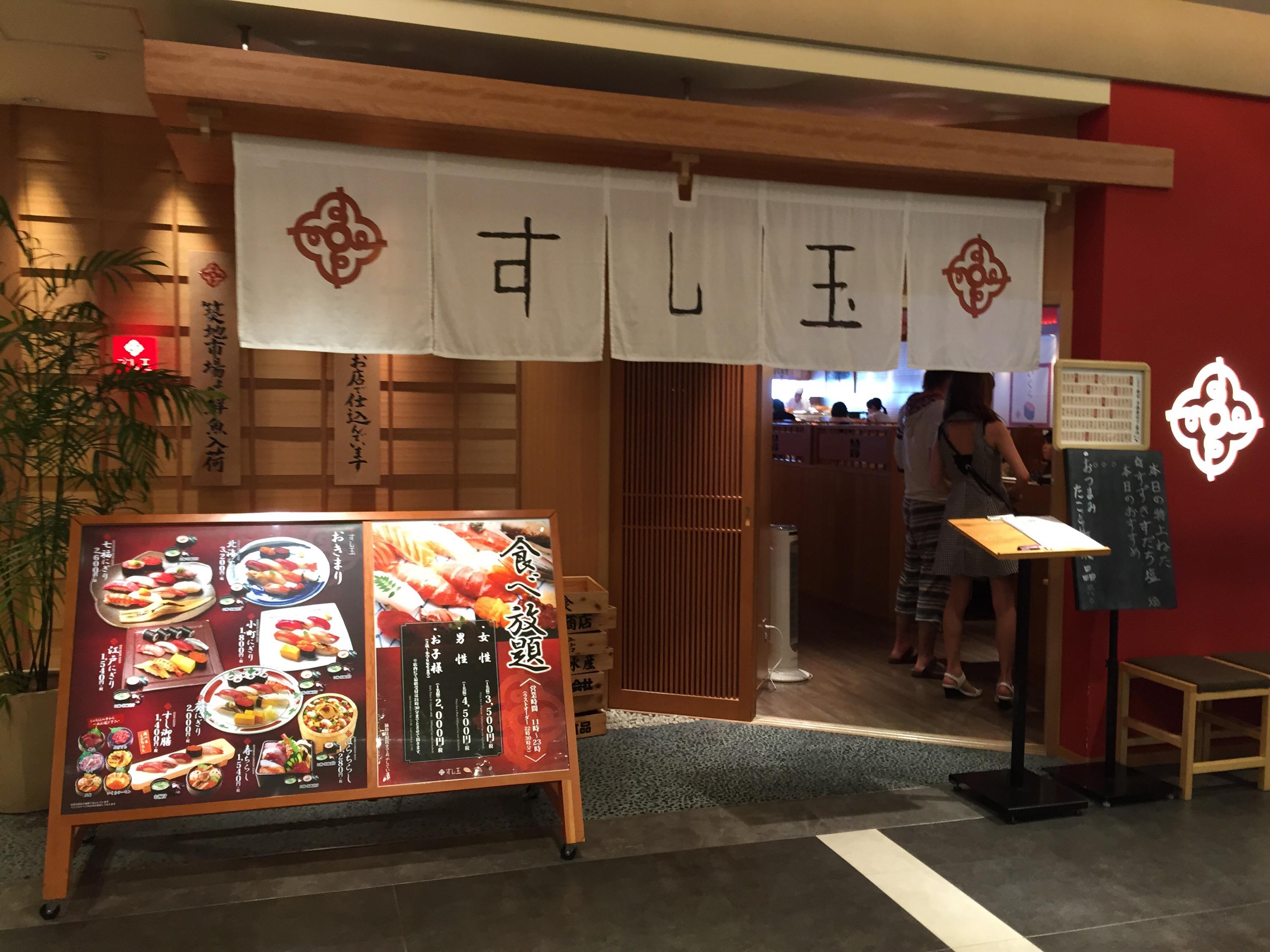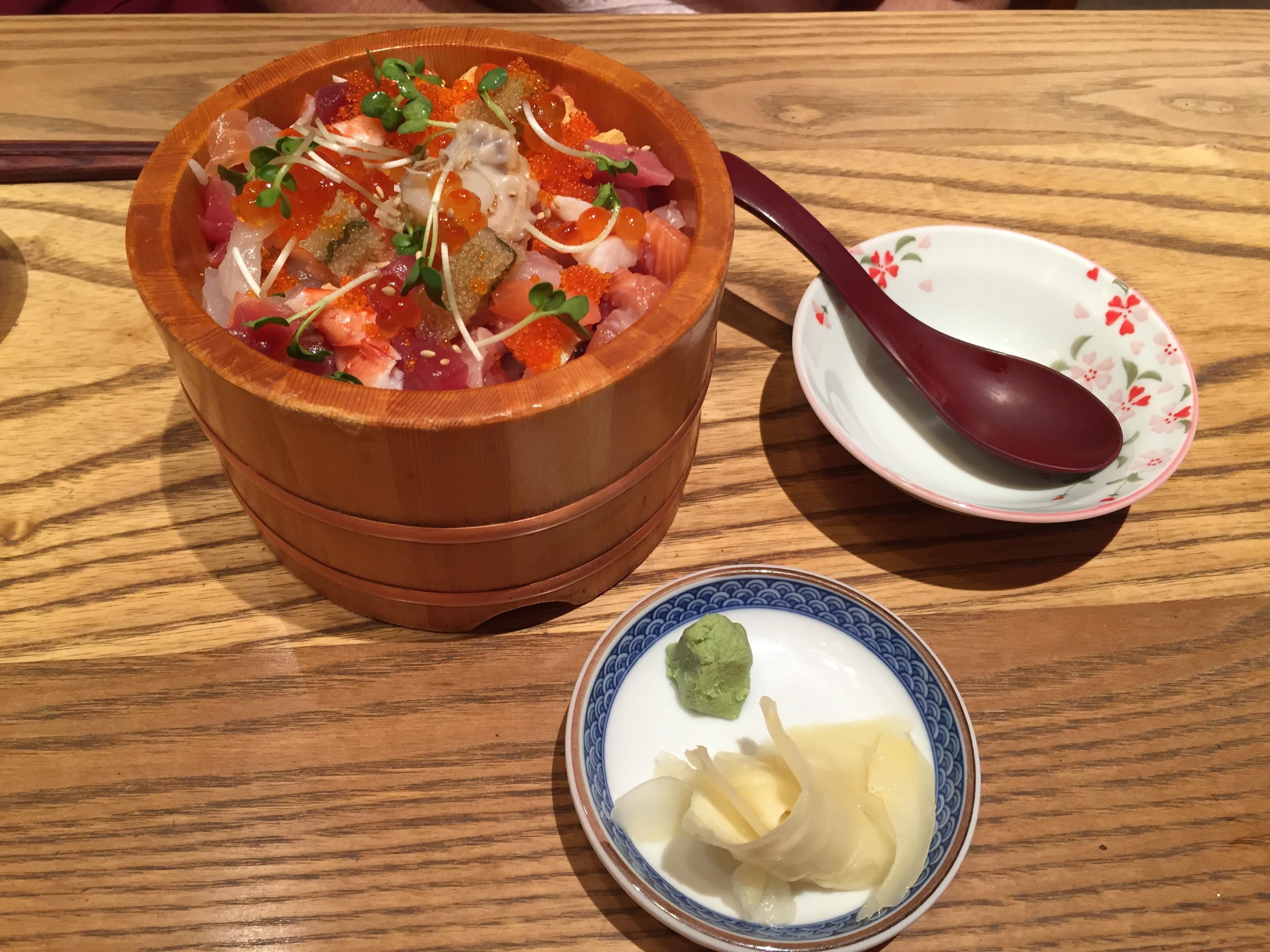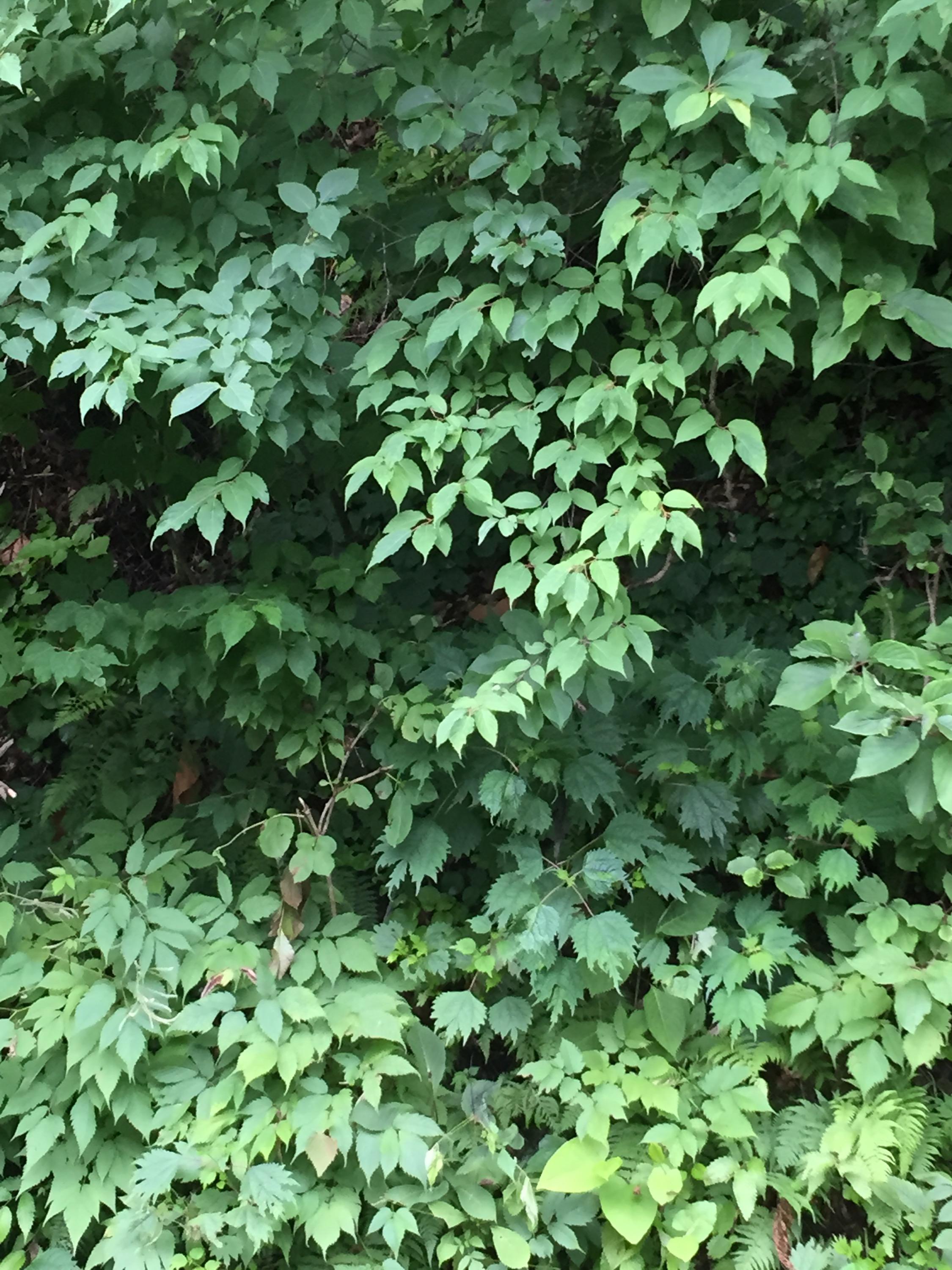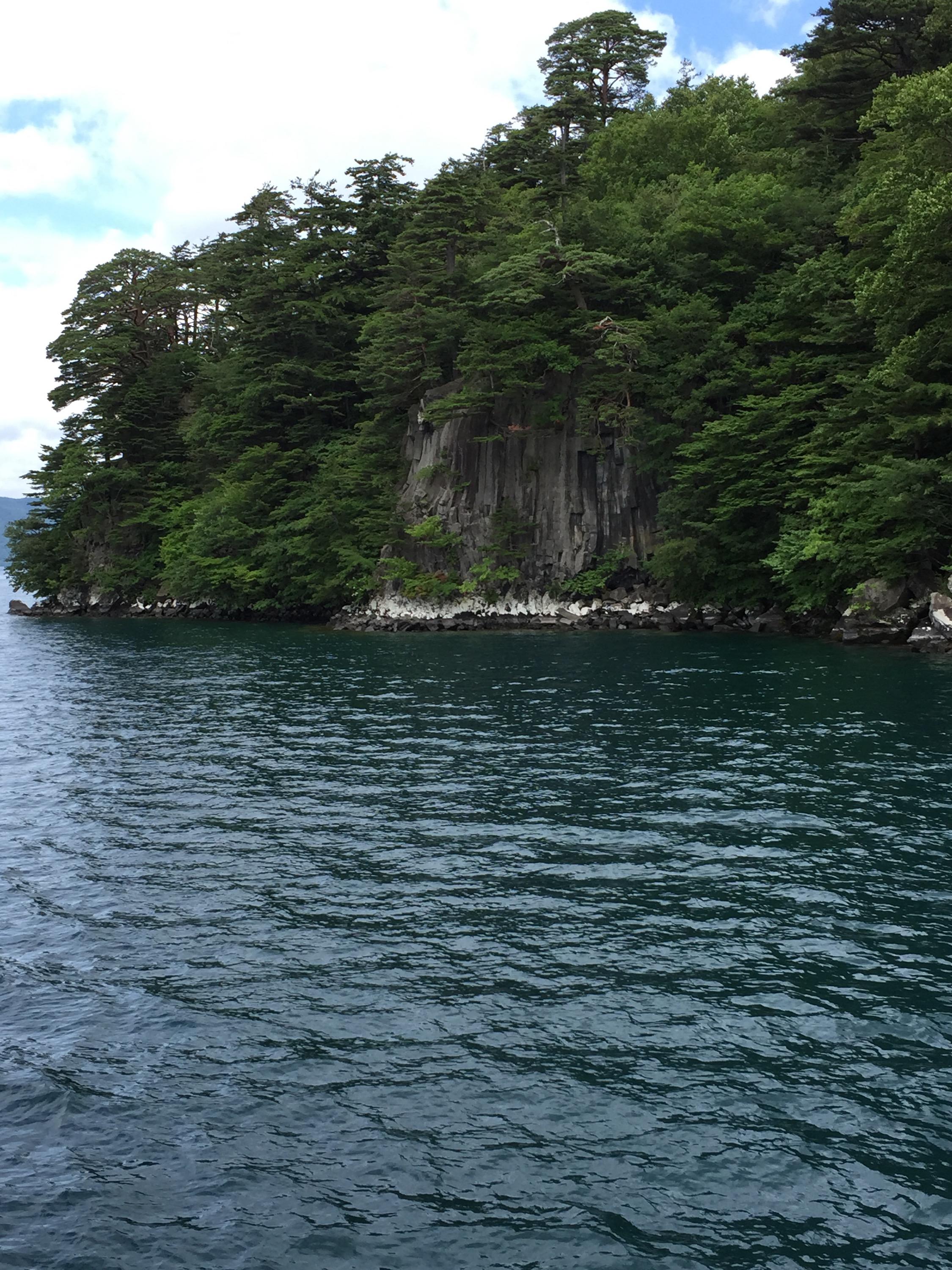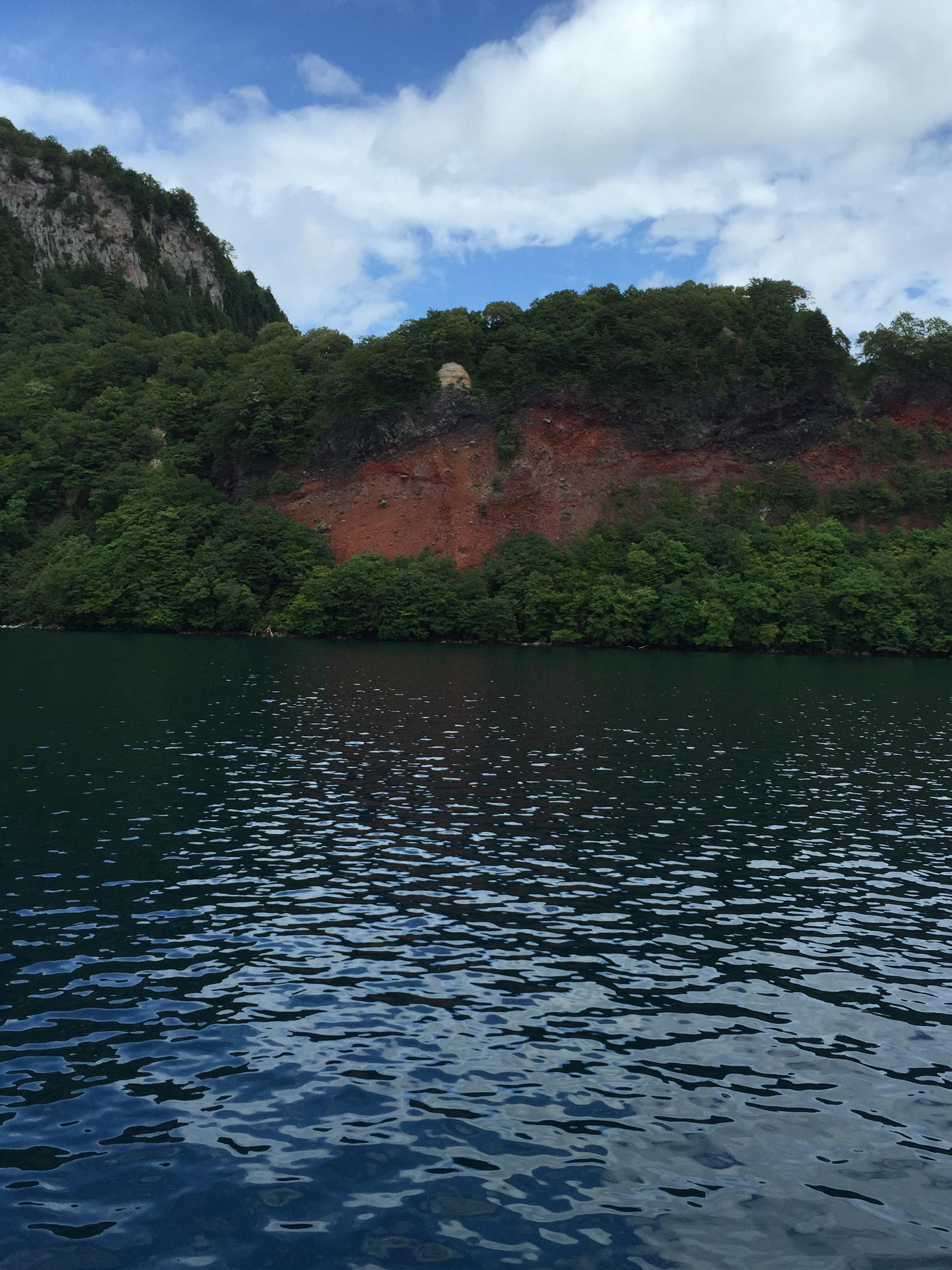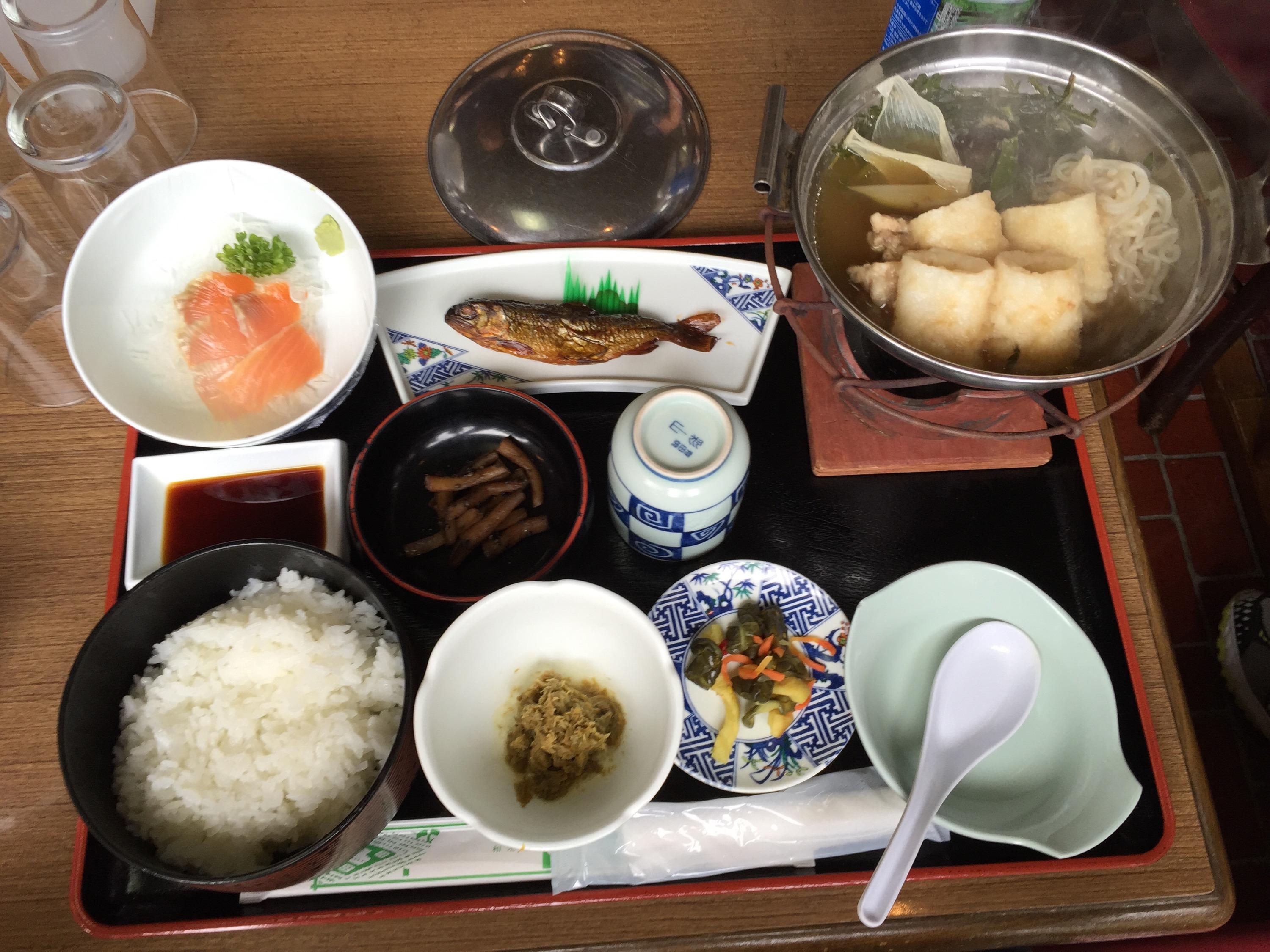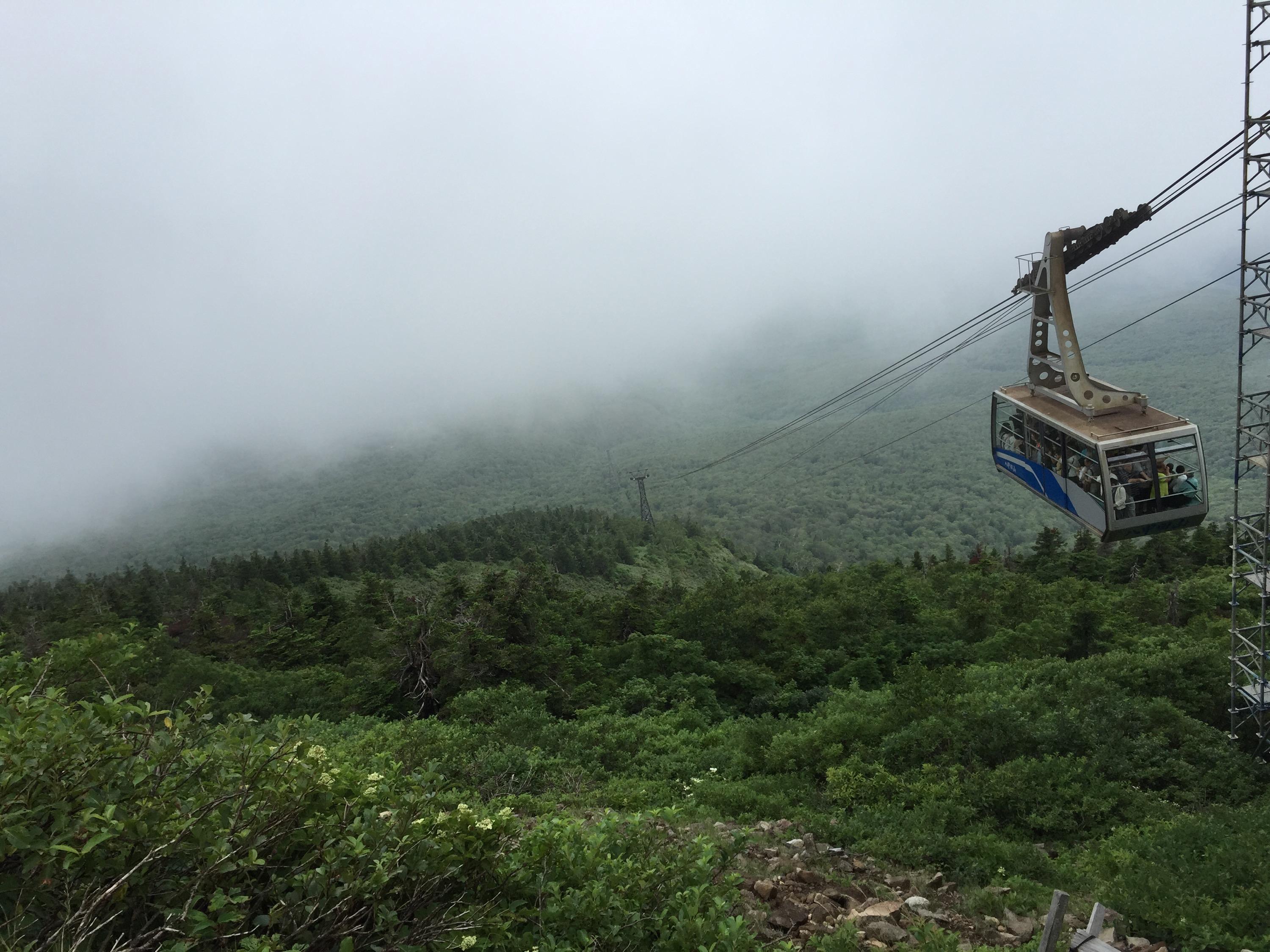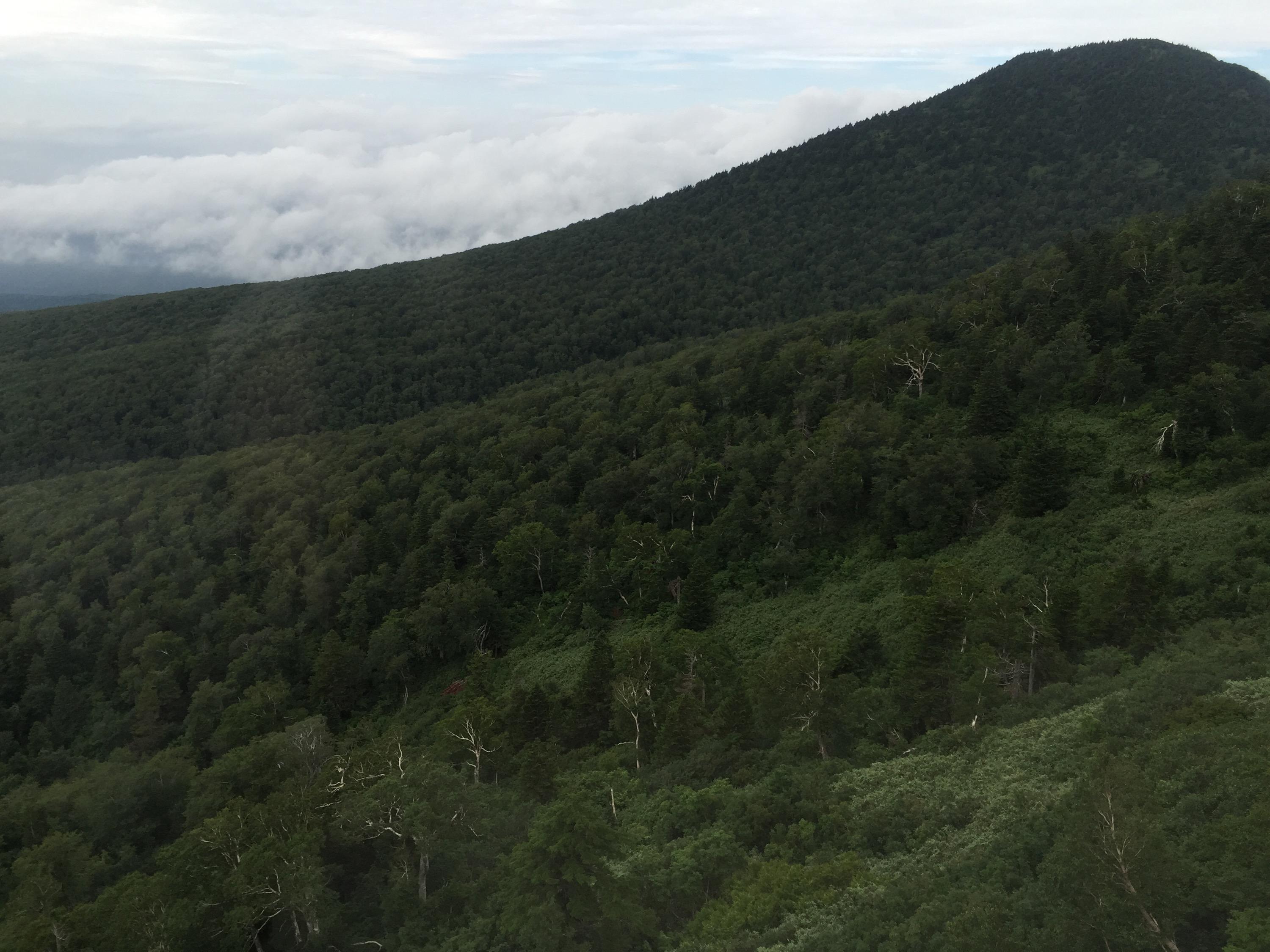Maizuru…
Port gateway to the beautiful, timeless city of Kyoto home to more UNESCO heritage sites than you can poke a stick at. Maizuru is where we were supposed to port this morning. However, thanks to an unforeseen mechanical issue in the middle of the night, we have arrived in Maizuru two hours late – which is proving right inconvenient to those who were planning 12 hour day tours to Kyoto, given that Kyoto is 70mins drive away. We spent nearly a week in Kyoto before joining the cruise, so our day today consisted of, sleeping in, waiting for our 10:30am call to go through the Japanese immigration procedures (again), then heading into Maizuru to maybe have a look around the red brick warehouses which have been converted into a Torpedo Museum, or go hunt for some fresh sushi, and definitely go find some free wifi. 
The immigration system here is quite strict, well compared to the wishy washy lack of even stamping passports that goes on between Australia and New Zealand and the complete lack of procedures between many European countries. The way the ship operates is to bring the Japanese Customs officials onto the ship, set them up in the Club Fusion Bar (which is Deck 7 Aft), and allocate passengers a time to come down to go through the immigration process – paperwork, passports scanned, photo taken, finger printed. We went through this entering Japan at the airport, and again re-entering Japan from Russia, and now we have to do it again as we re-enter from South Korea. No biggies. Except that on the Russia re-entry, no one seemed prepared to wait for their allotted time. So, when we turned up at the 10:30am time on our card… we found a queue that snaked back past the Atrium. :/ It took an hour and a half to get to the front of the queue and was well after midday before we got off the ship that day.
So today, all the same bureaucracy is going down. We’ve been informed not to go down to immigration until 2 hours after the time allotted on our original cards (issued before the mechanical issues in the middle of the night)… but do you think the passengers are doing what they’ve been asked? Not on your life. Obviously those on tour have been given priority times over people like us who have no particular plans for the day (and so they should), but given there is very little to do in Maizuru, I can’t for the life of me figure out why somewhere around 500 or more people are lined up from the Club Fusion Bar, the entire length of the ship to the Princess Theatre (as Deck 7 Forward as you can get). Crazy.
<<video>>
It’s now about midday, and almost two hours after our original allotted time, so just about the time we have been told we can go through the immigration processes – and there is still a queue of well over 150 people down there. Where do they think they are going? The ship is in port until 11pm tonight, so even if you had things to do ashore today (in beautiful, culturally significant downtown Maizuru?!), I can’t see the point in standing in a queue for hours getting cranky about things that are beyond everyone’s control. I guess we will just have to ring for tea for two and enjoy an elegant morning tea while we wait for the queue to dissipate. 
*insert elegant classic music to accompany our civilised tea for two in the stateroom*
So, we eventually went down to the Club Fusion immigration at about 1:30pm. Would you believe we waited less than five minutes and were processed back into Japan? Fancy that. Oh and look, we still have 10 hours to spend in Maizuru, famous port town to Kyoto.
We did end up heading off the ship around 2pm… mostly in hunt of two things – wifi and fresh sushi. 
But we did find the visitors information centre which was all set up for the tourists off the ship. There were ladies doing tea ceremonies for people, there were others playing shakuhachi, people trying on yakuta, groups folding origami and of course, heaps of us sitting around enjoying the music and the free wifi. Happy, happy, joy, joy all round.
So glad we spend nearly a week in Kyoto before the cruise, instead of trying to cram so many culturally significant sights into the one day available through the Maizuru port. Many people on the ship were less than happy at dinner tonight.

